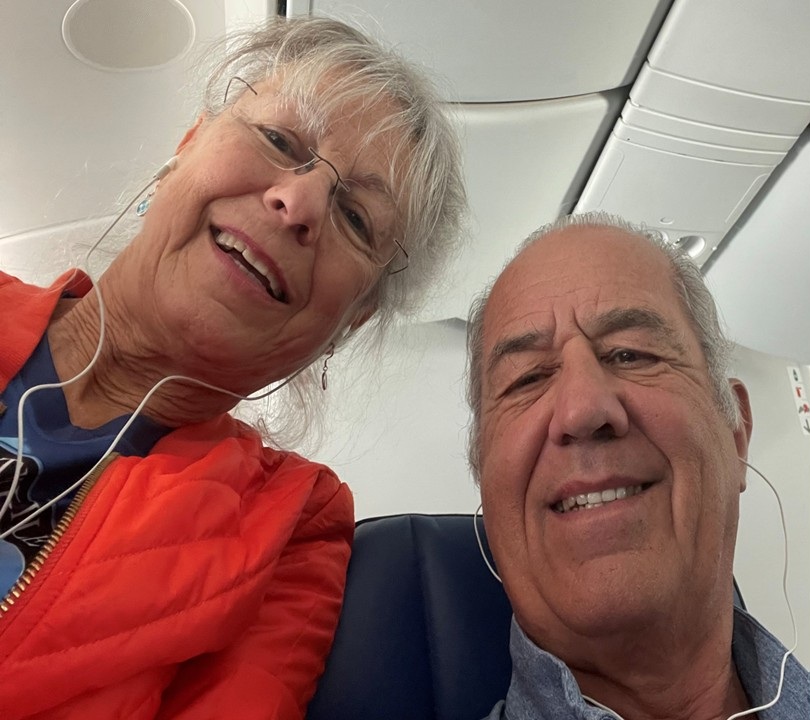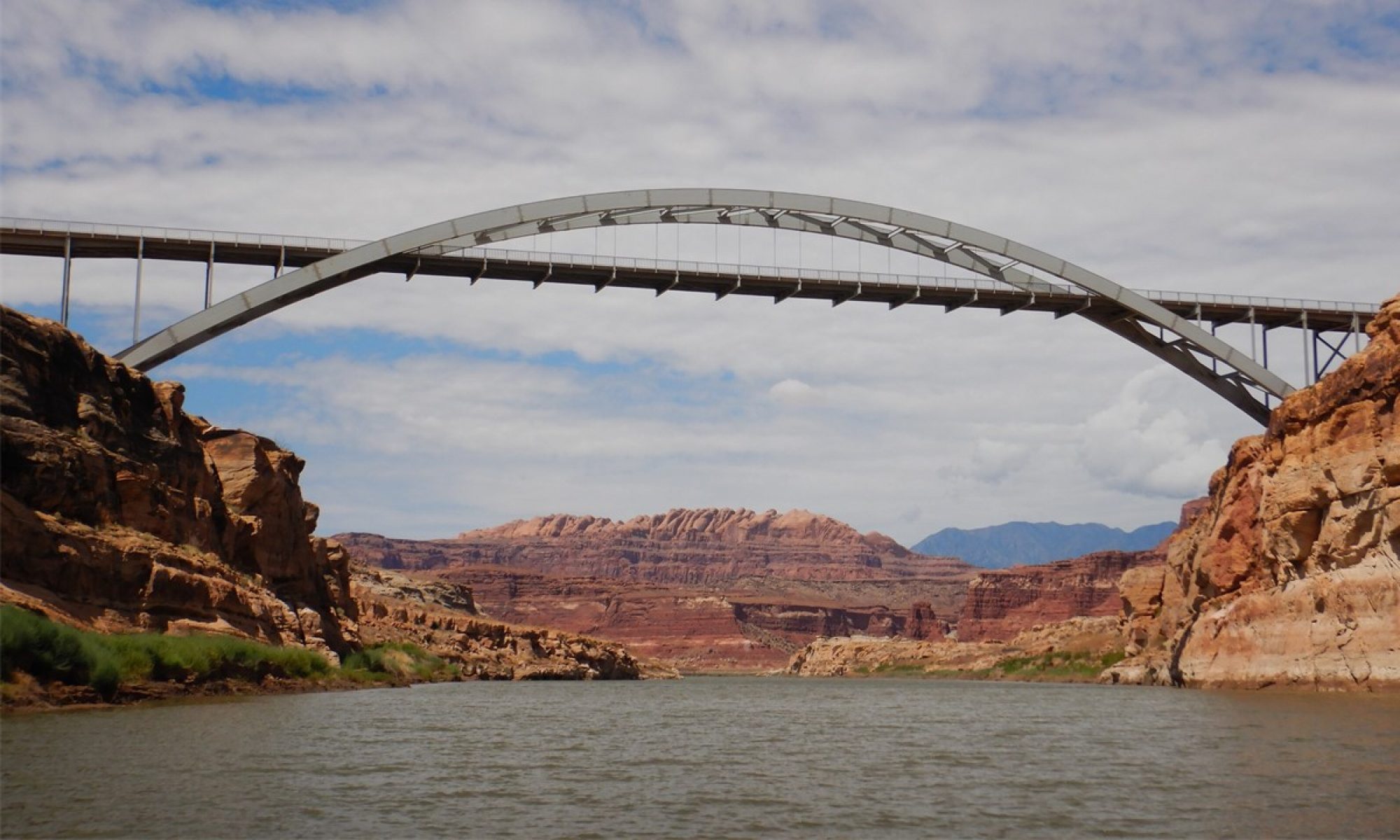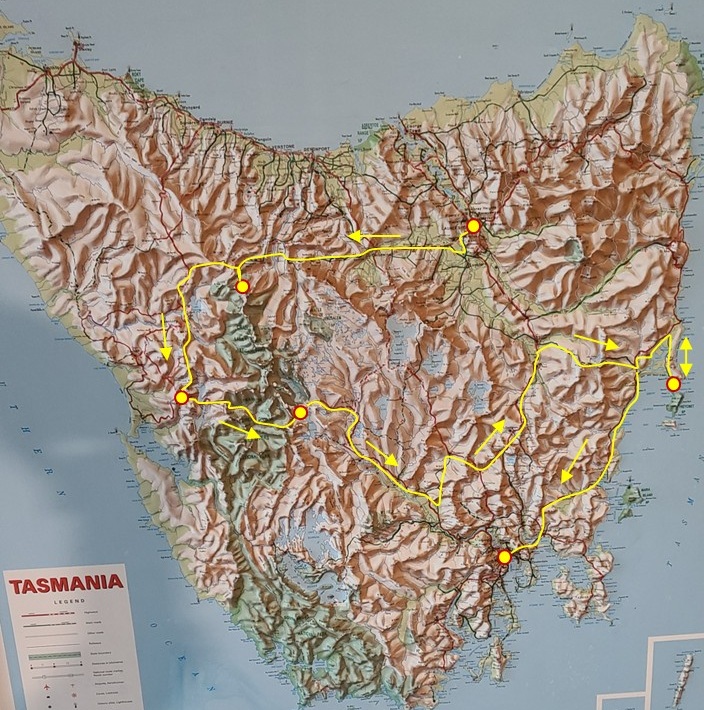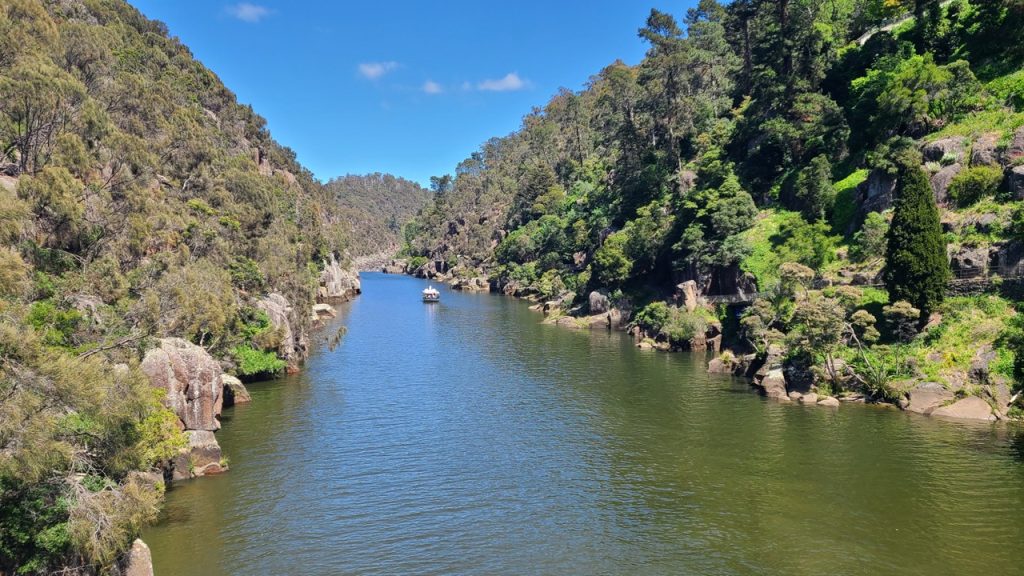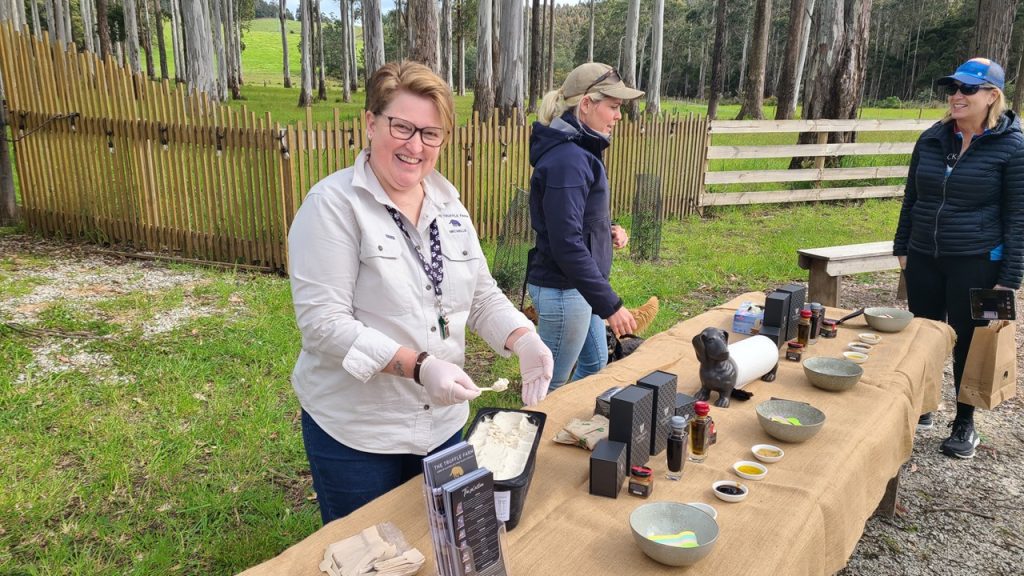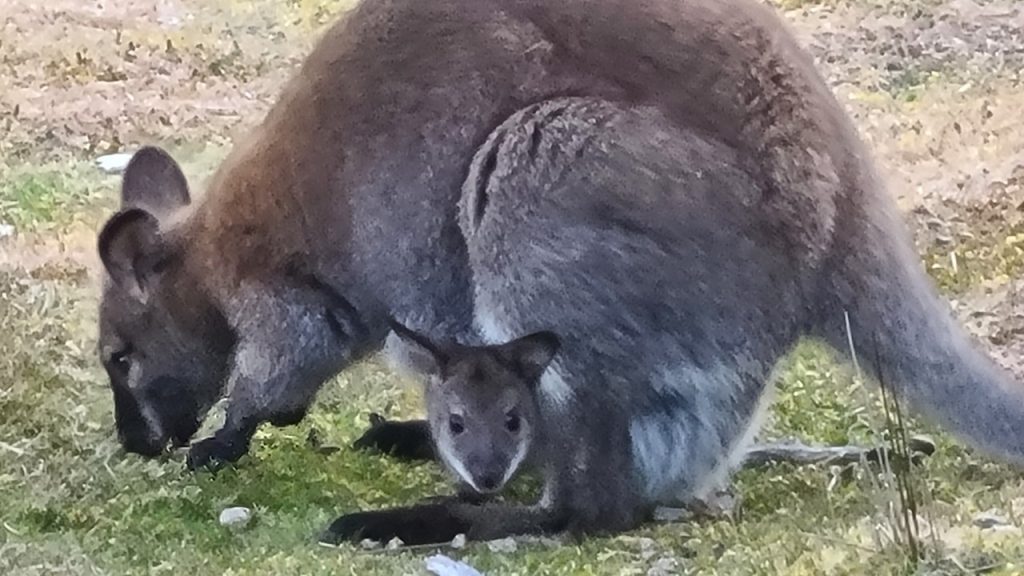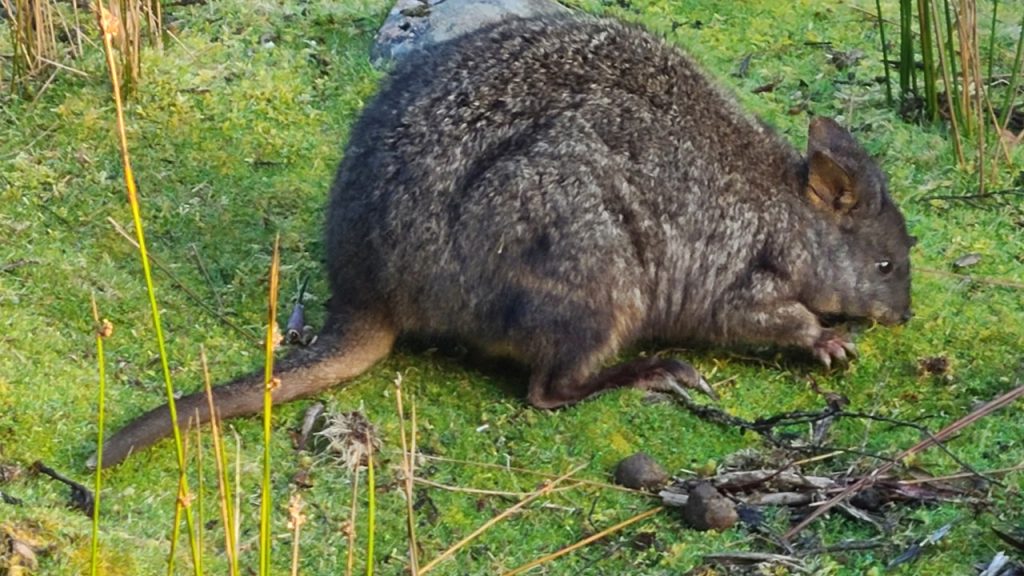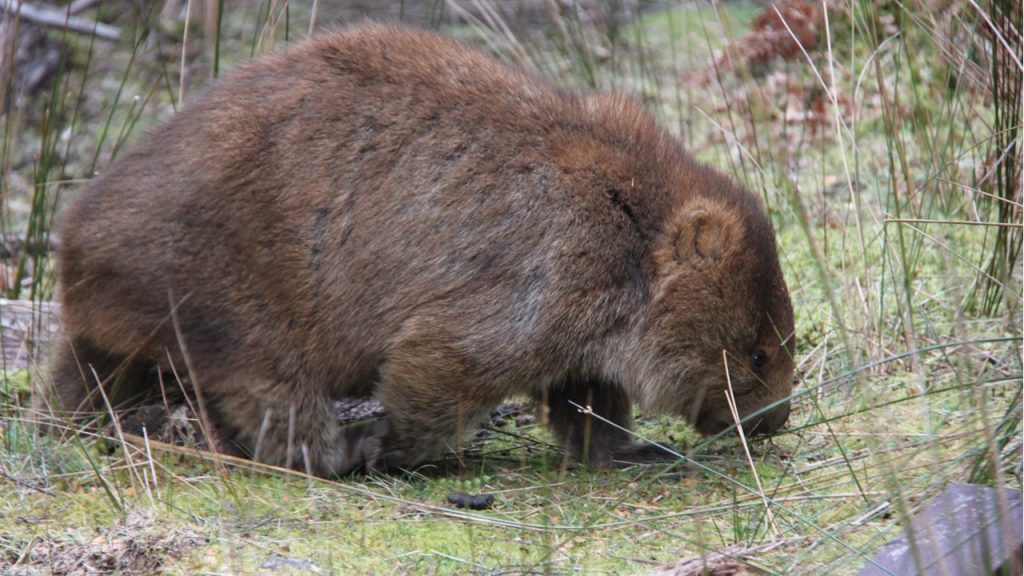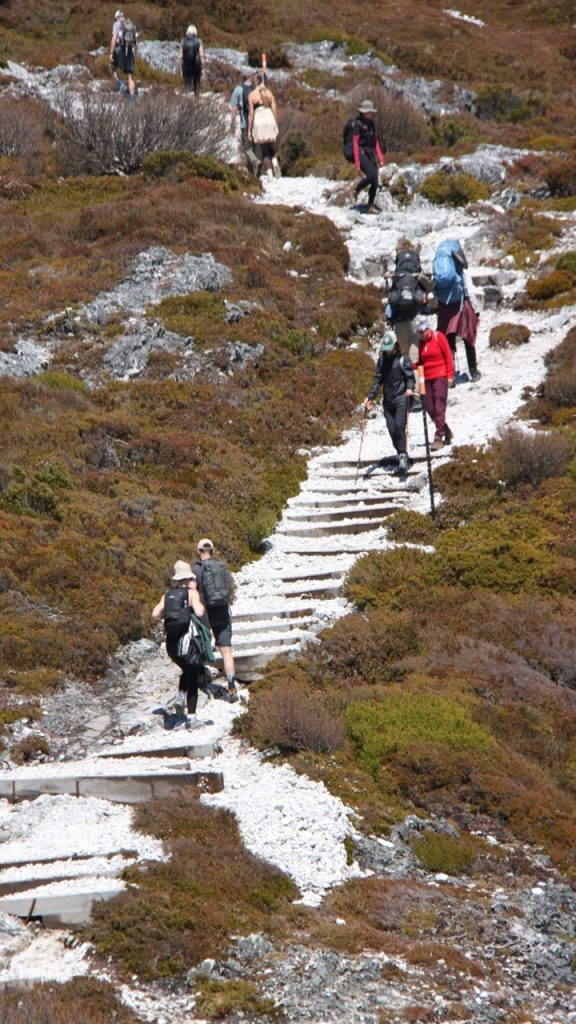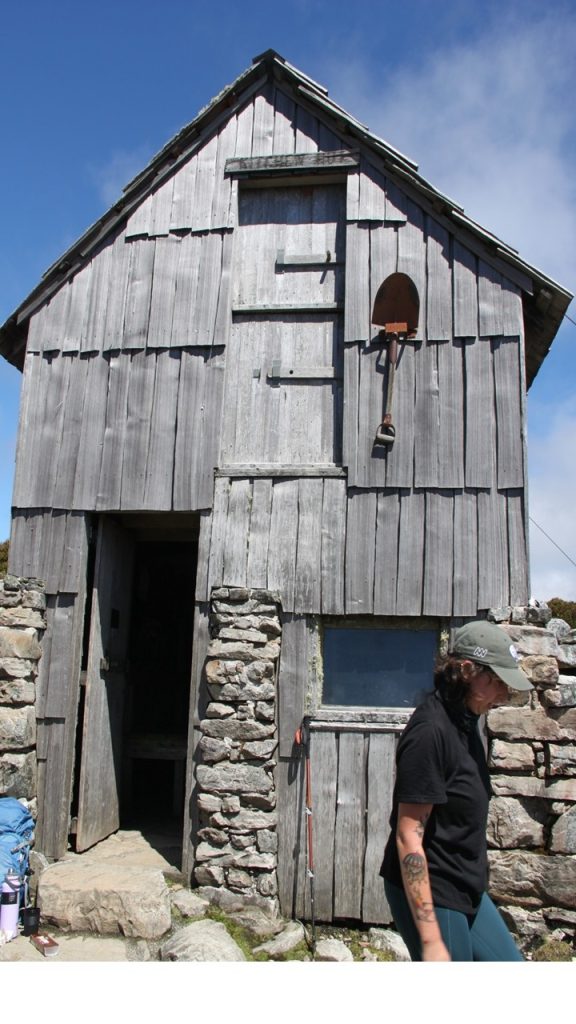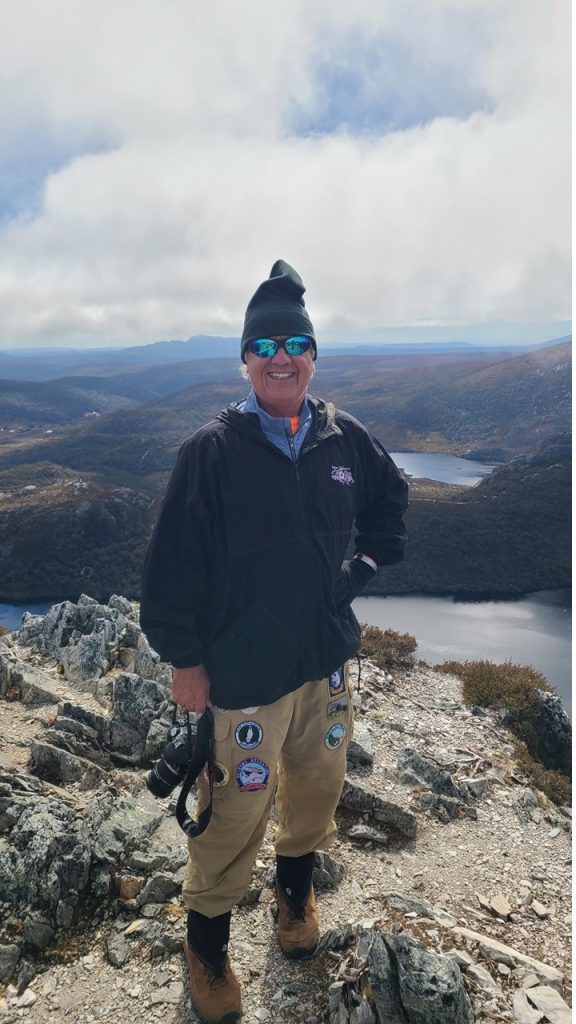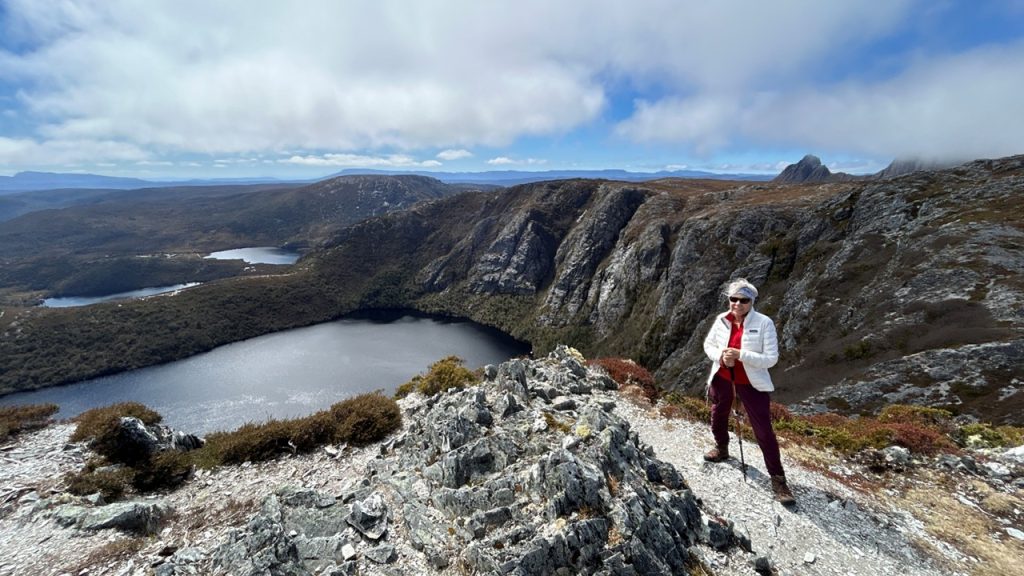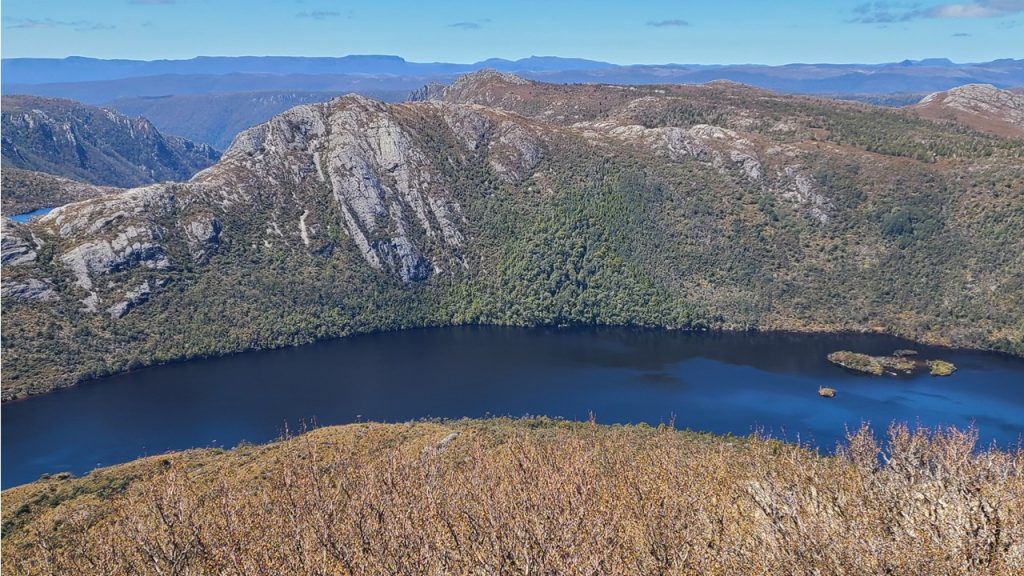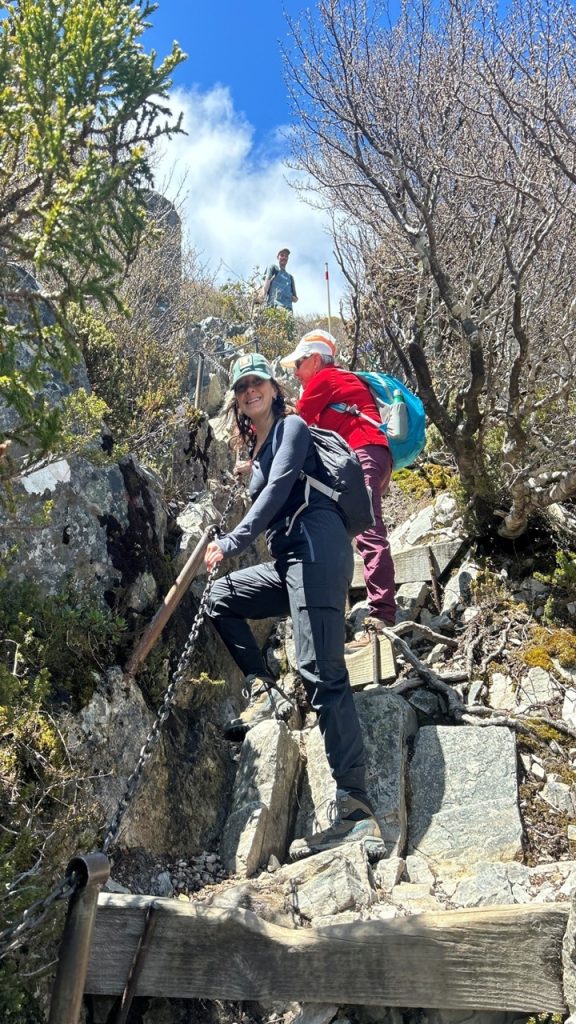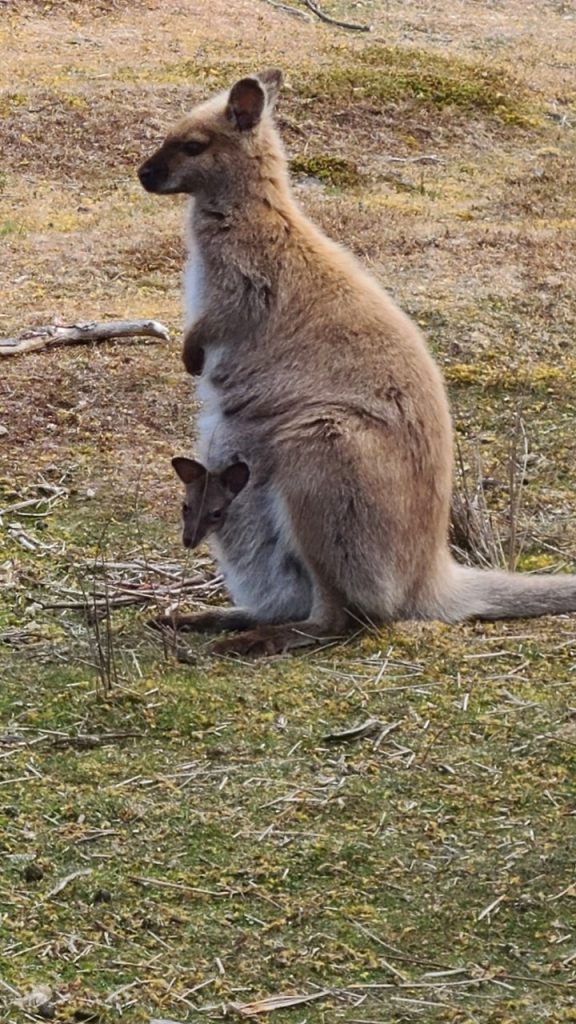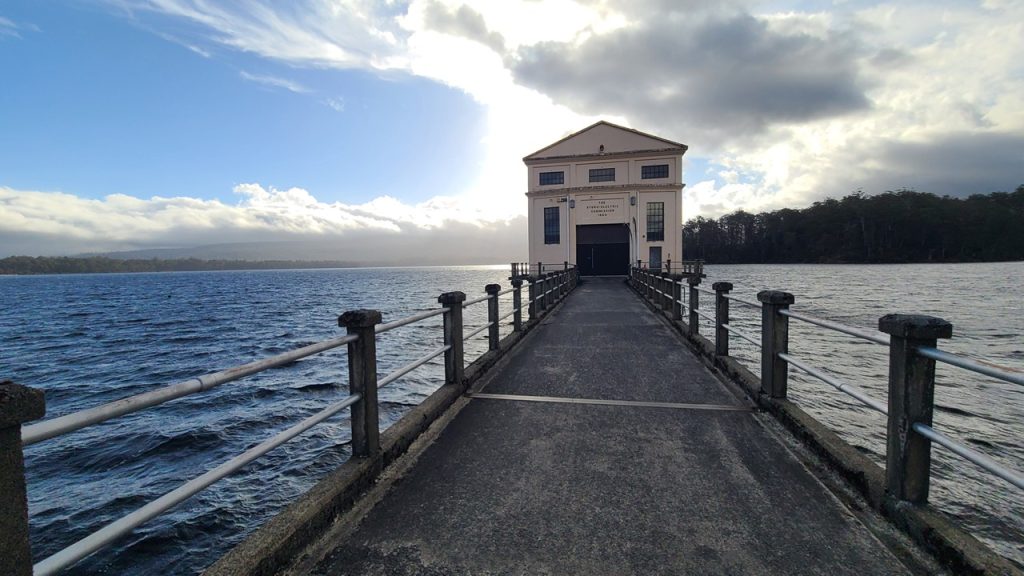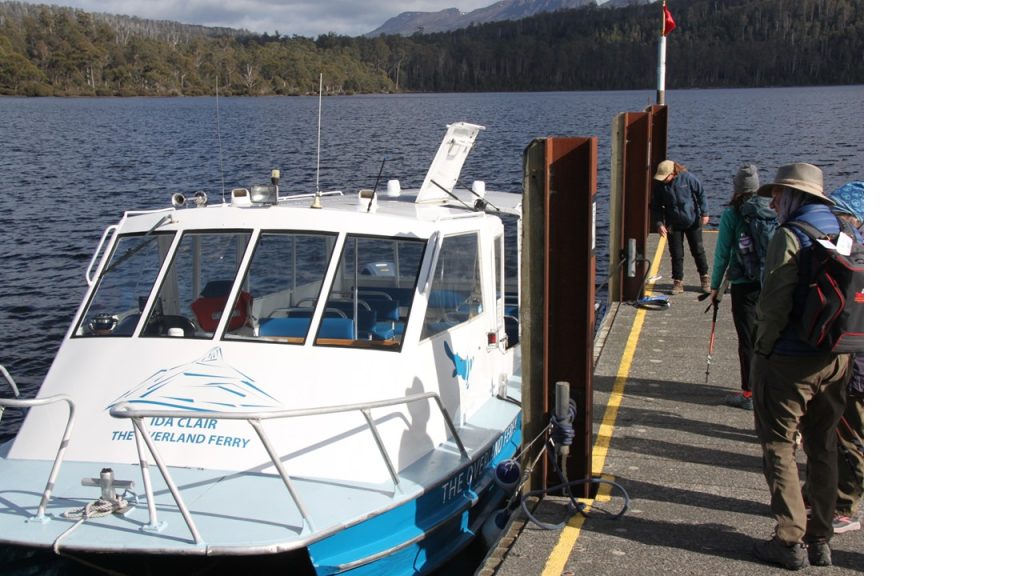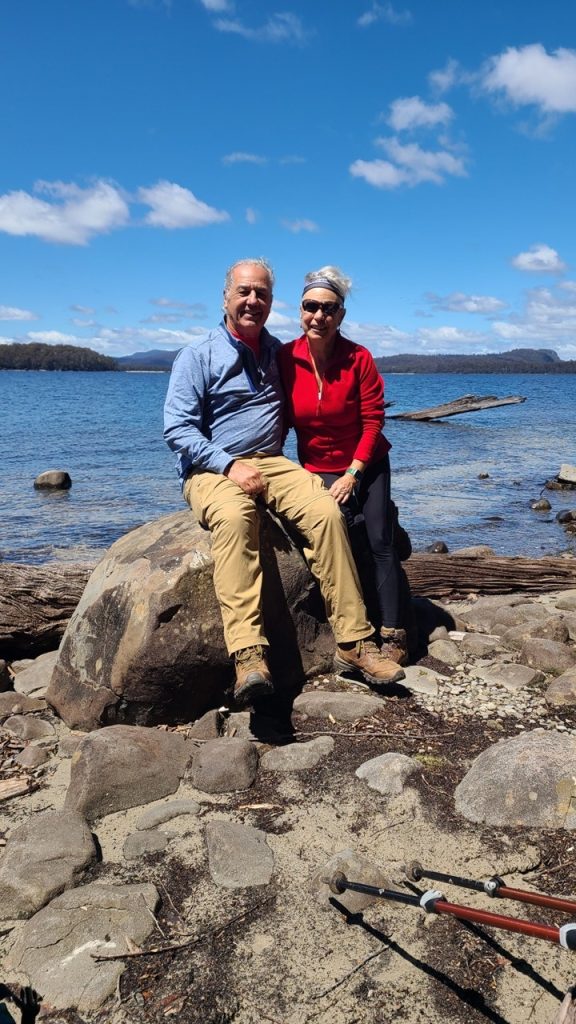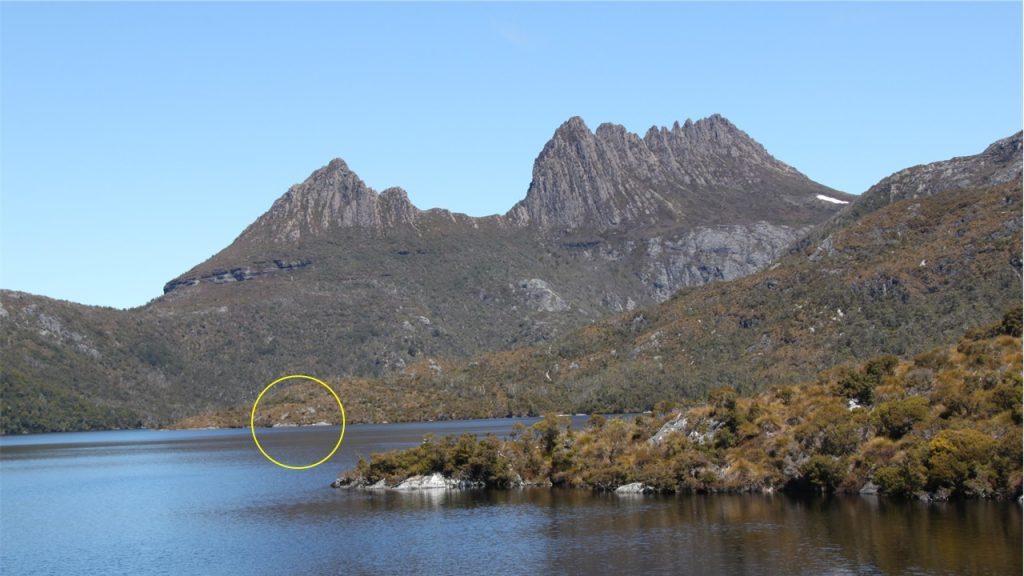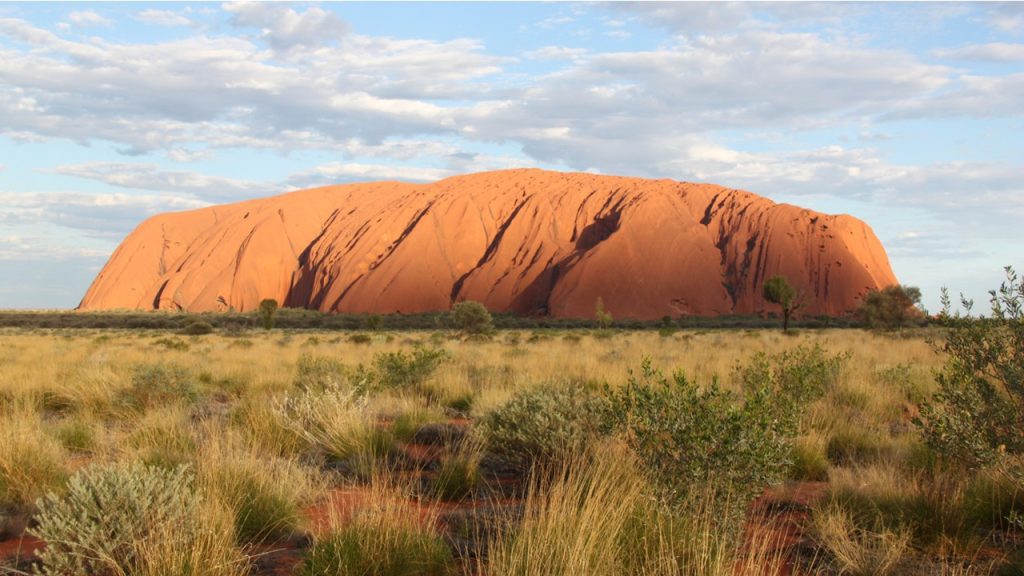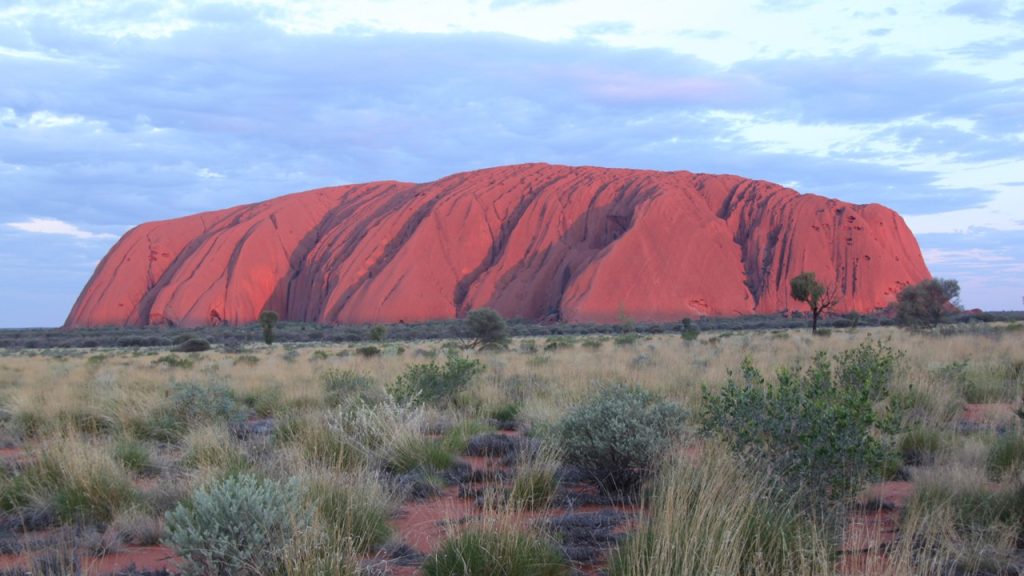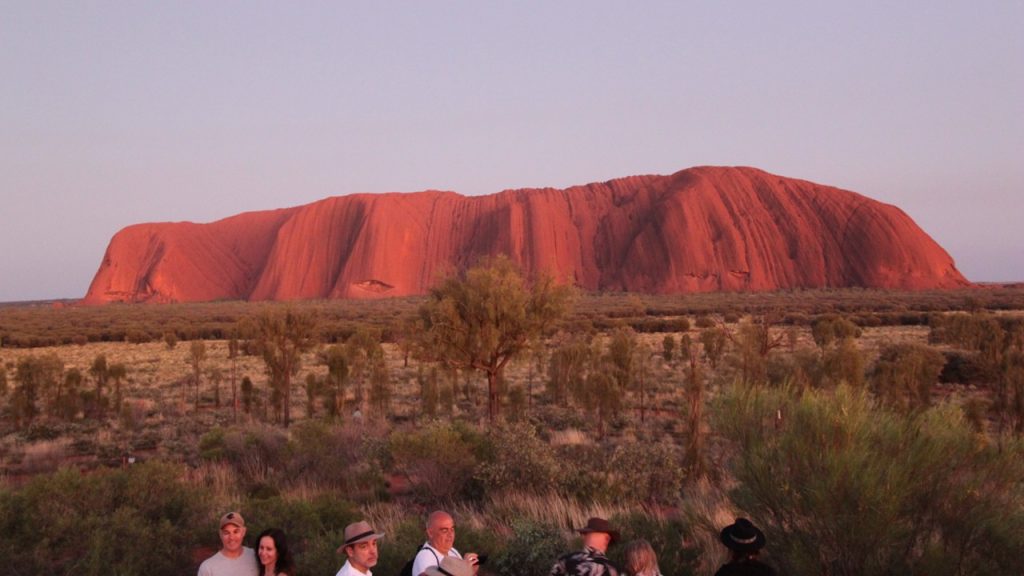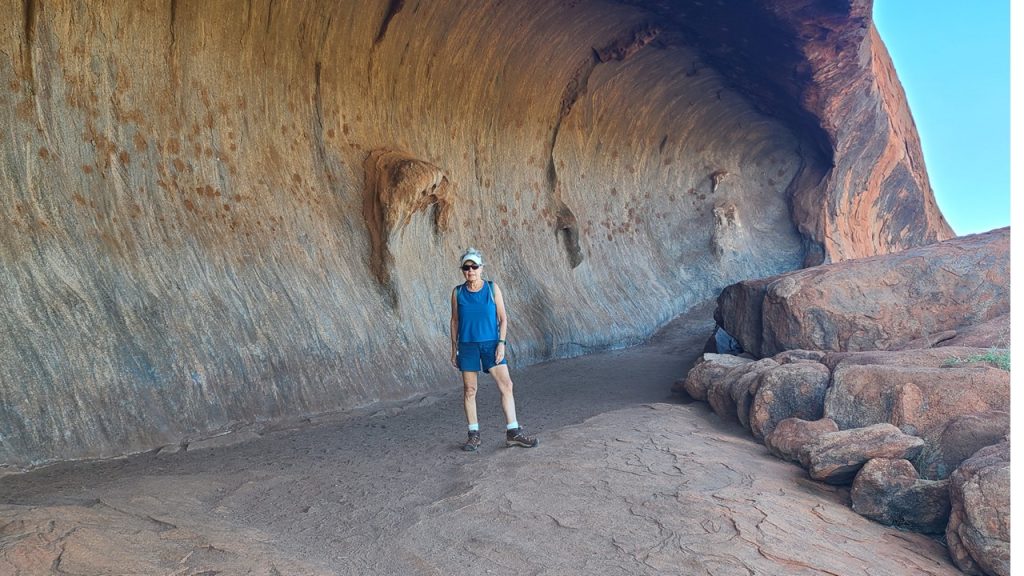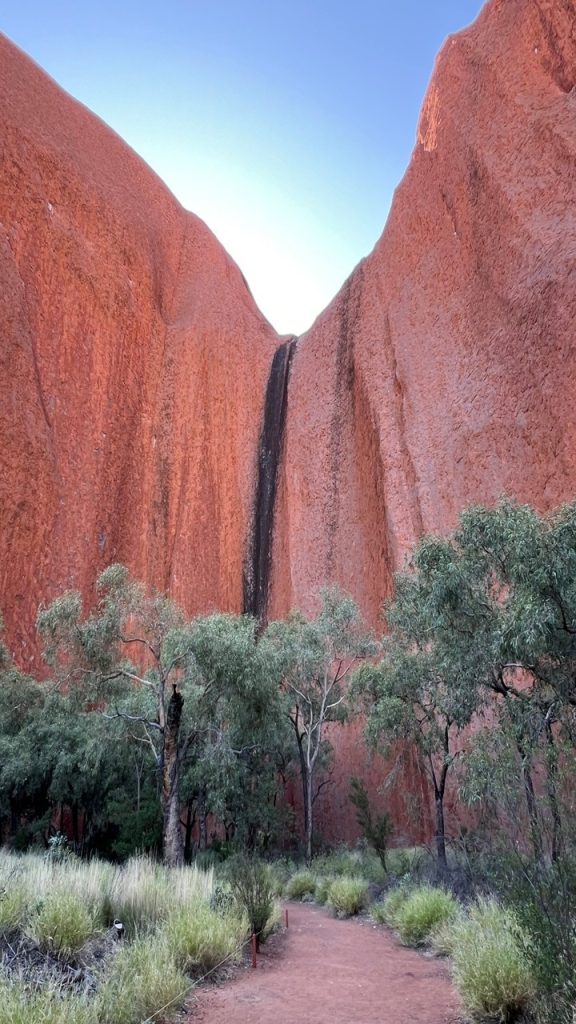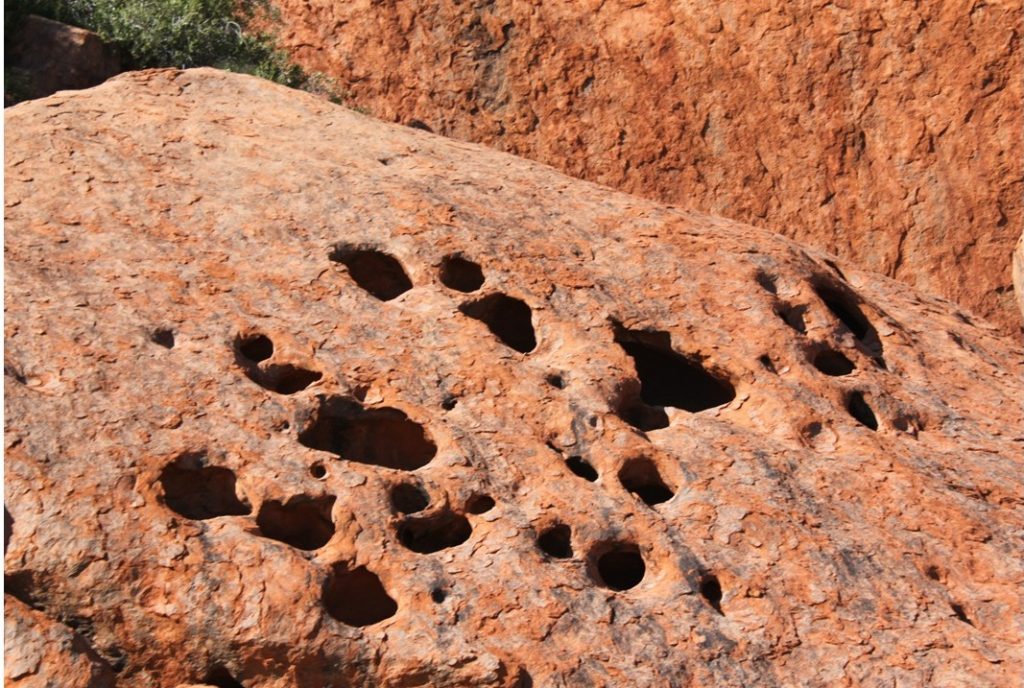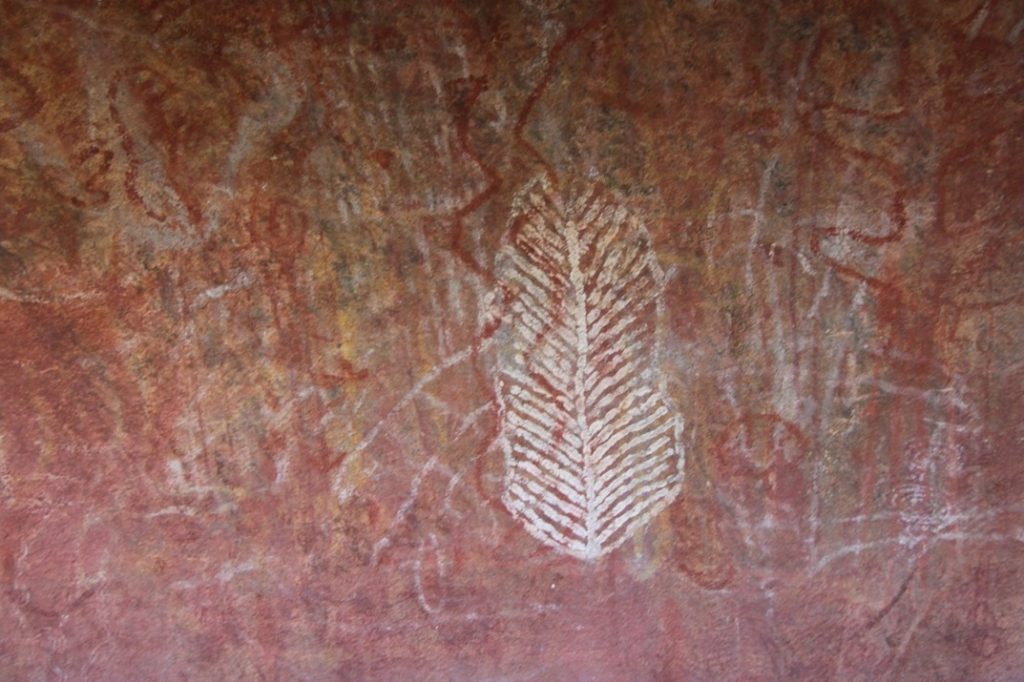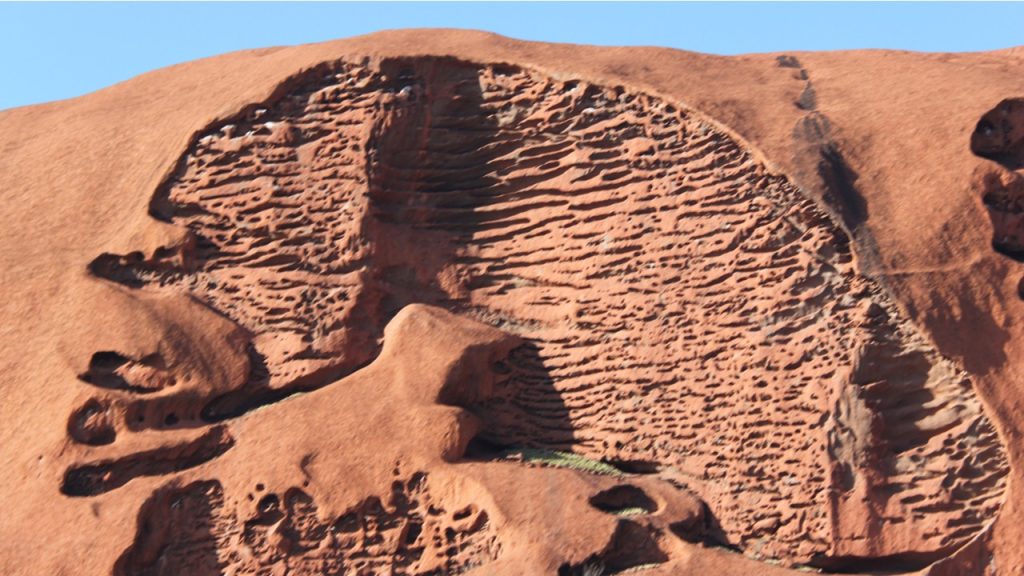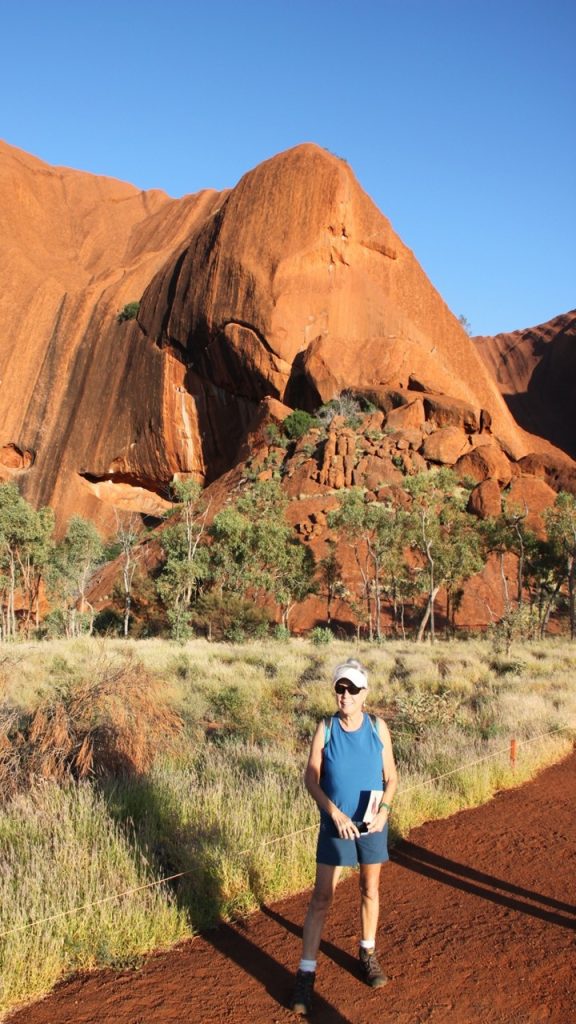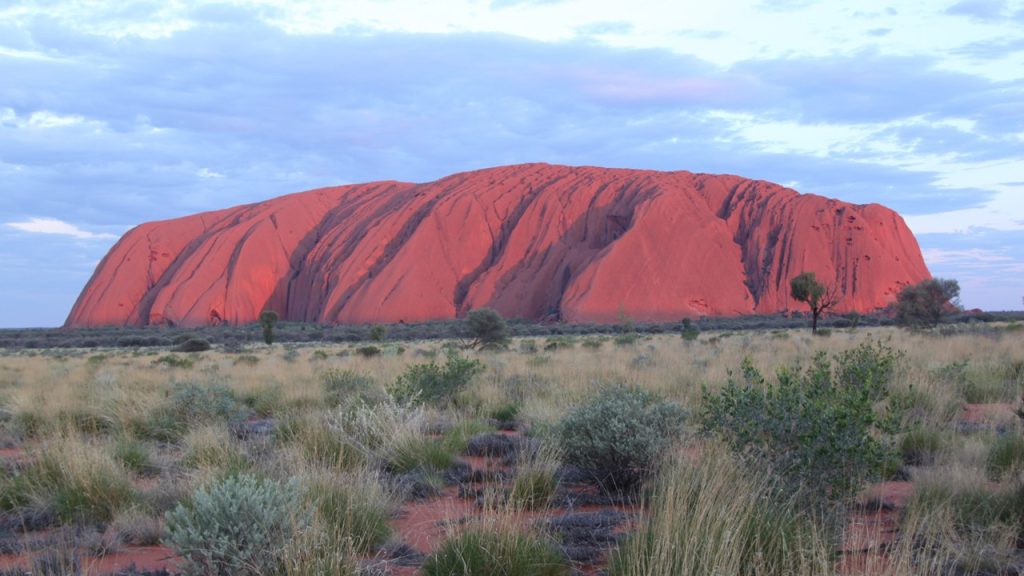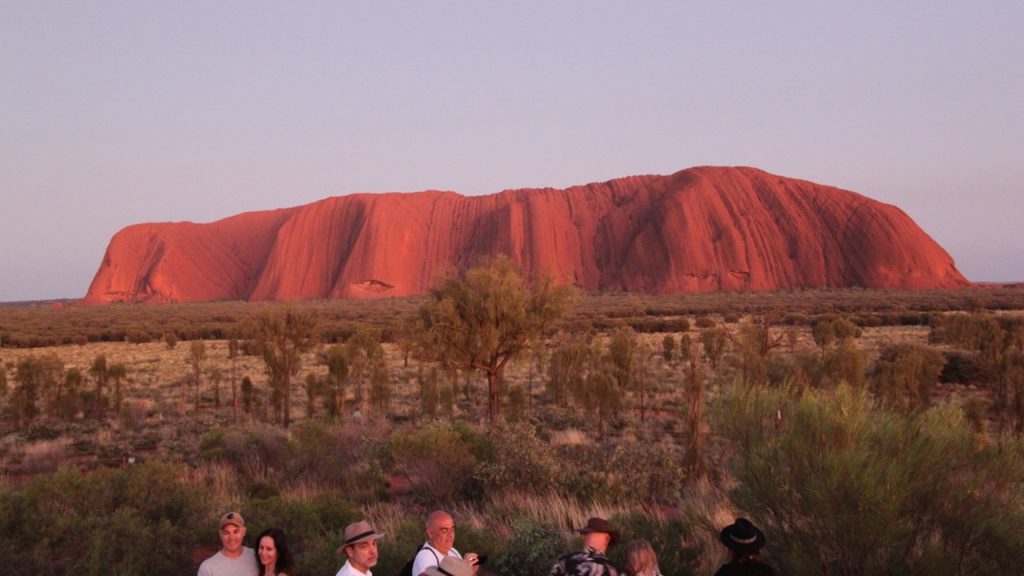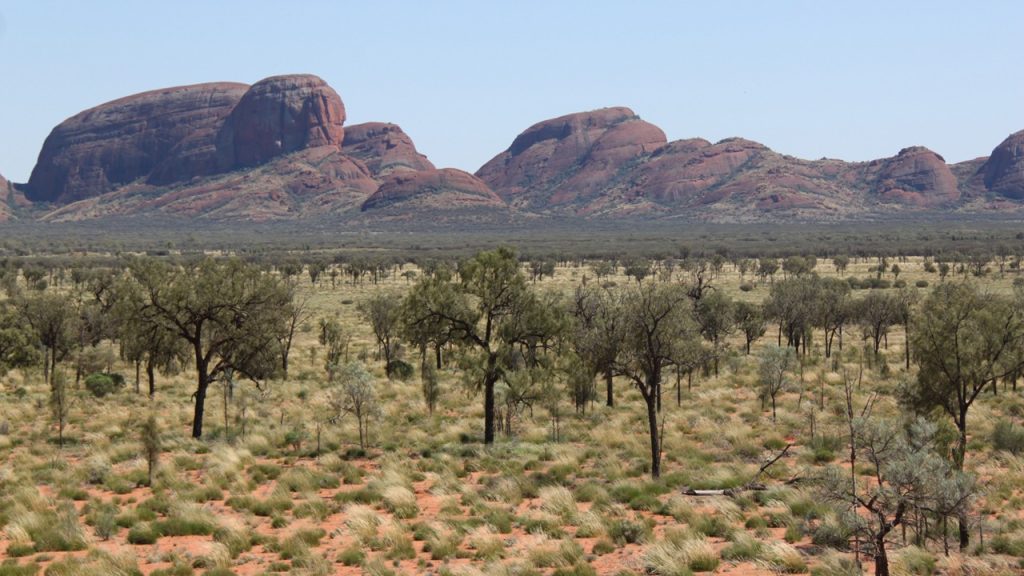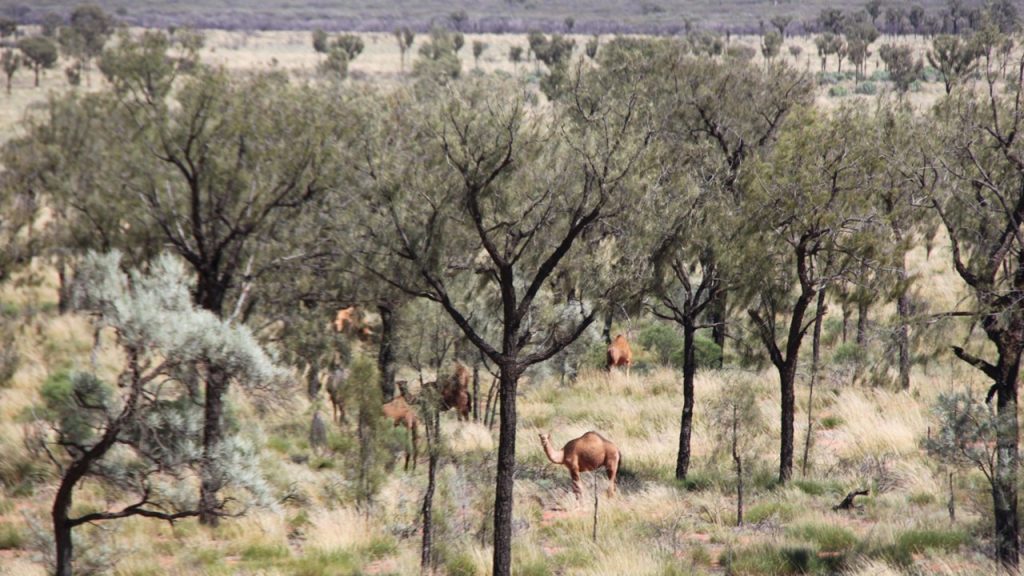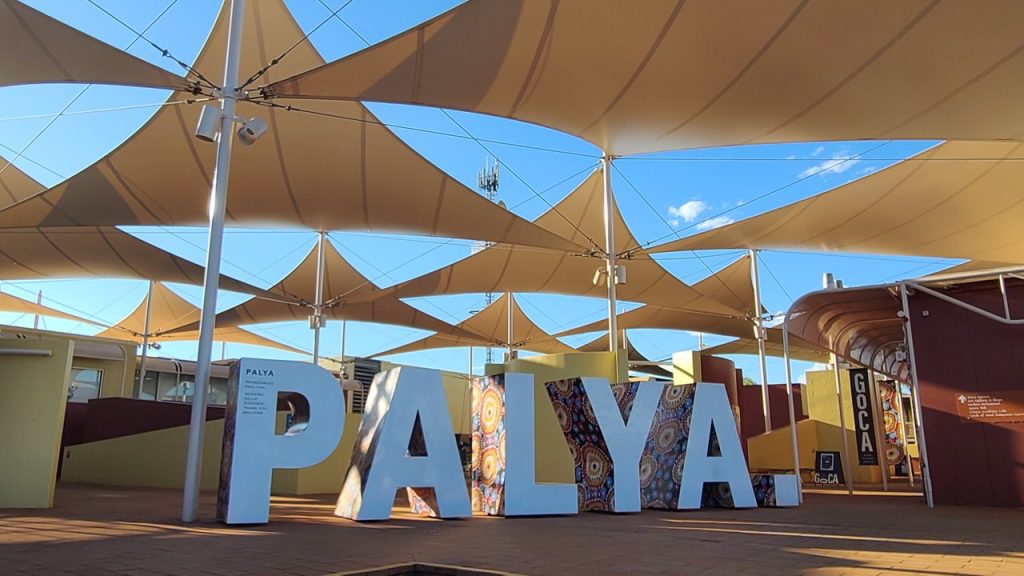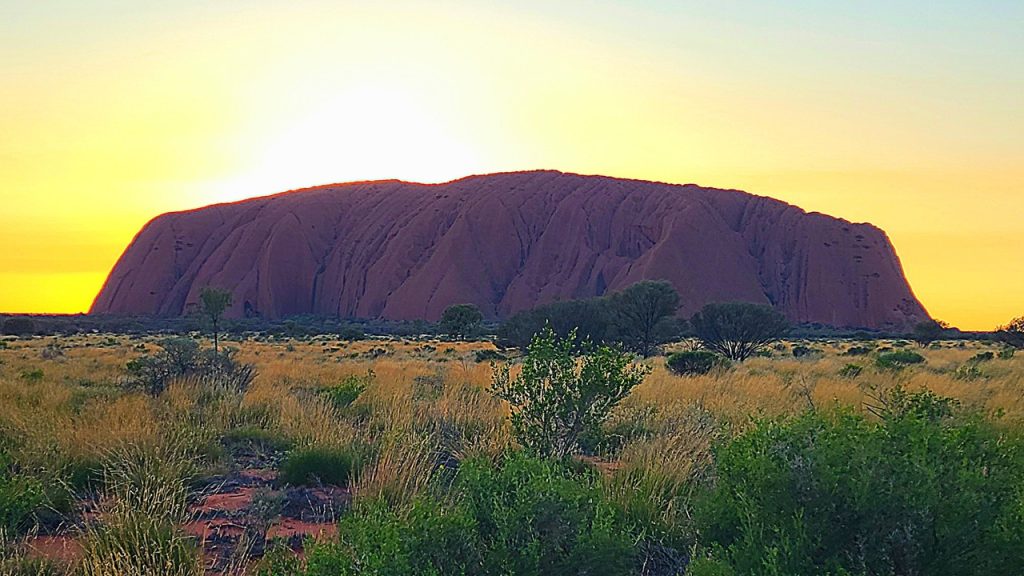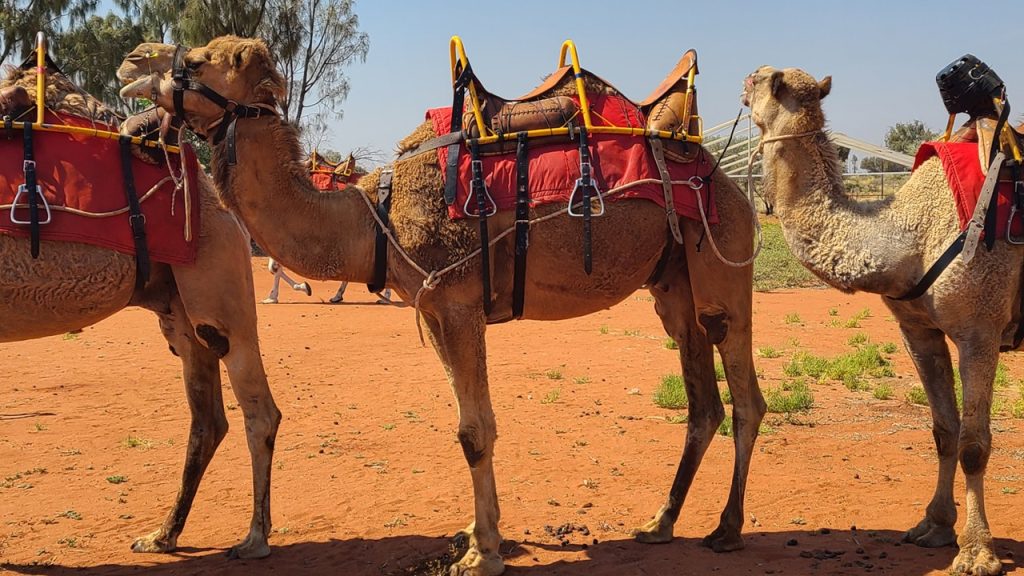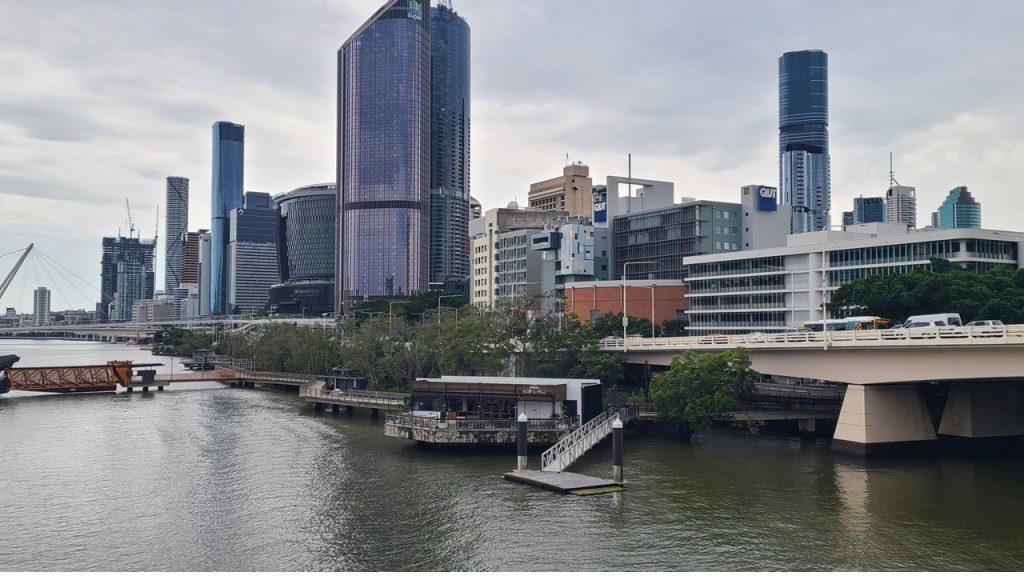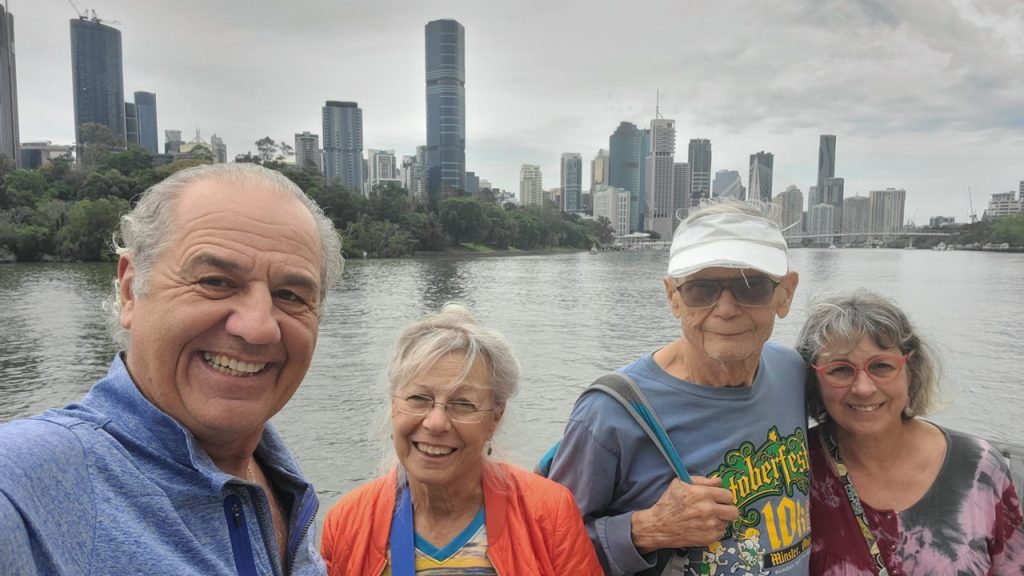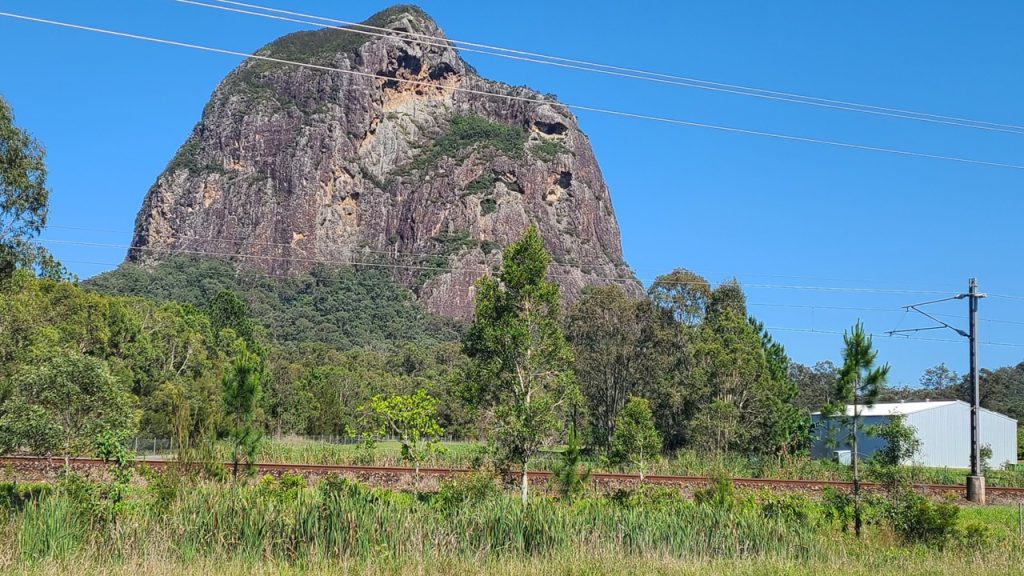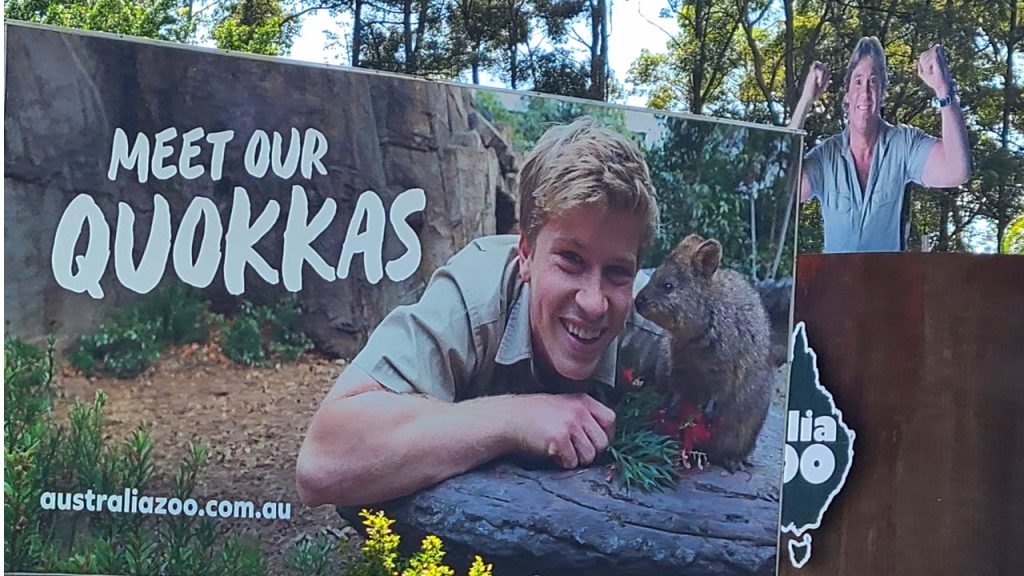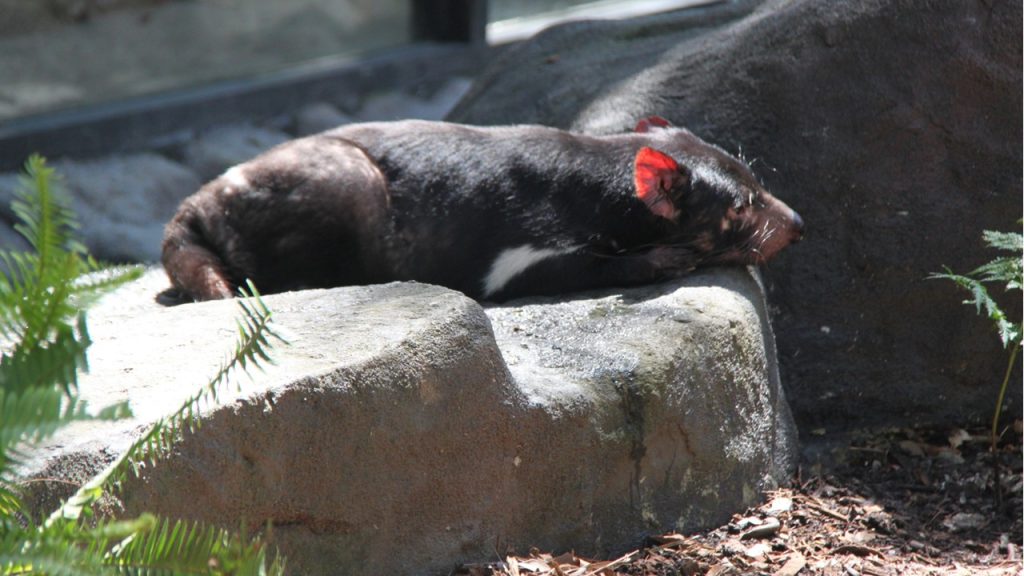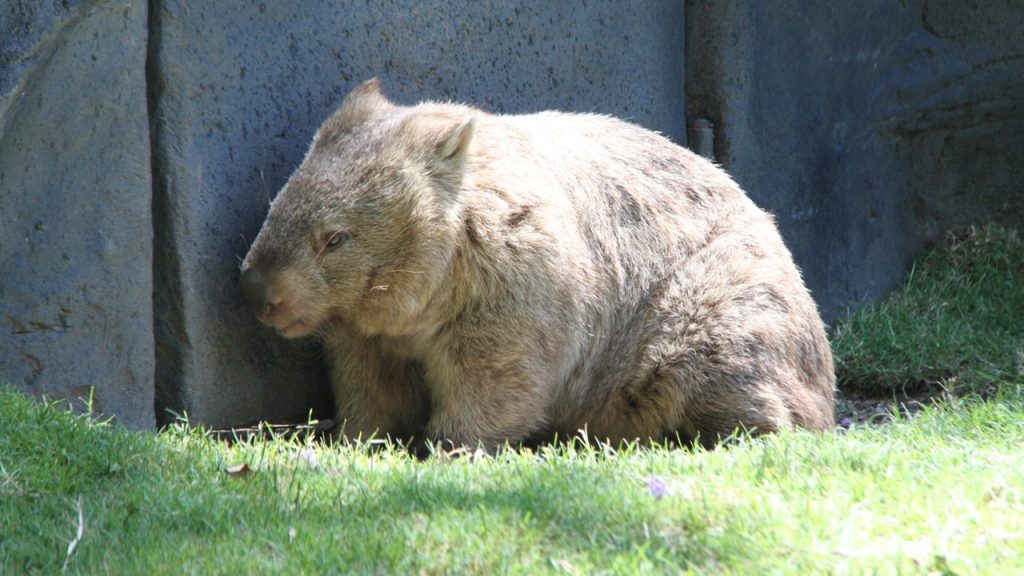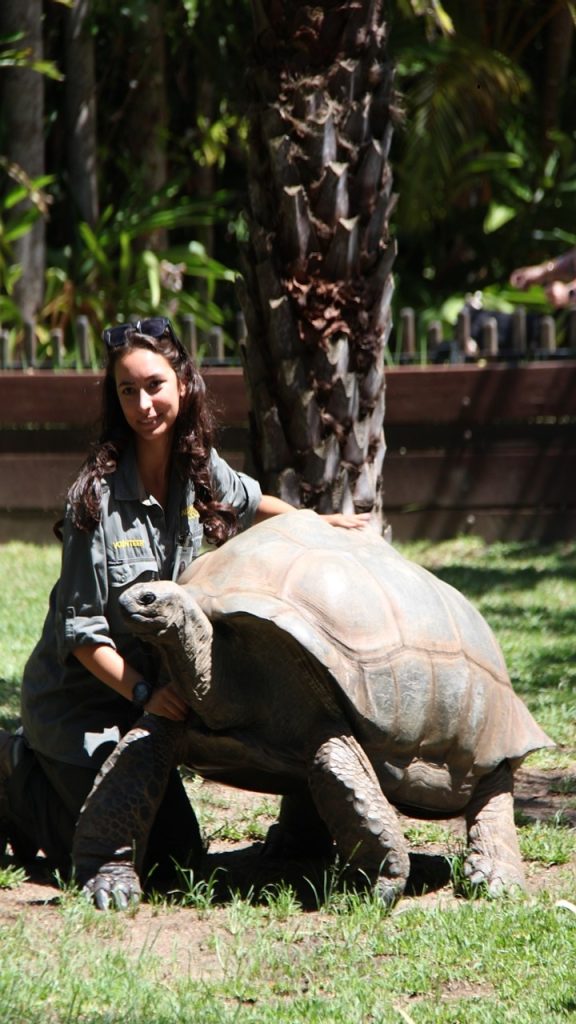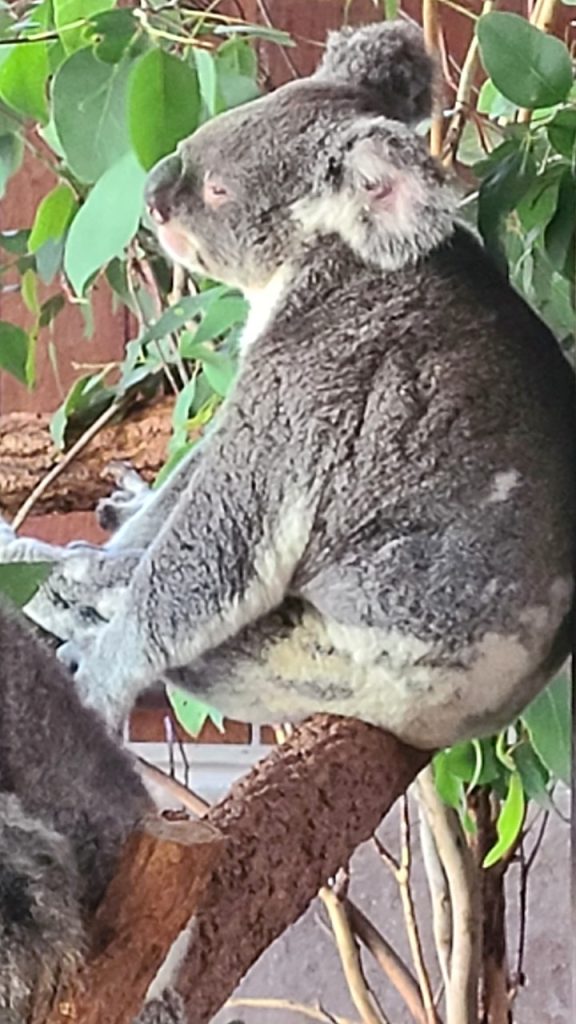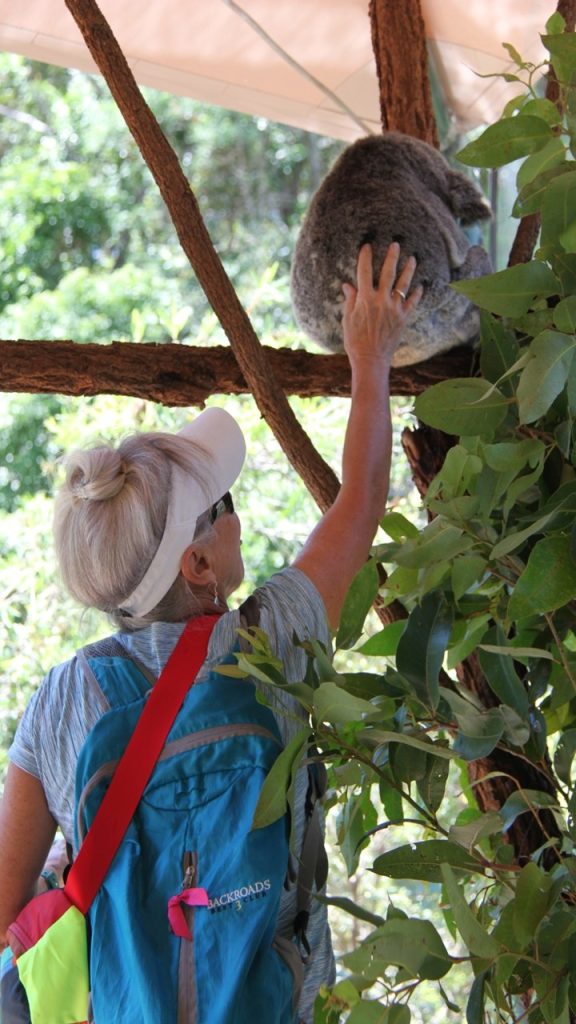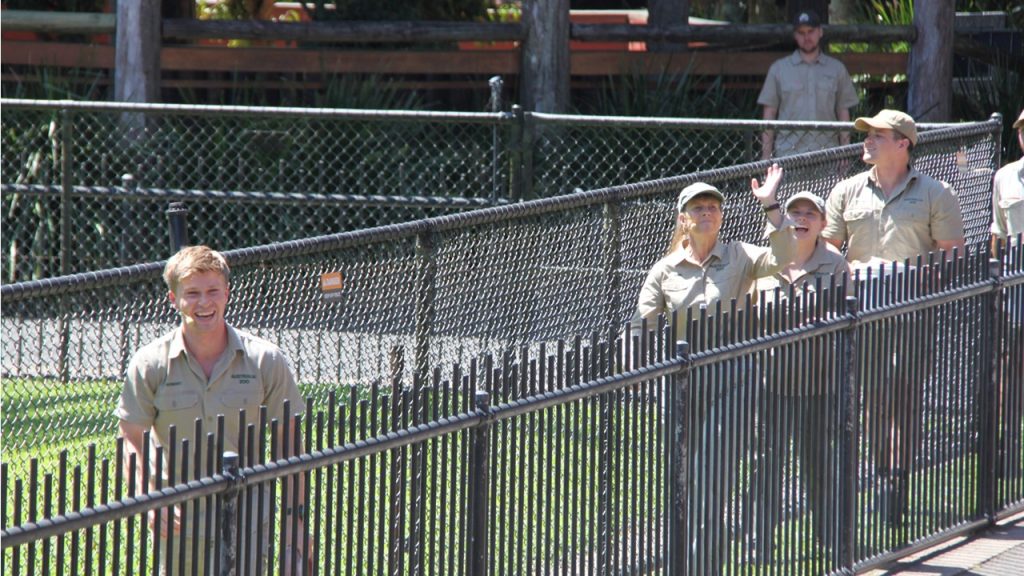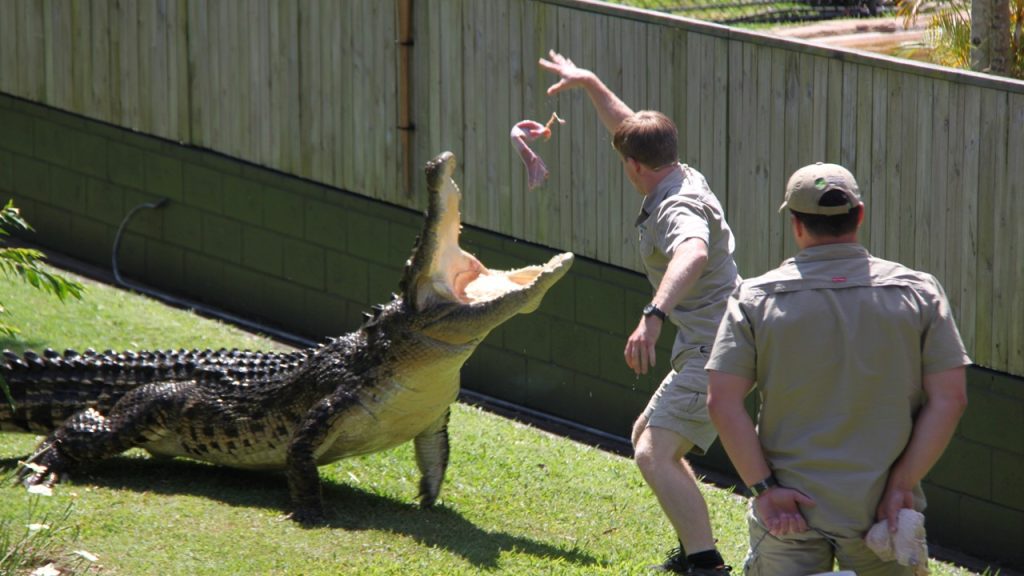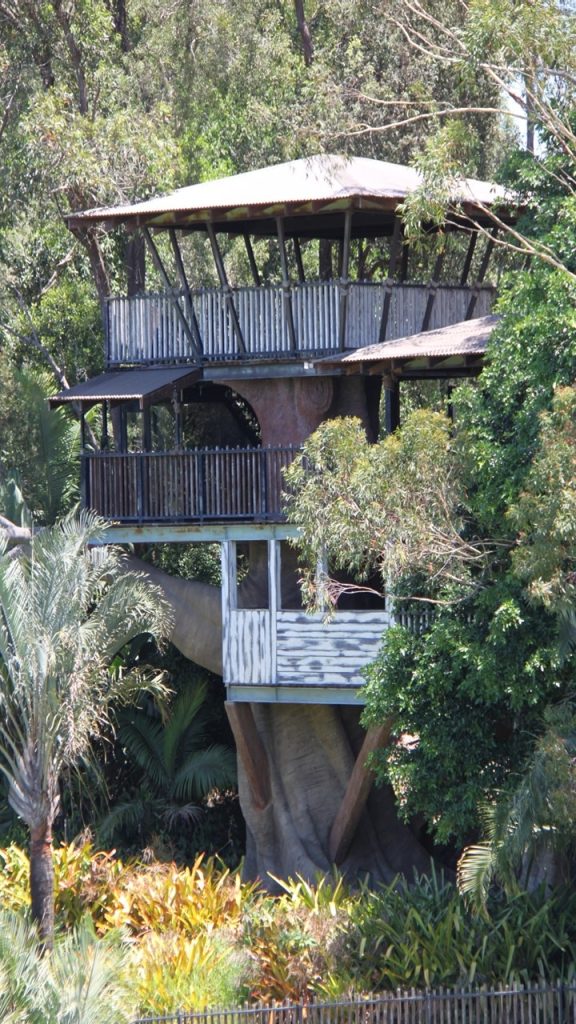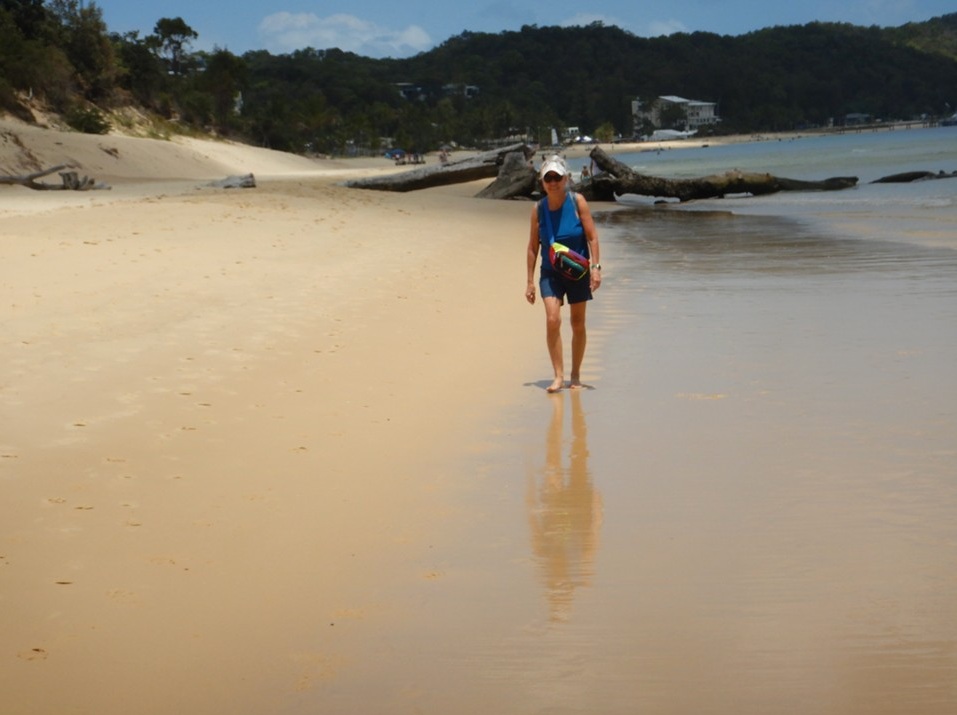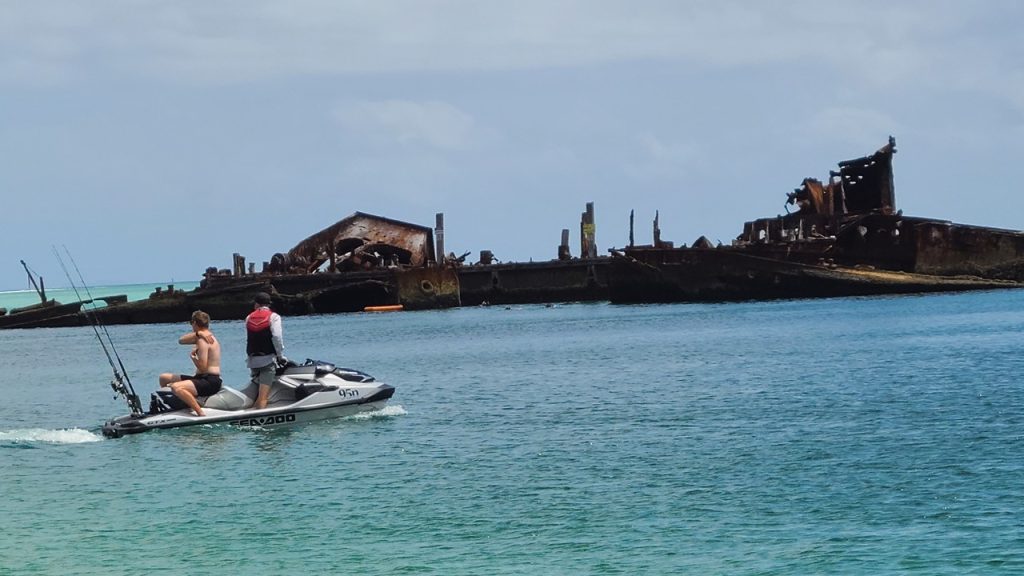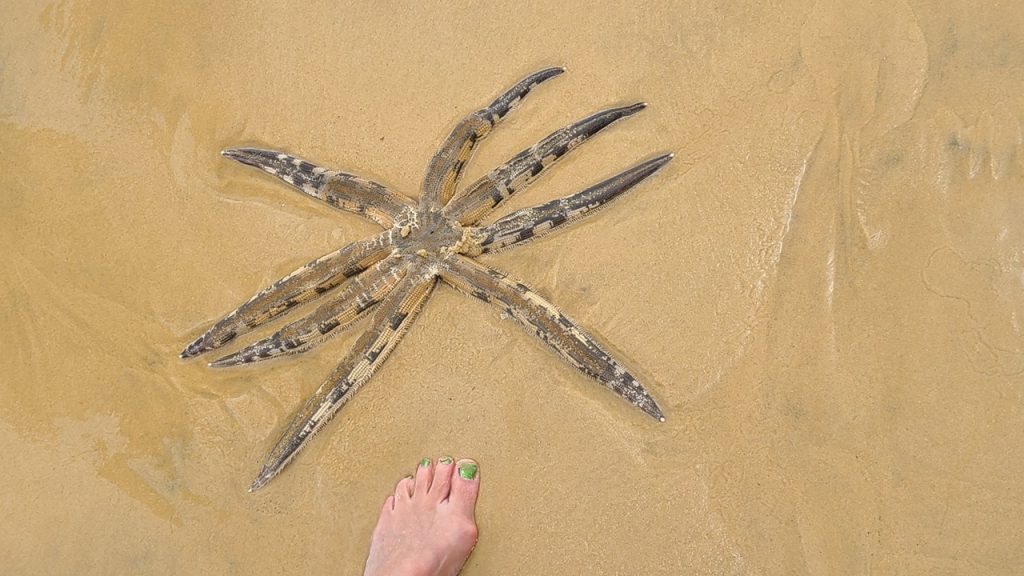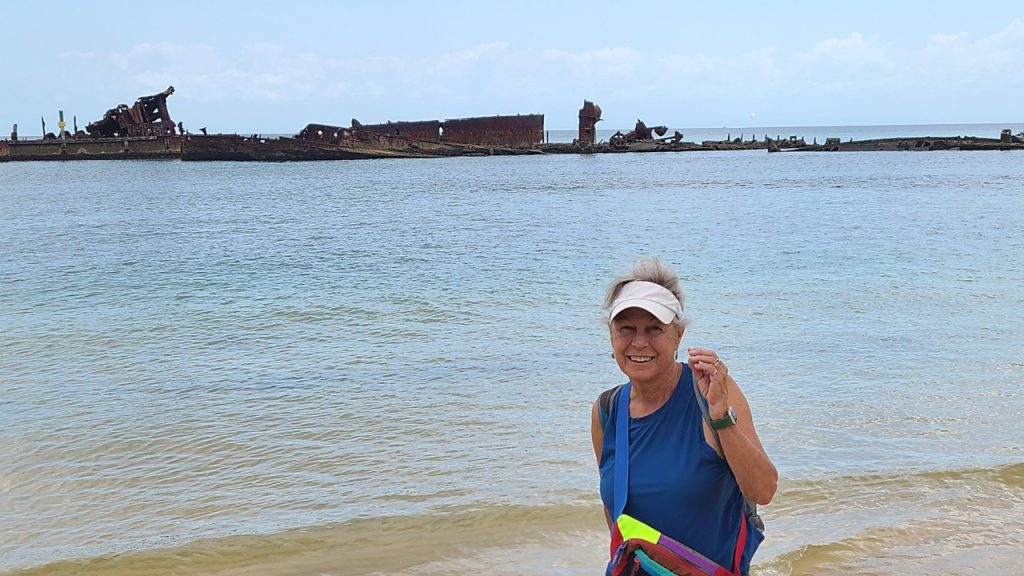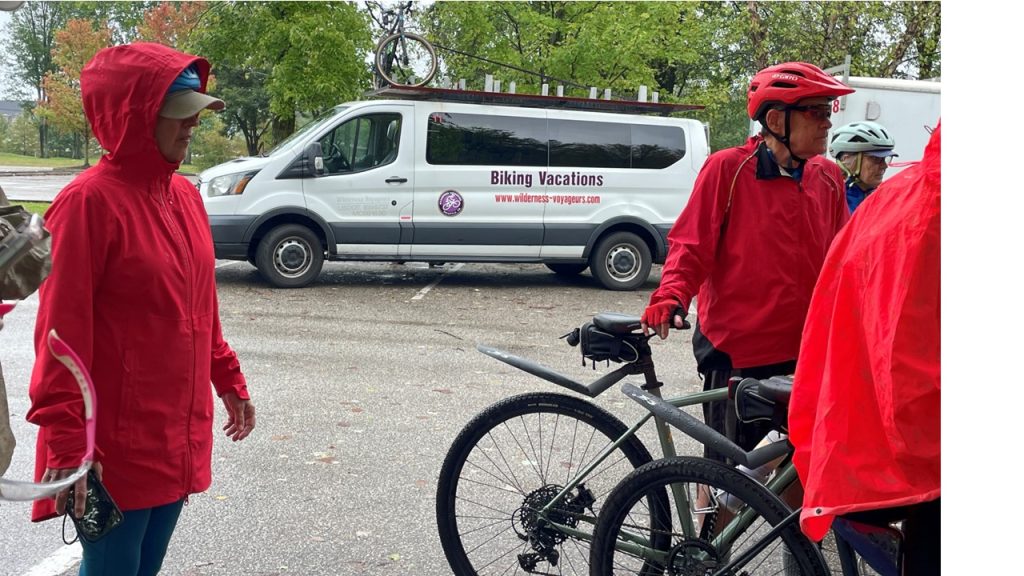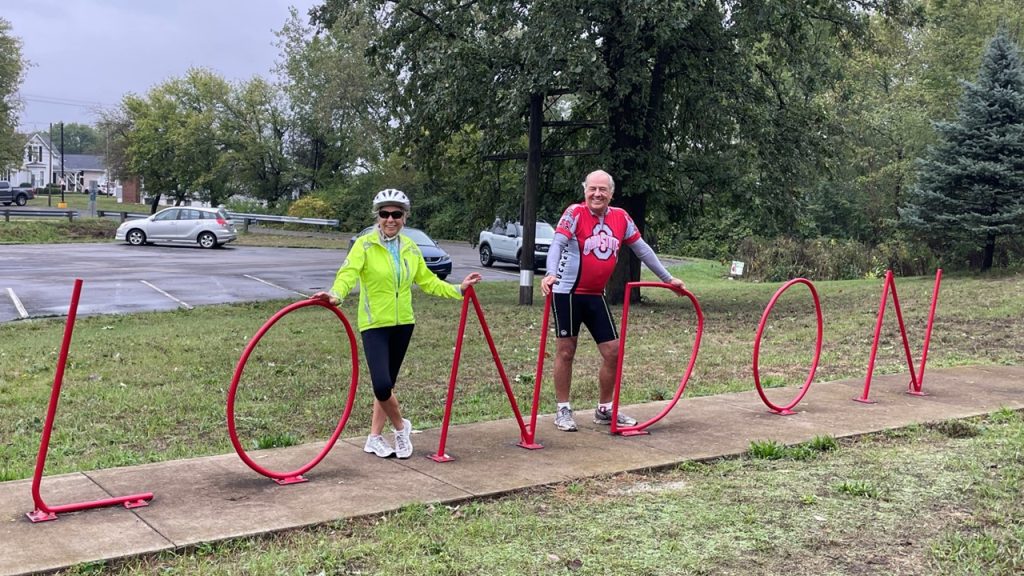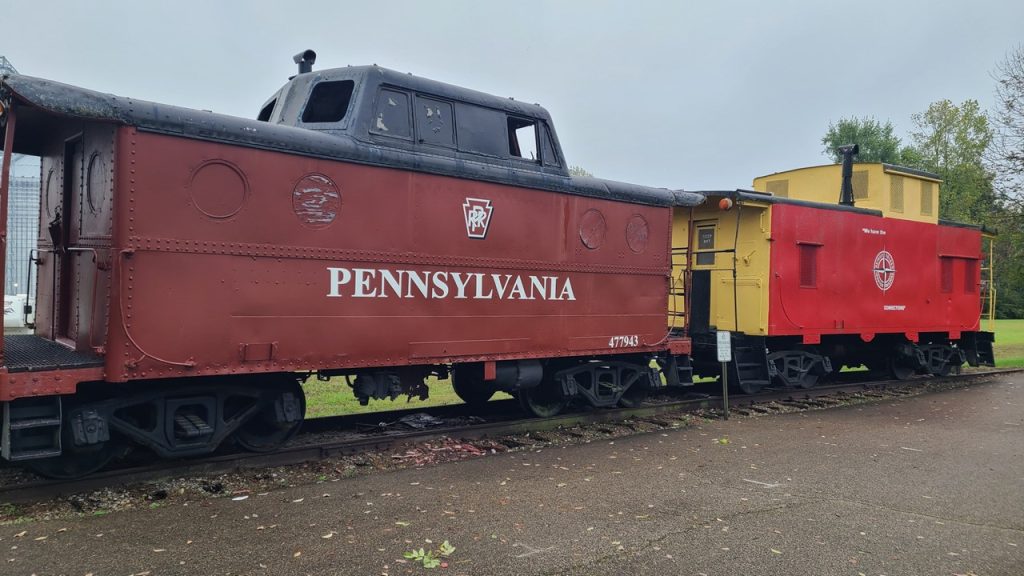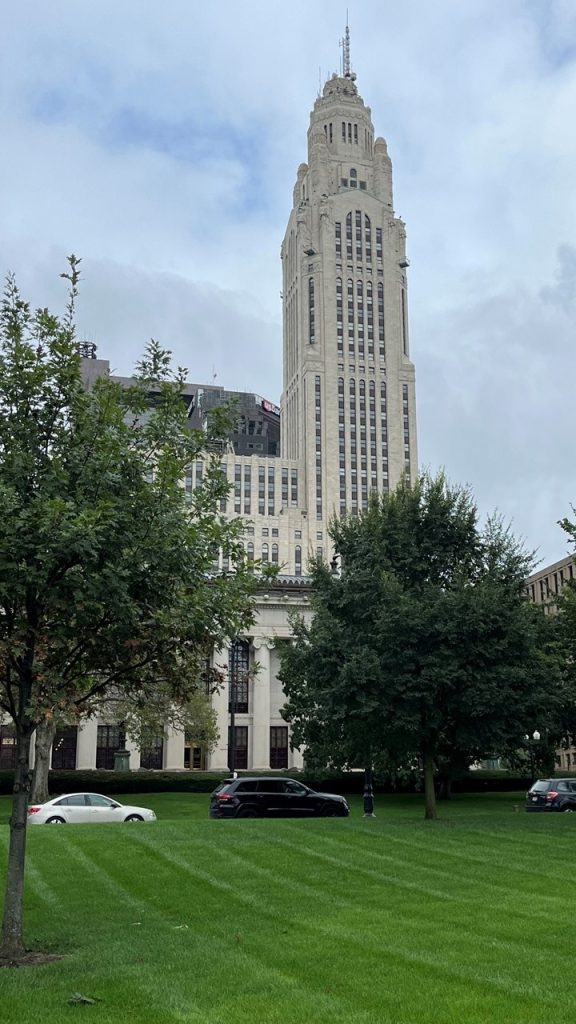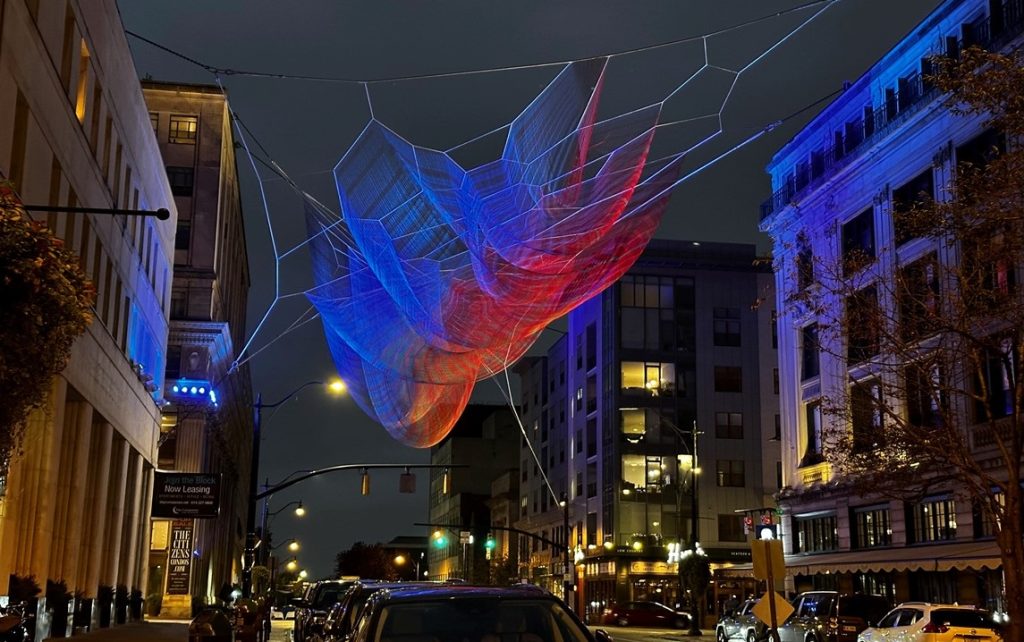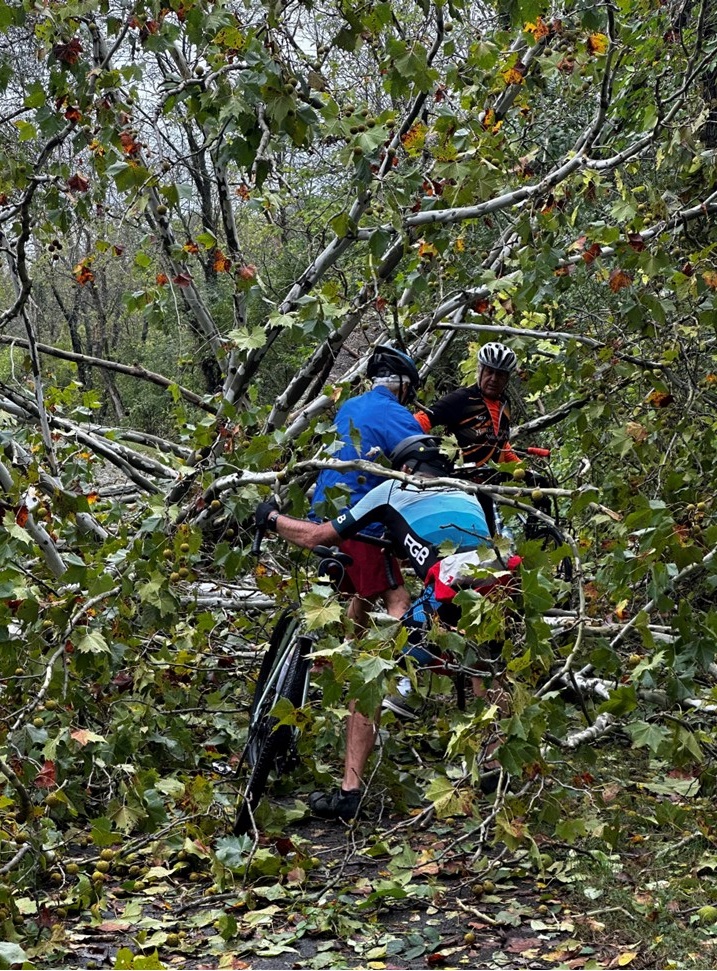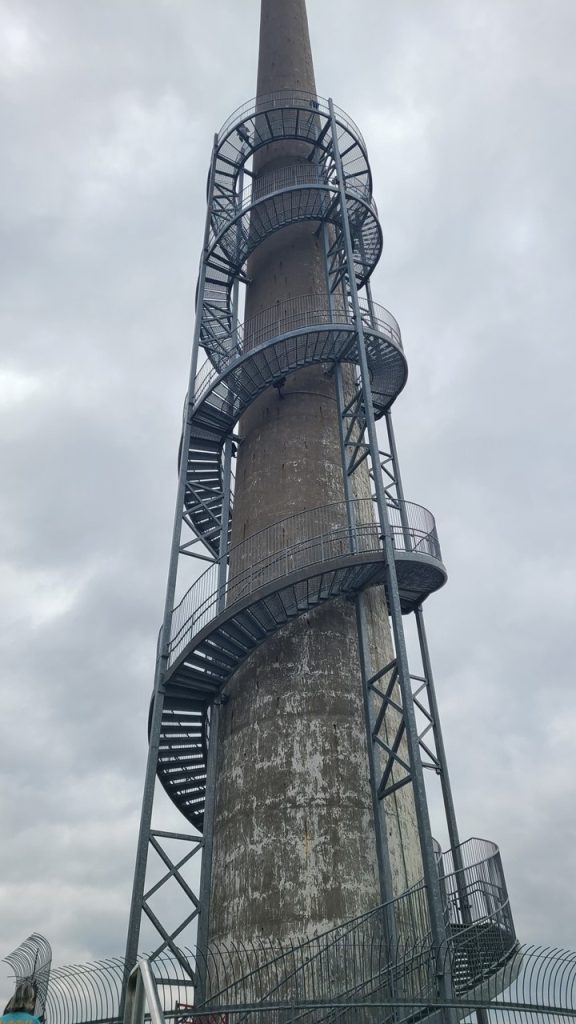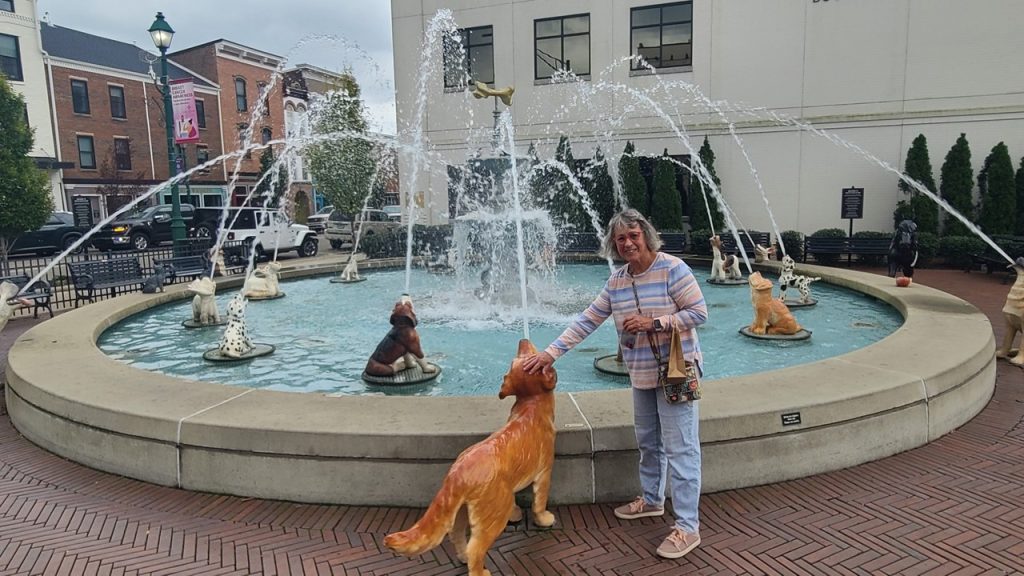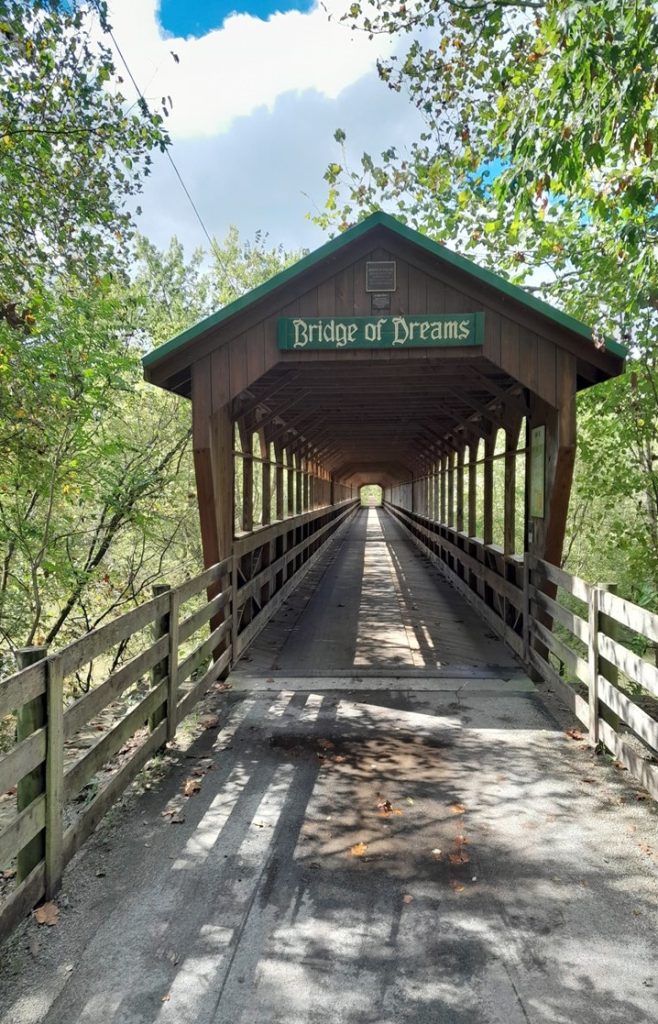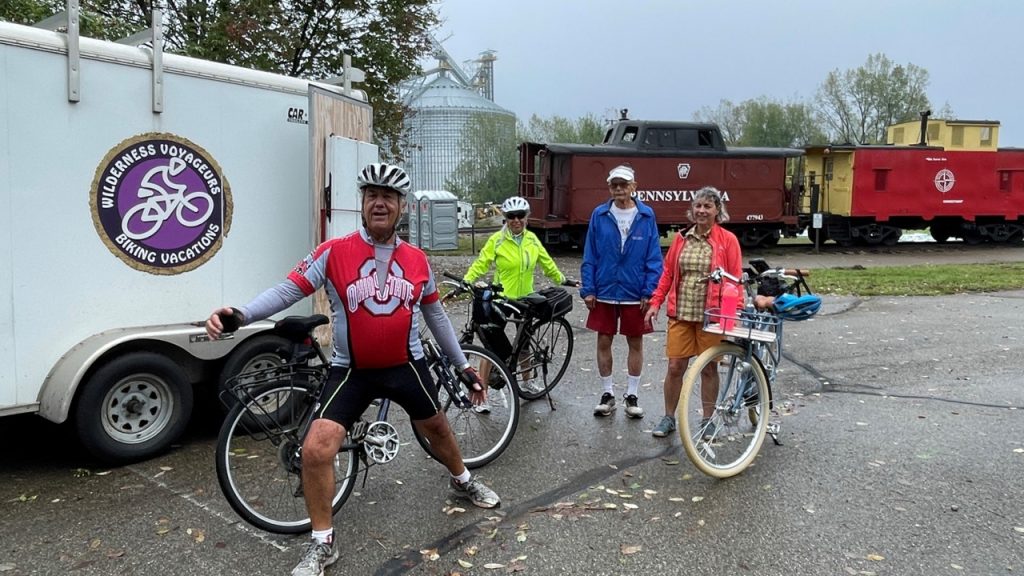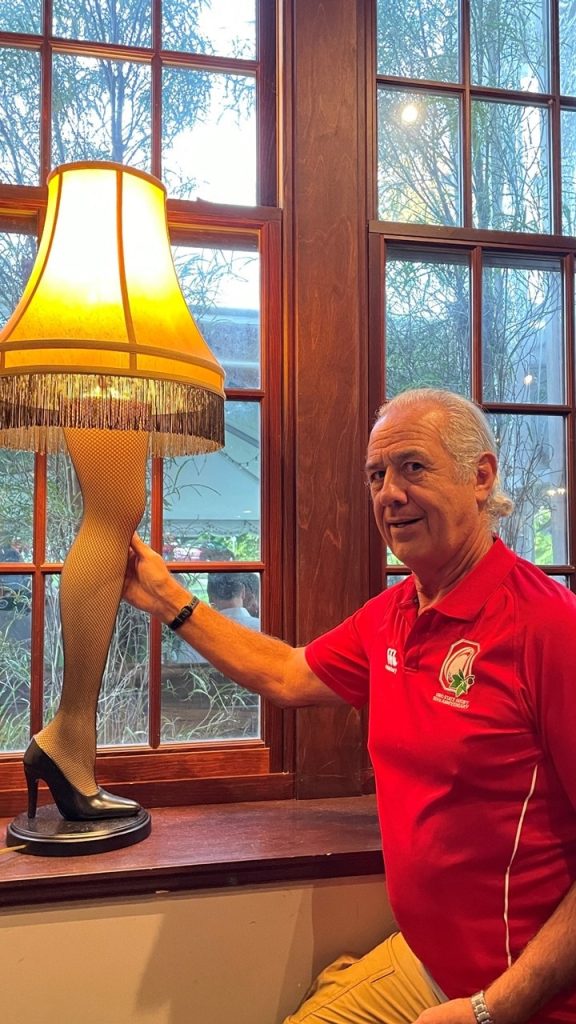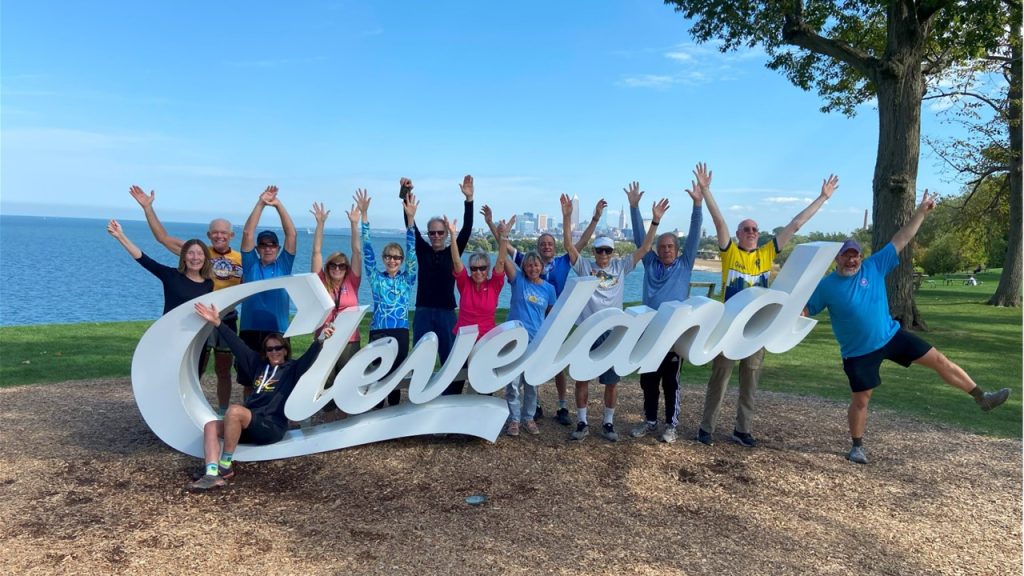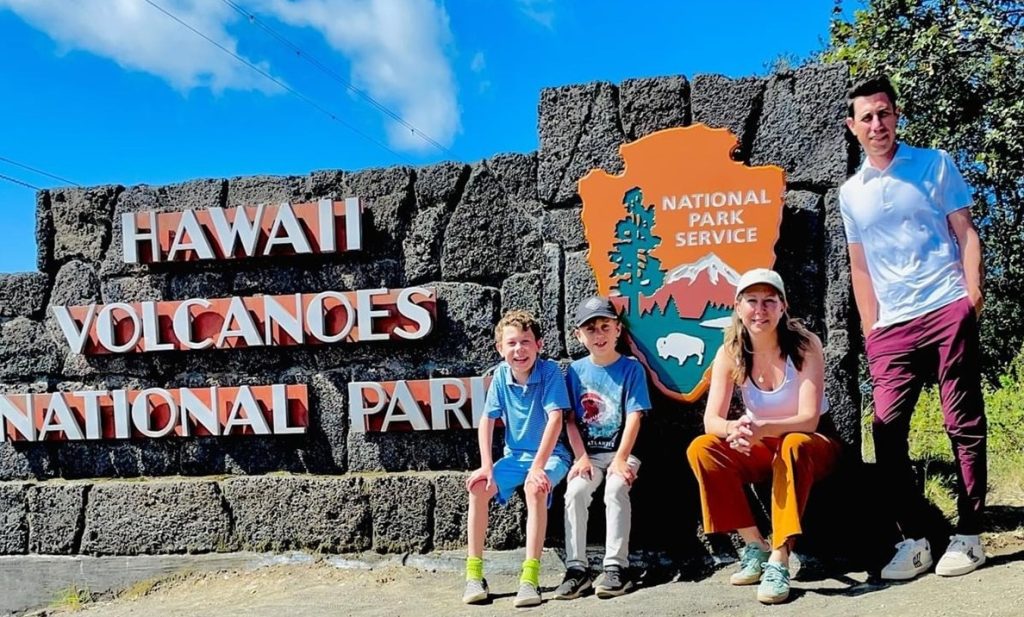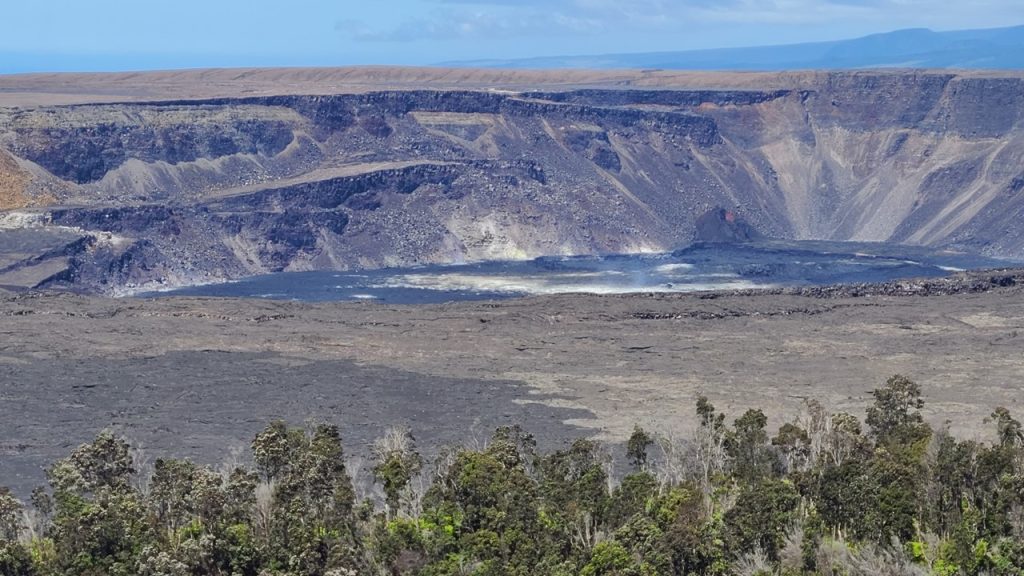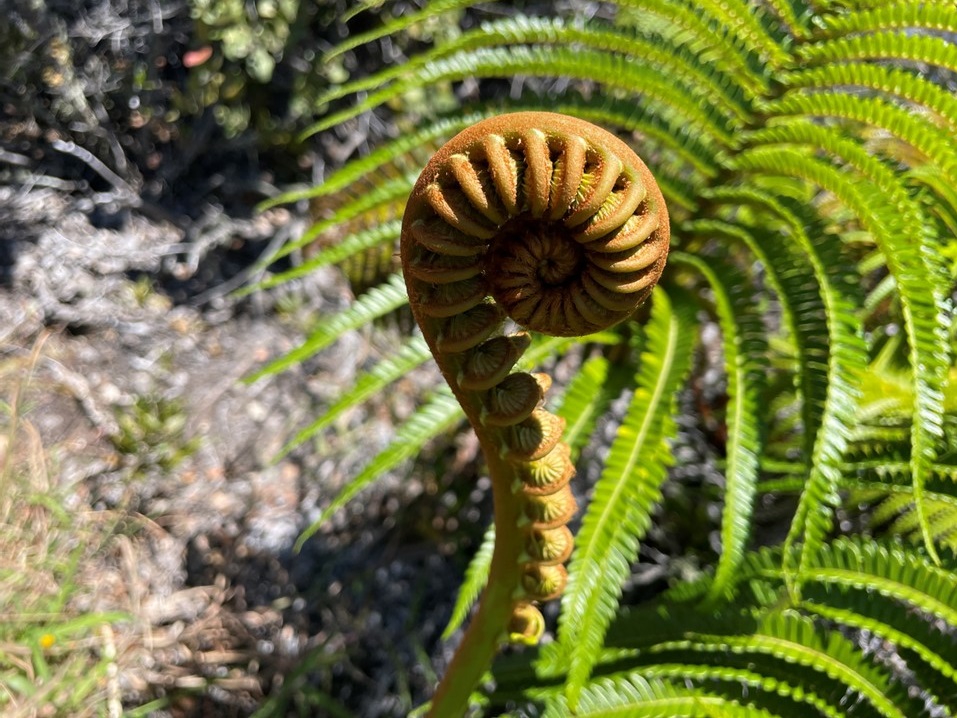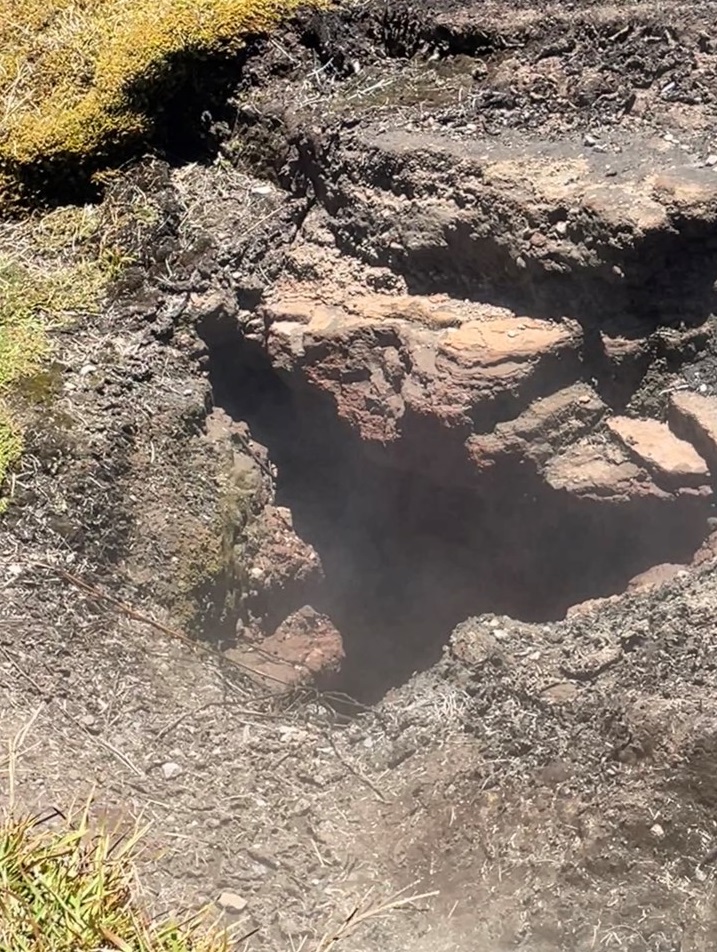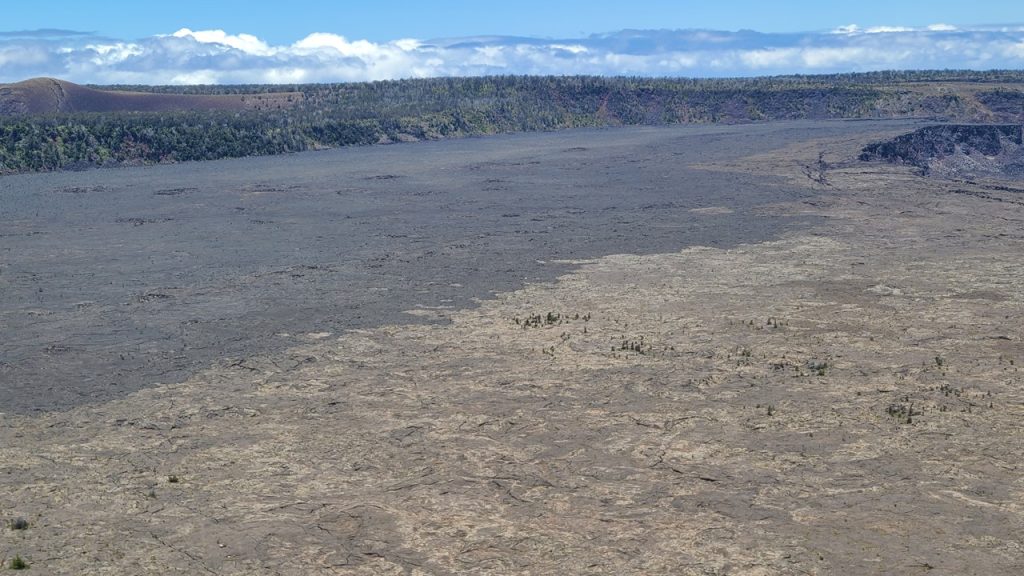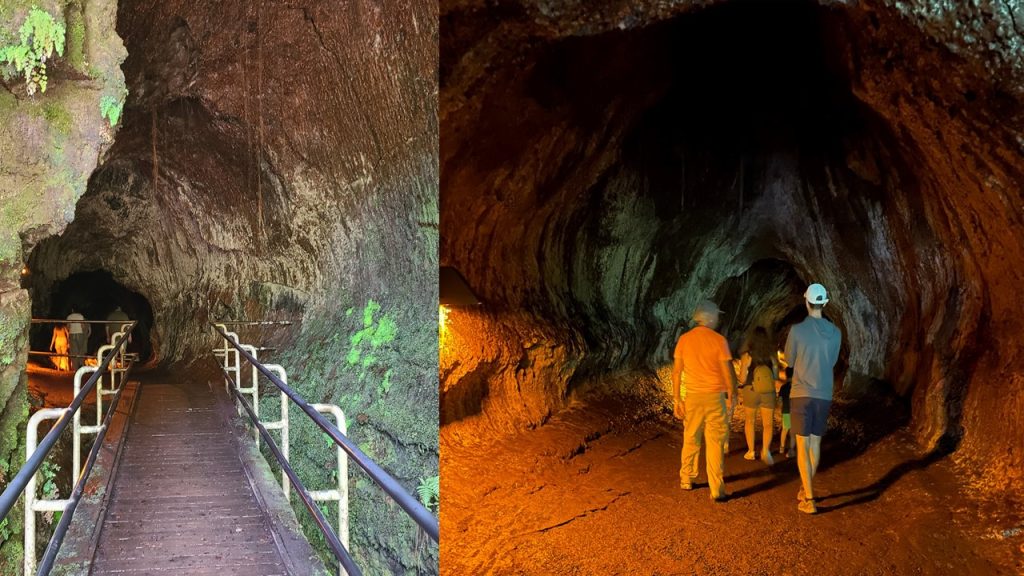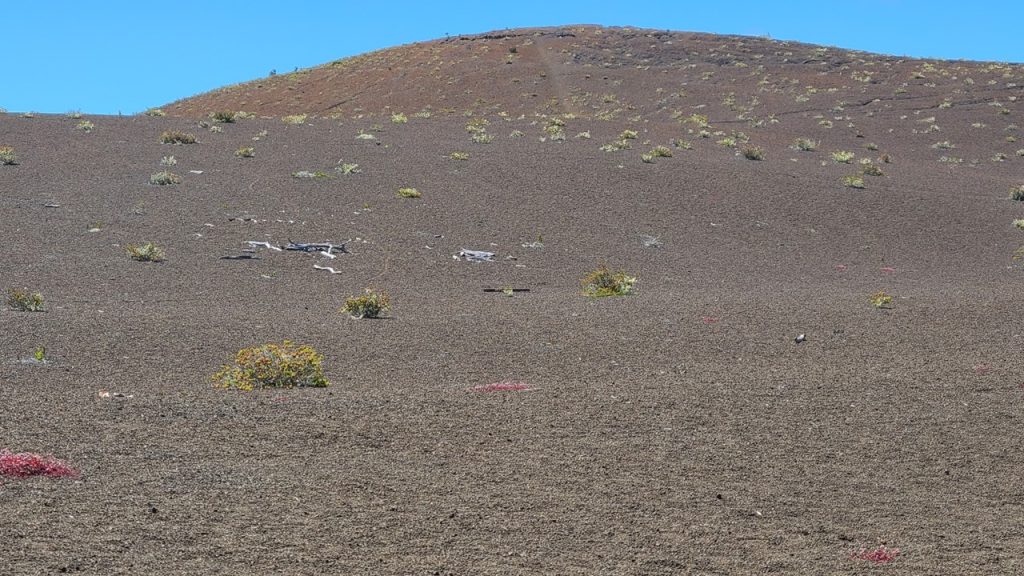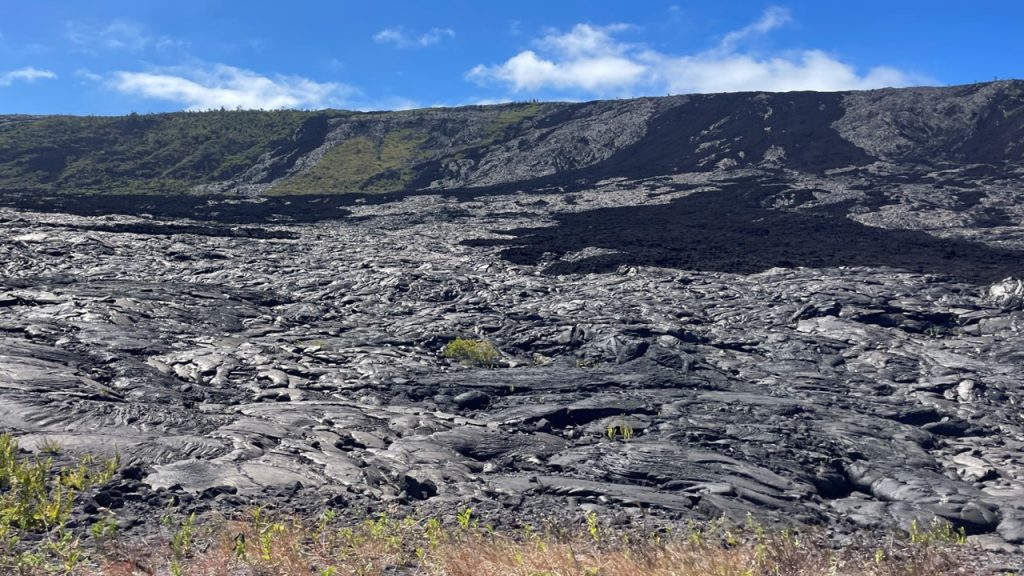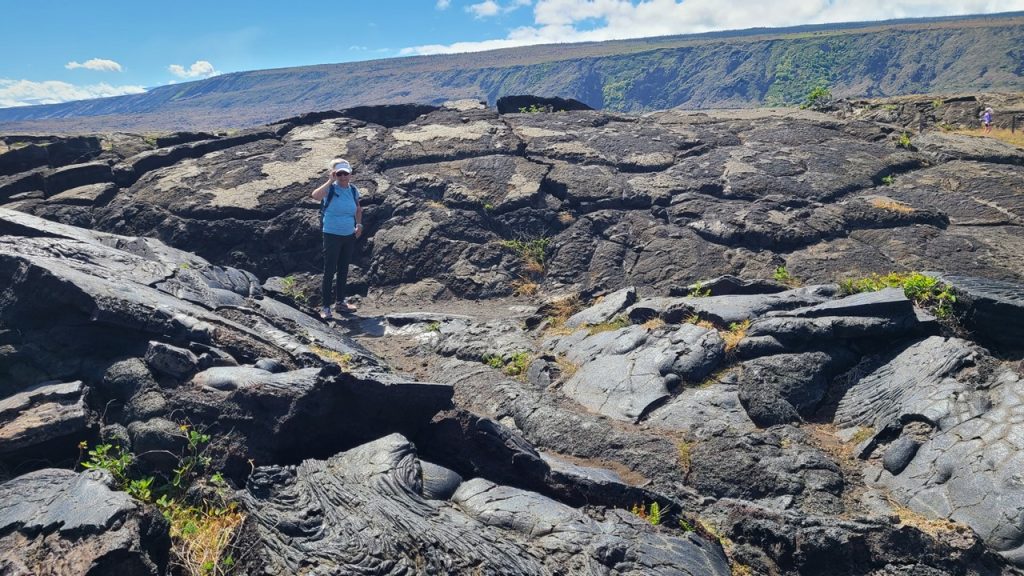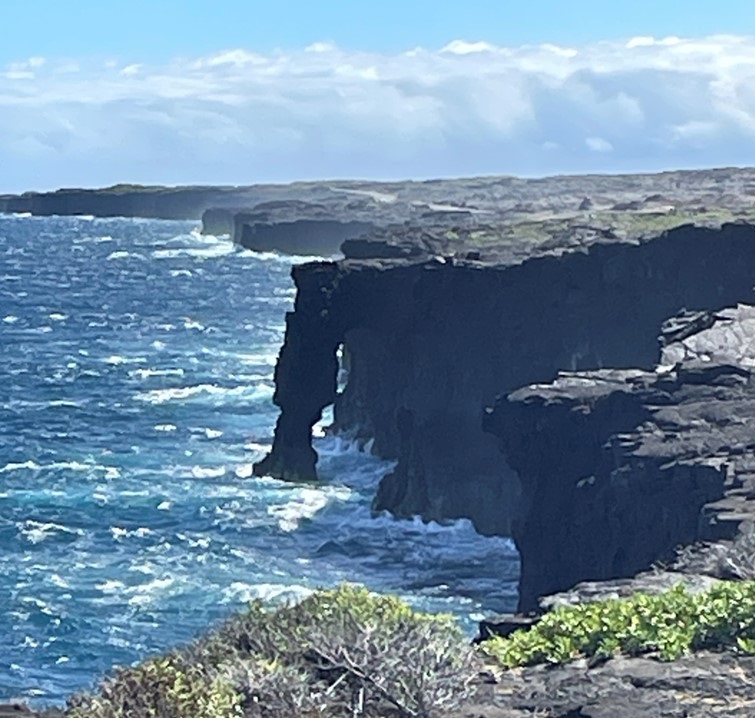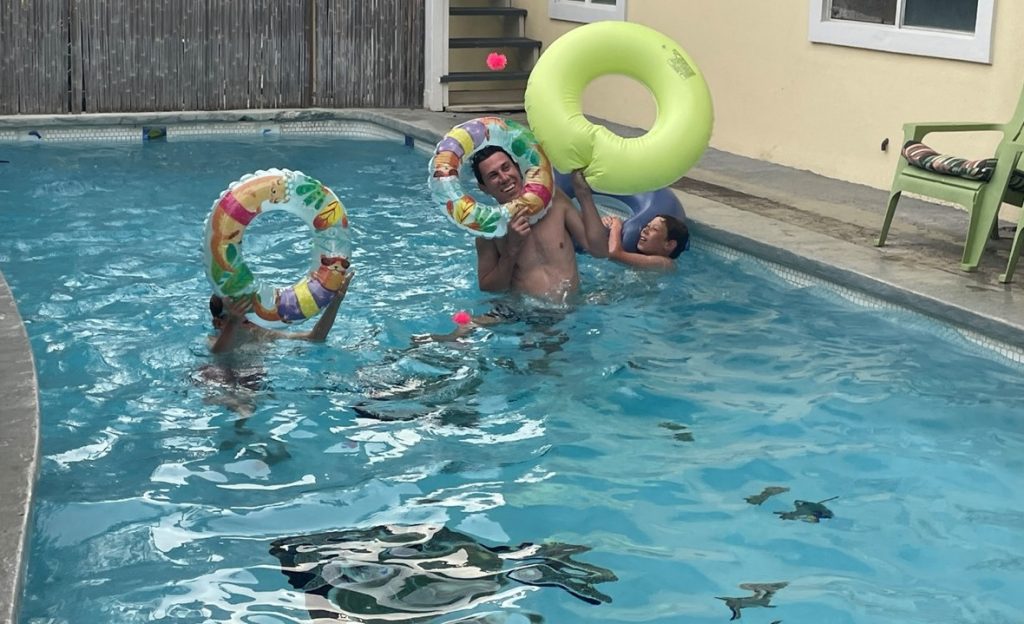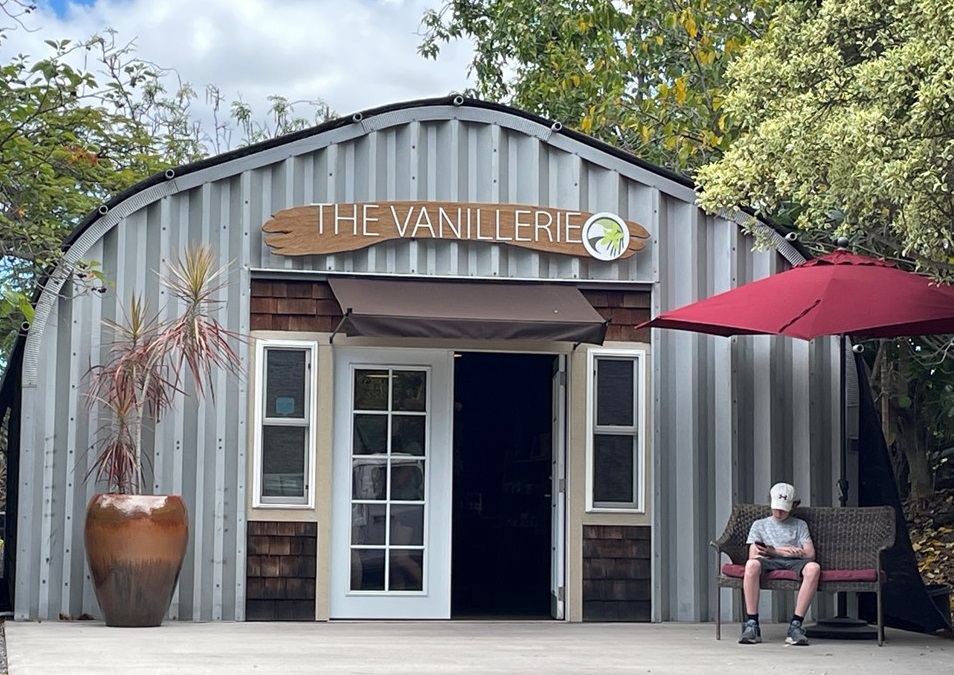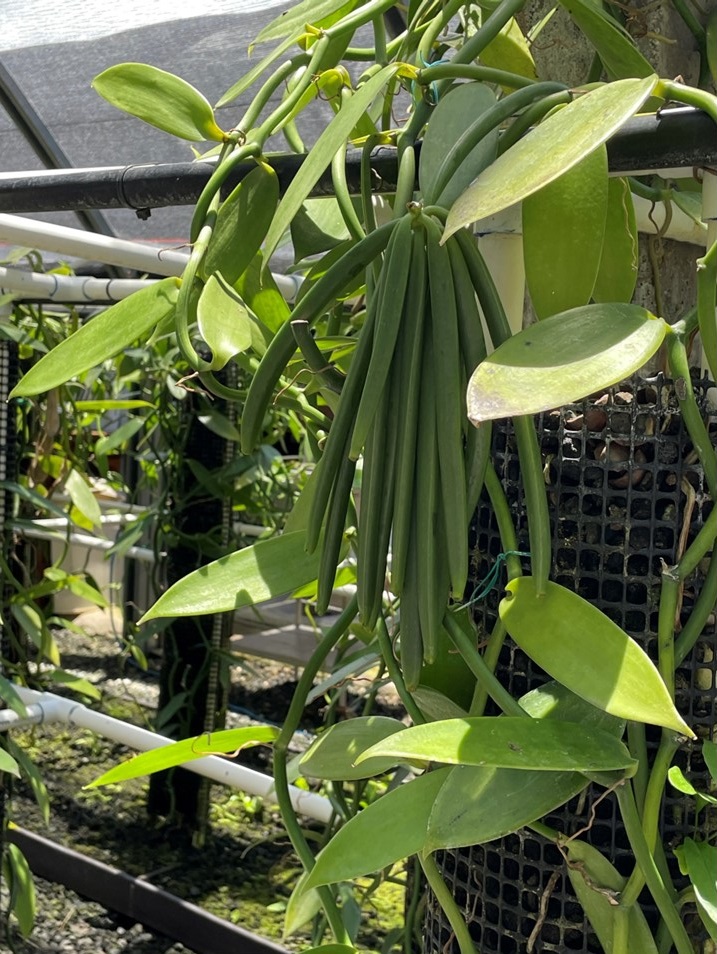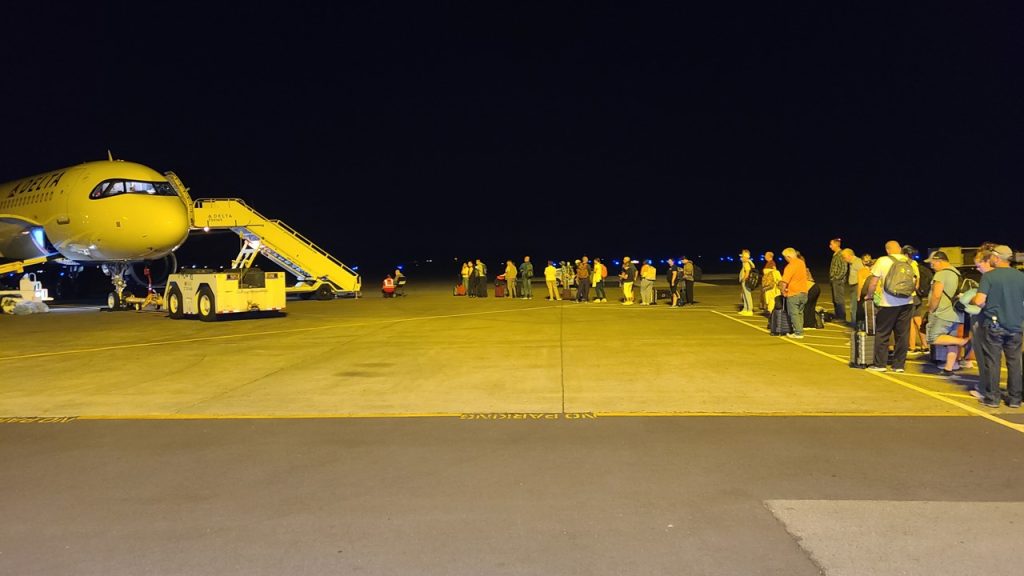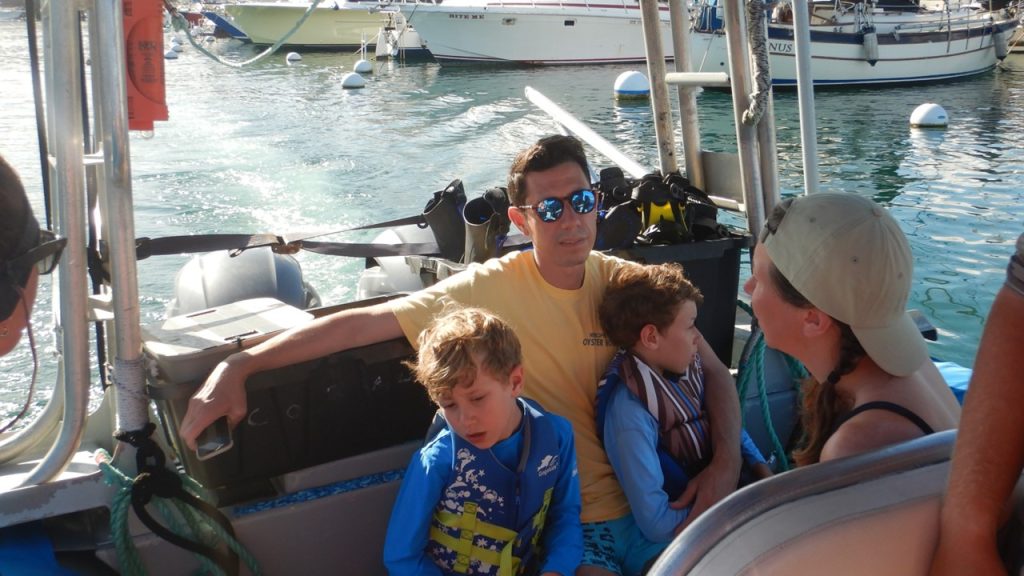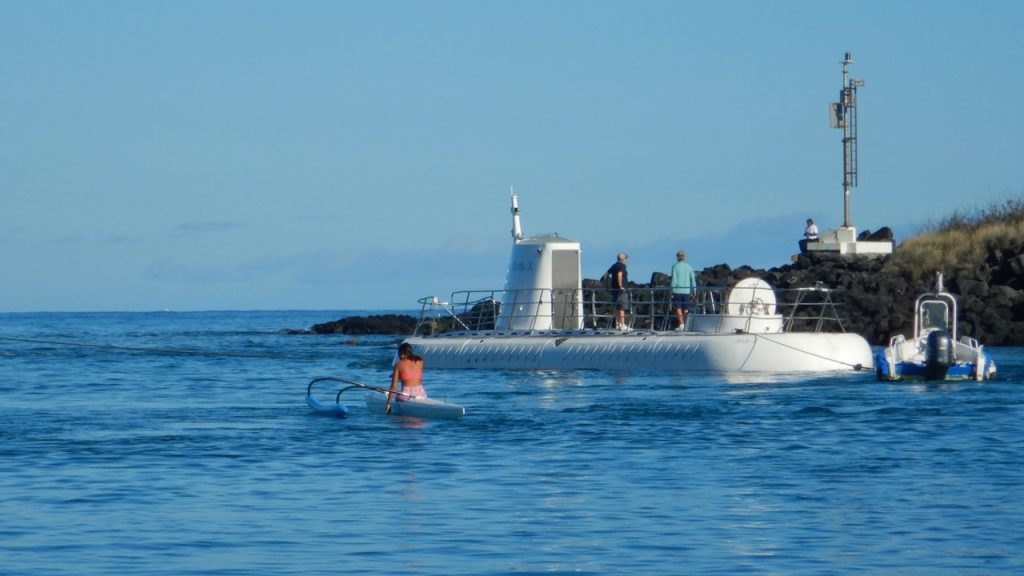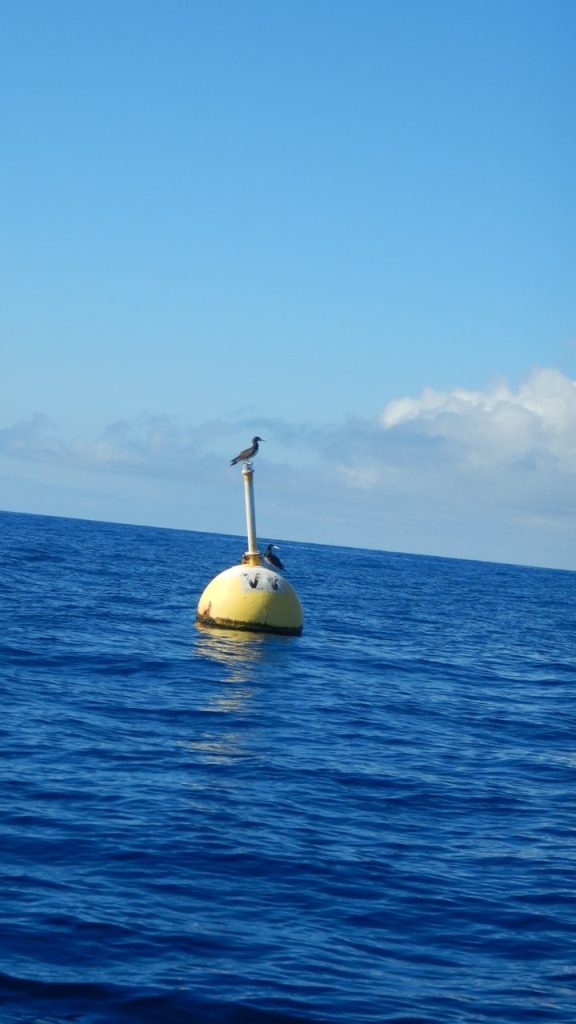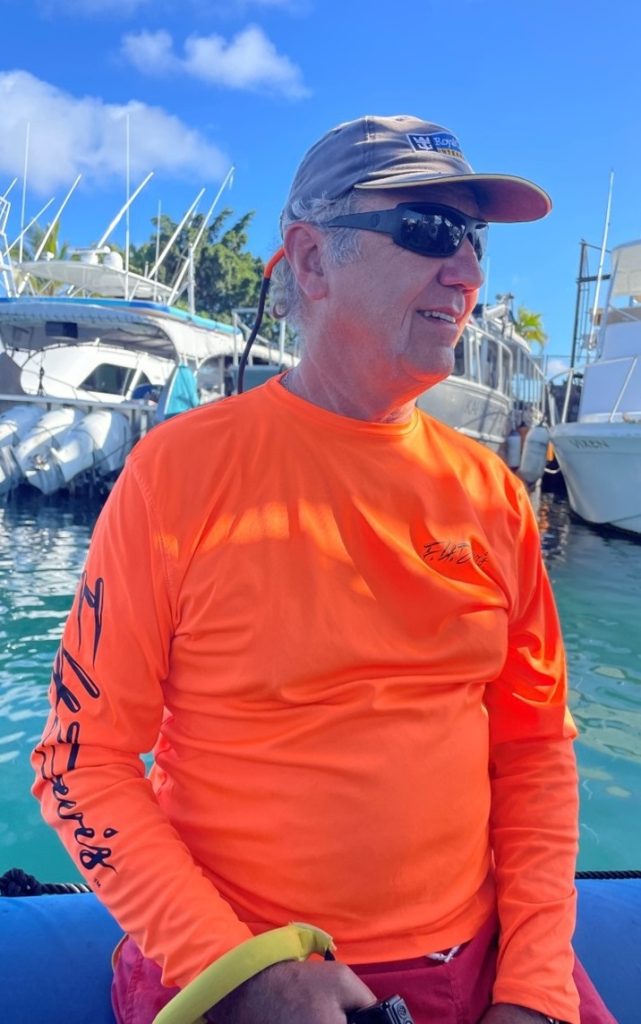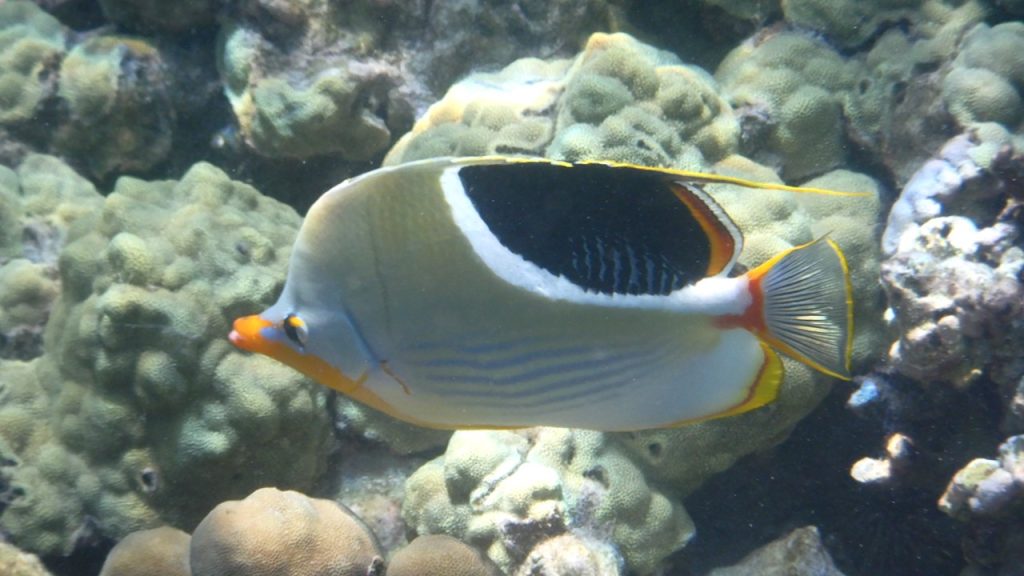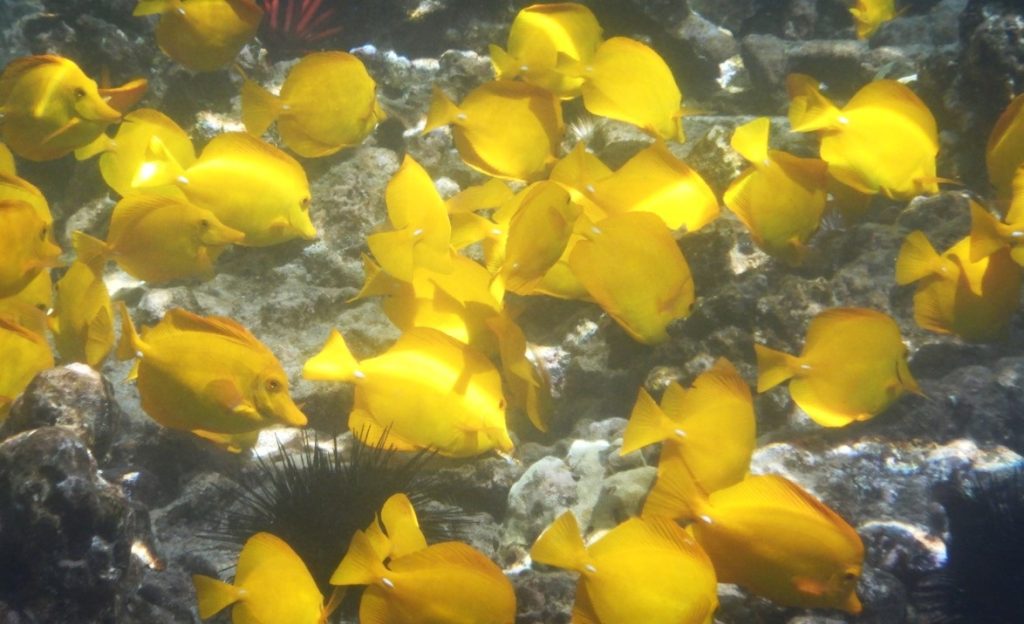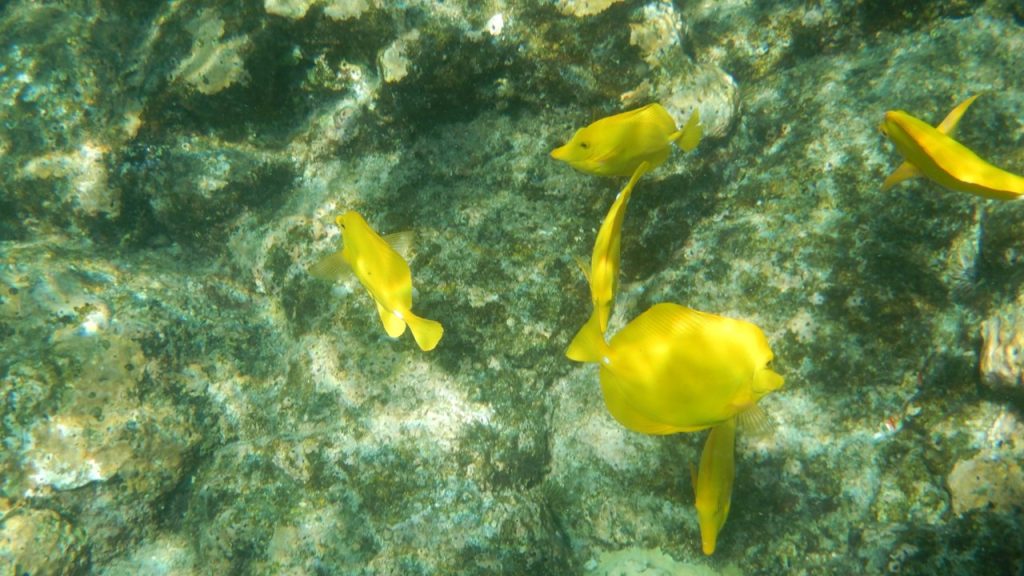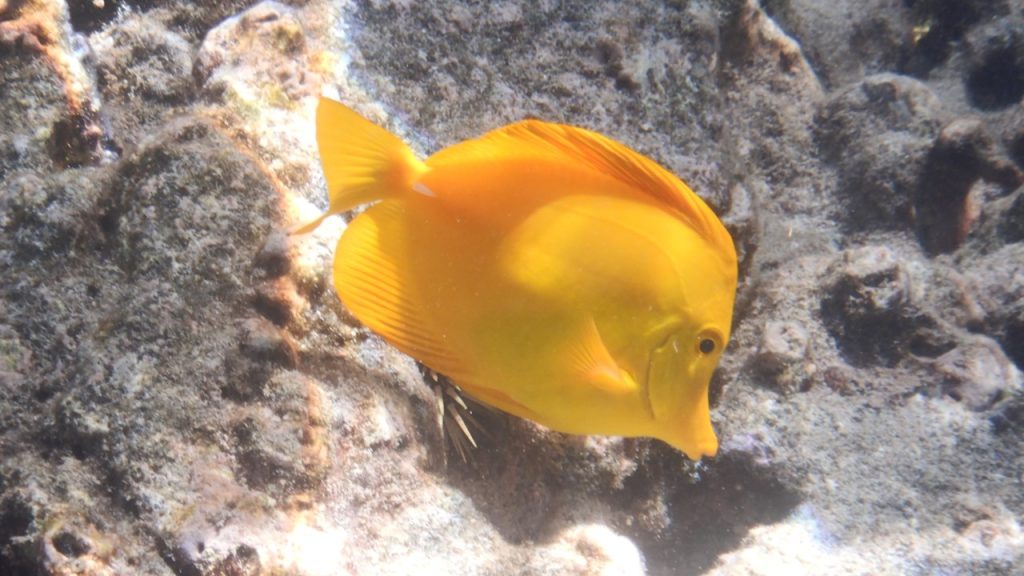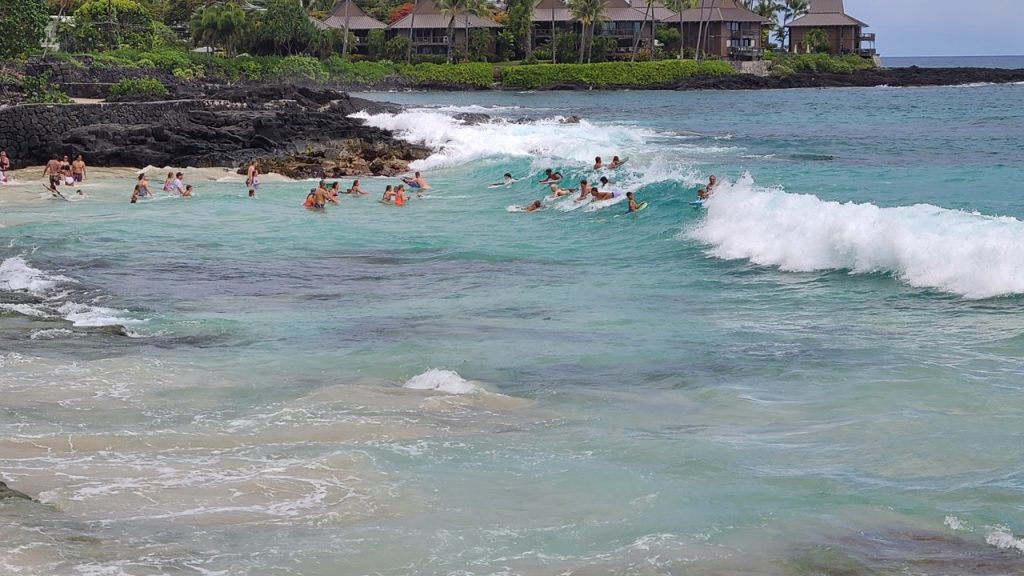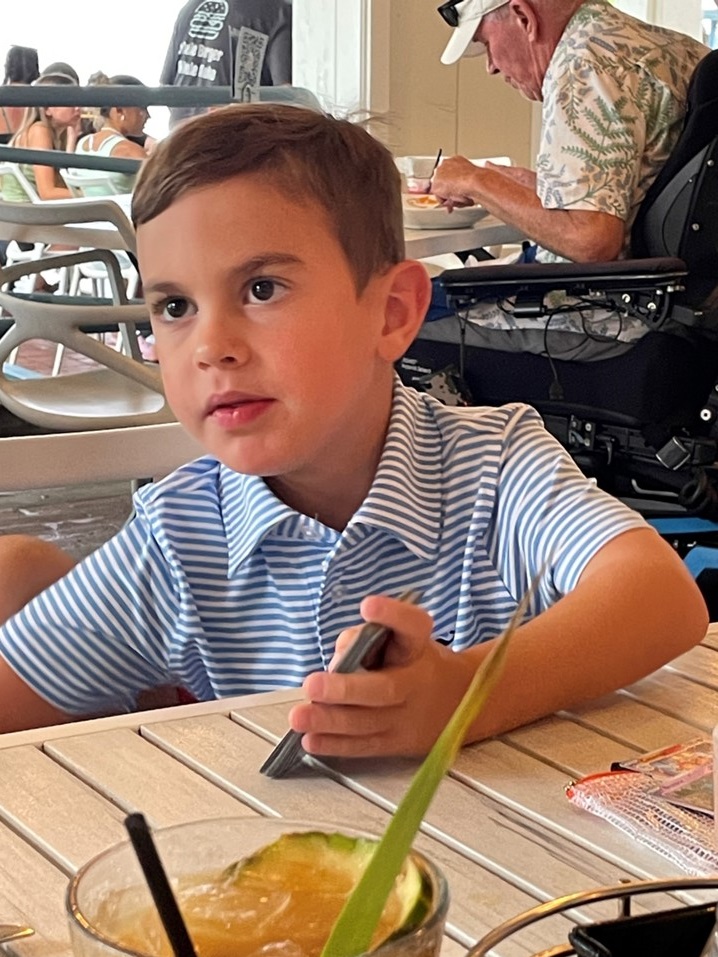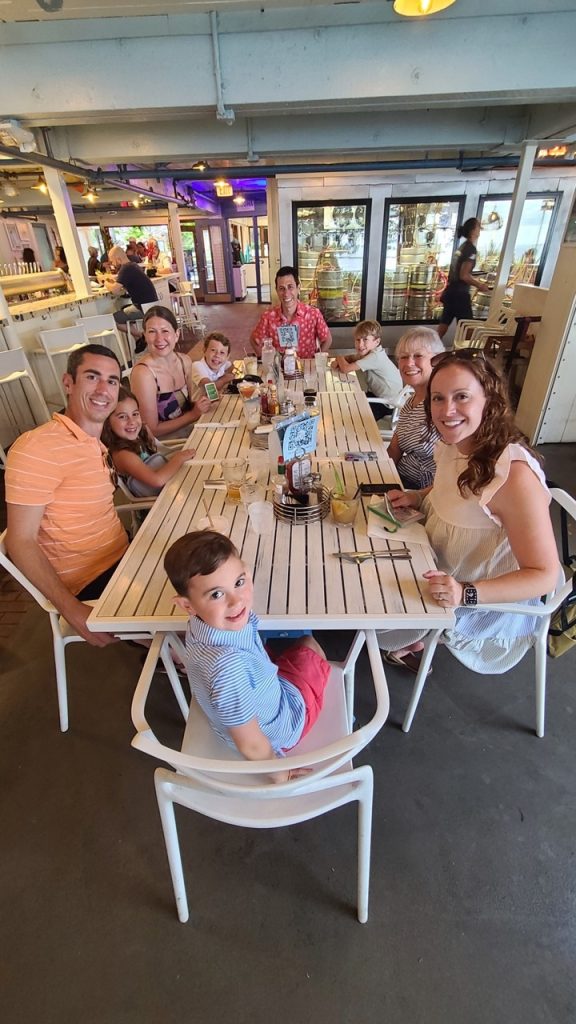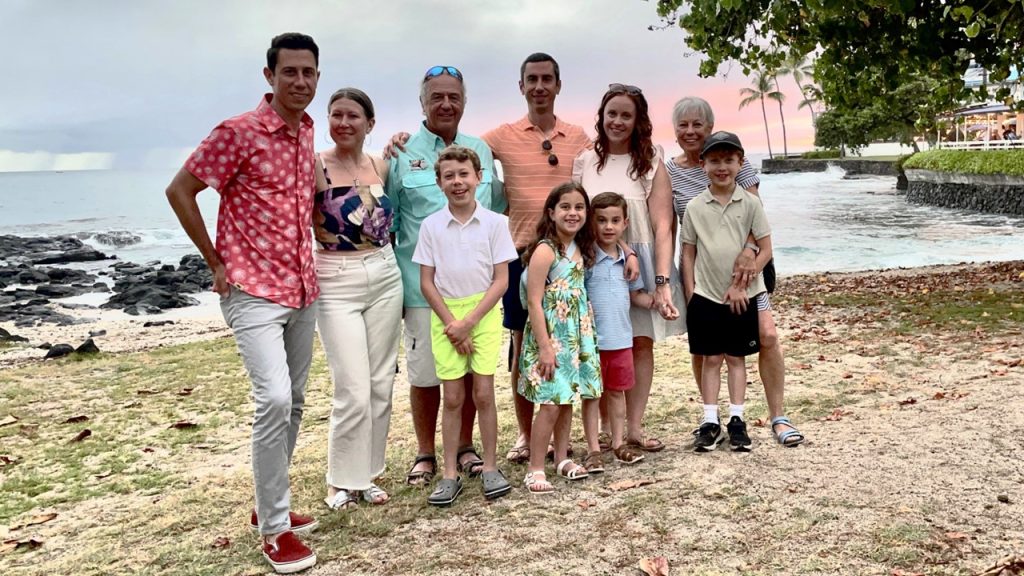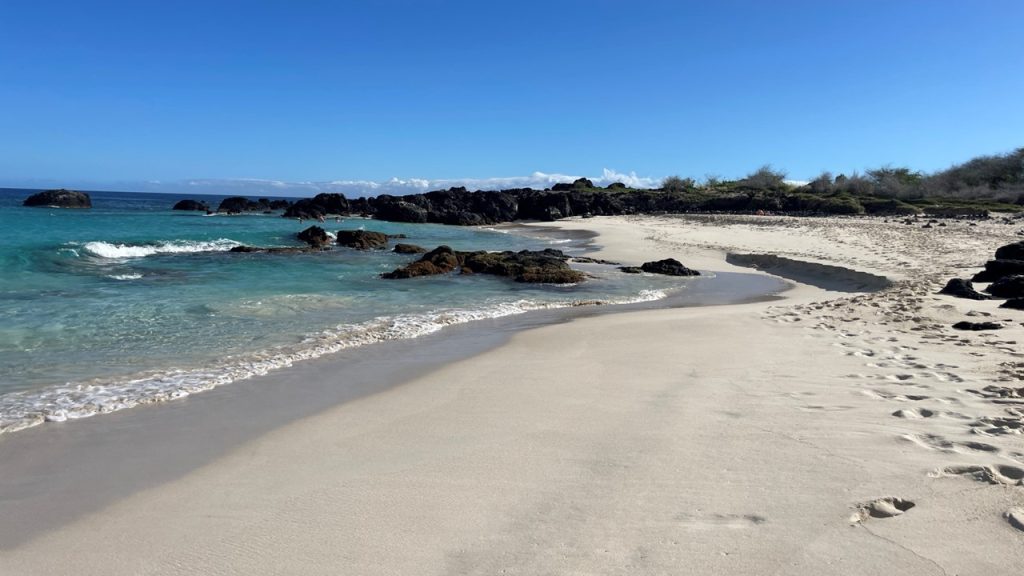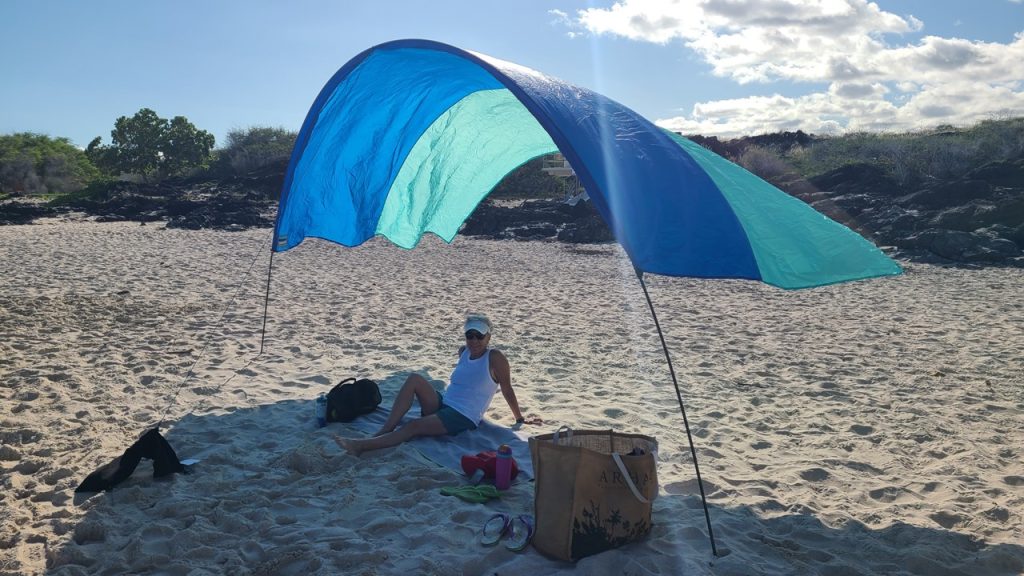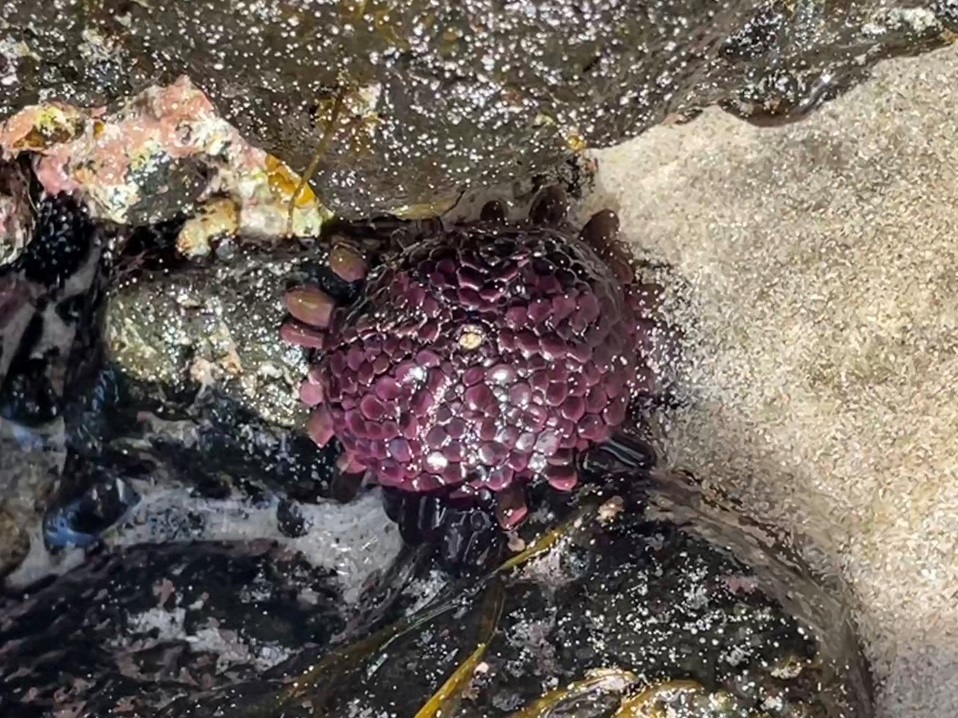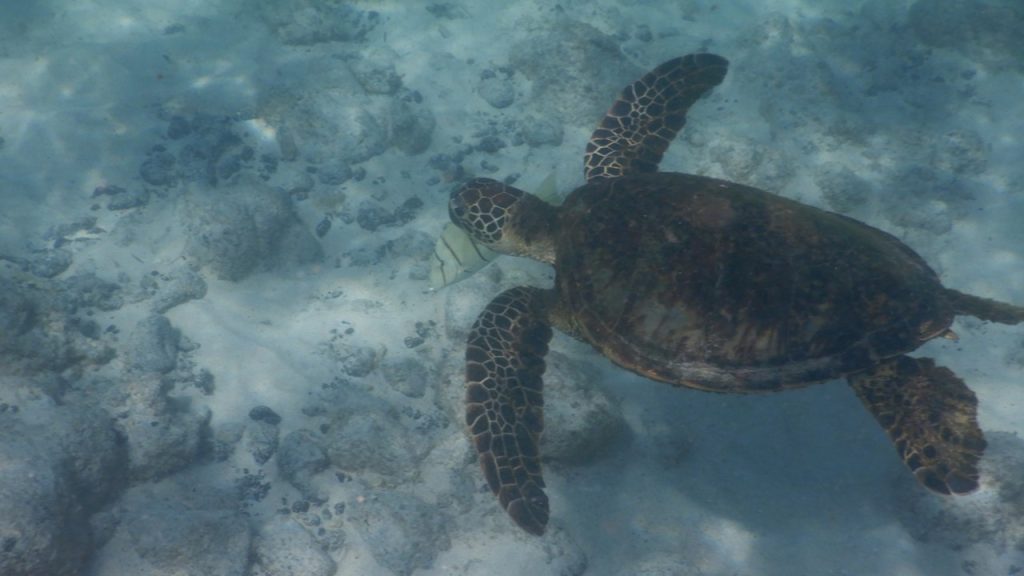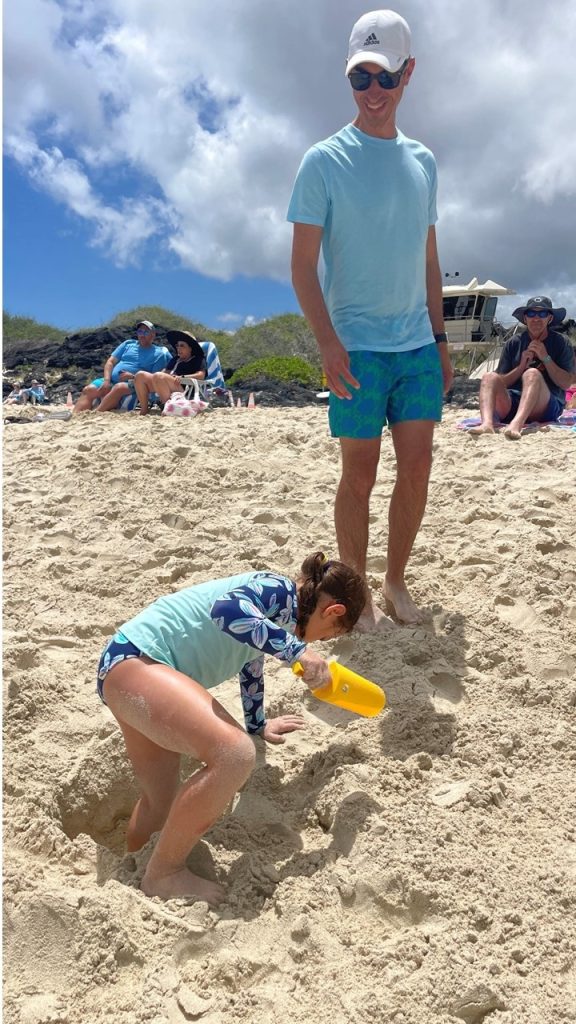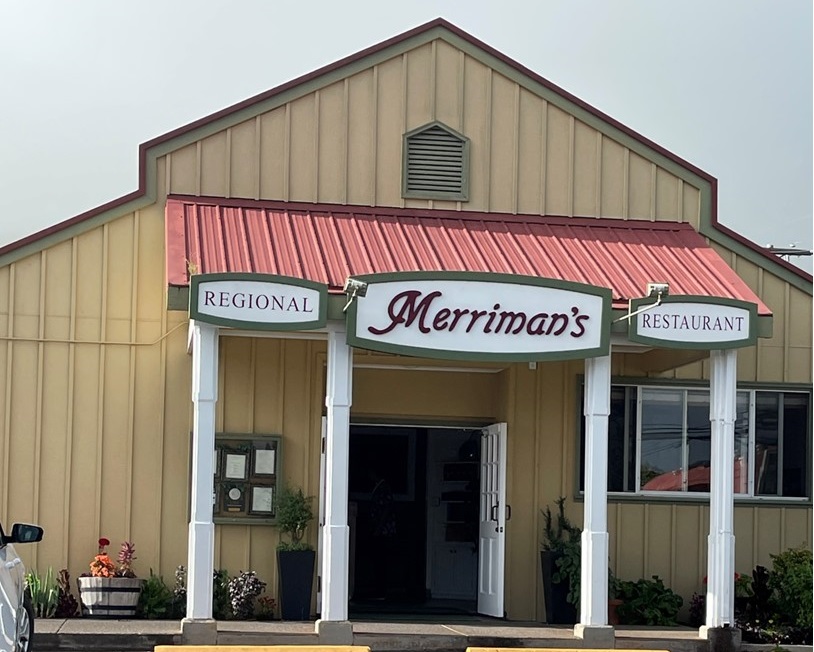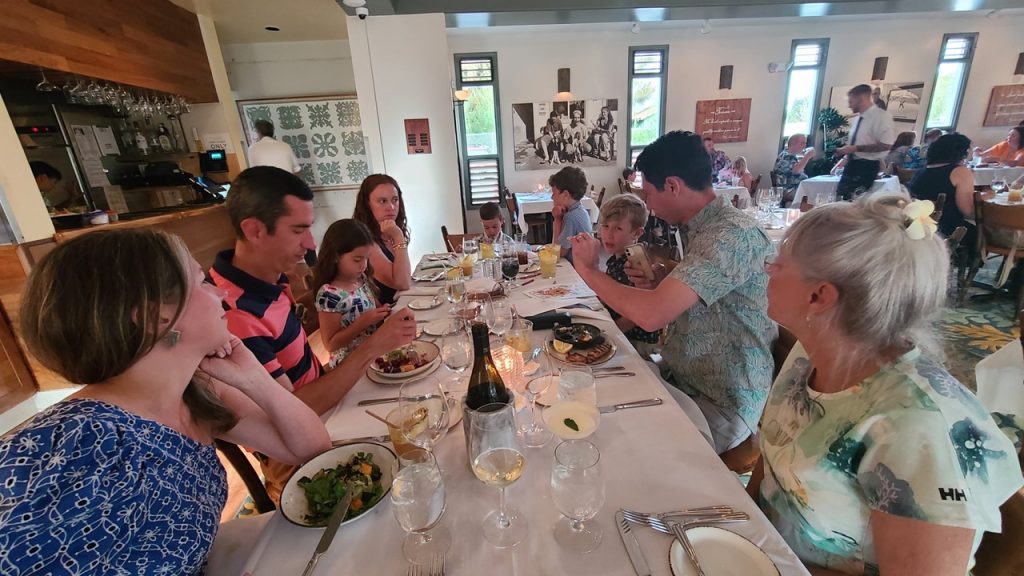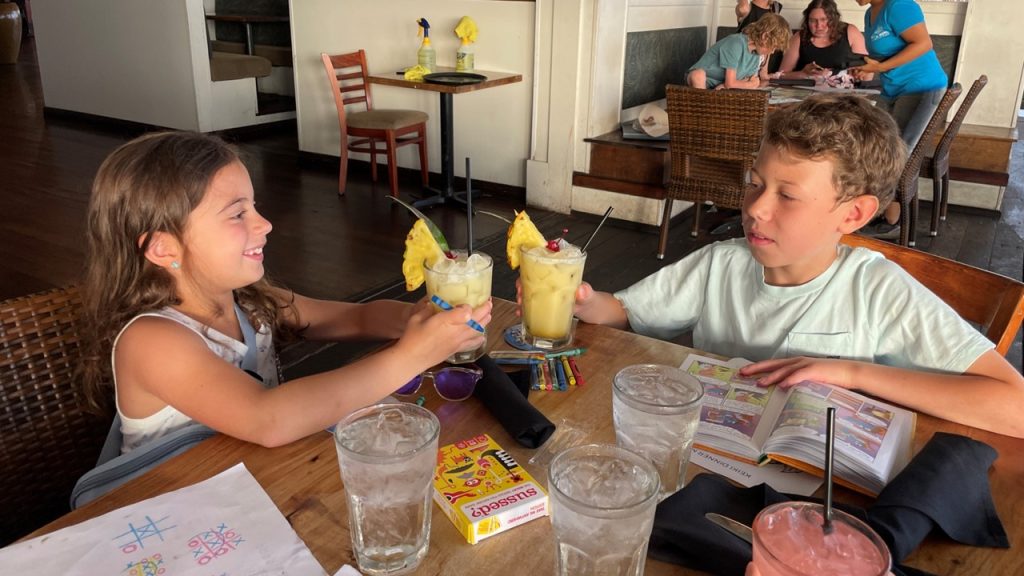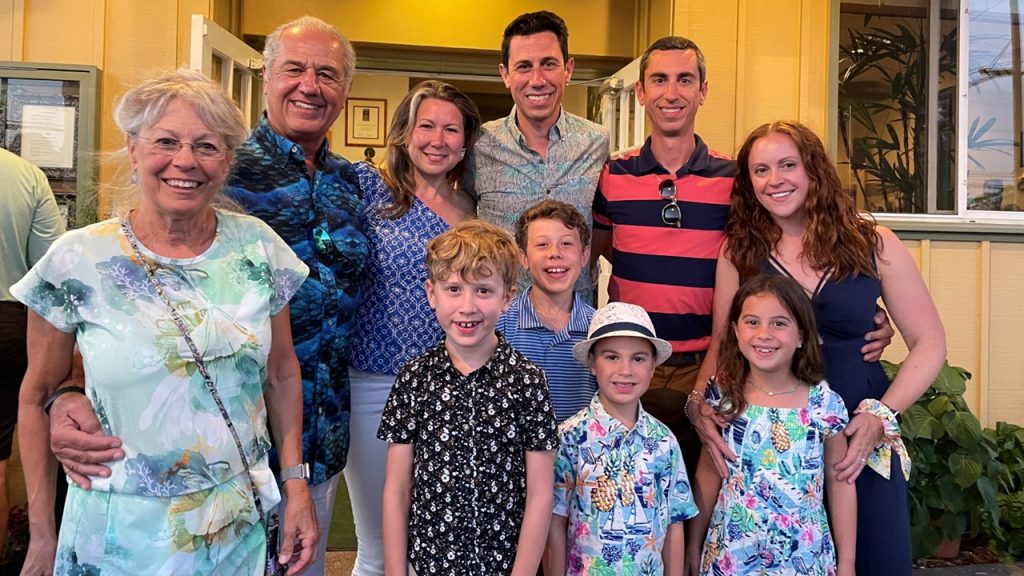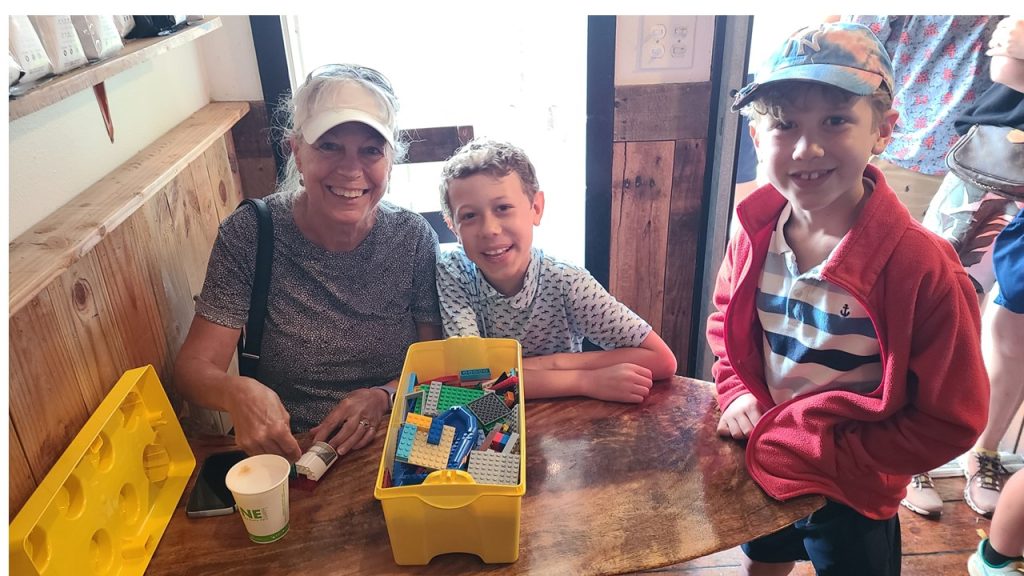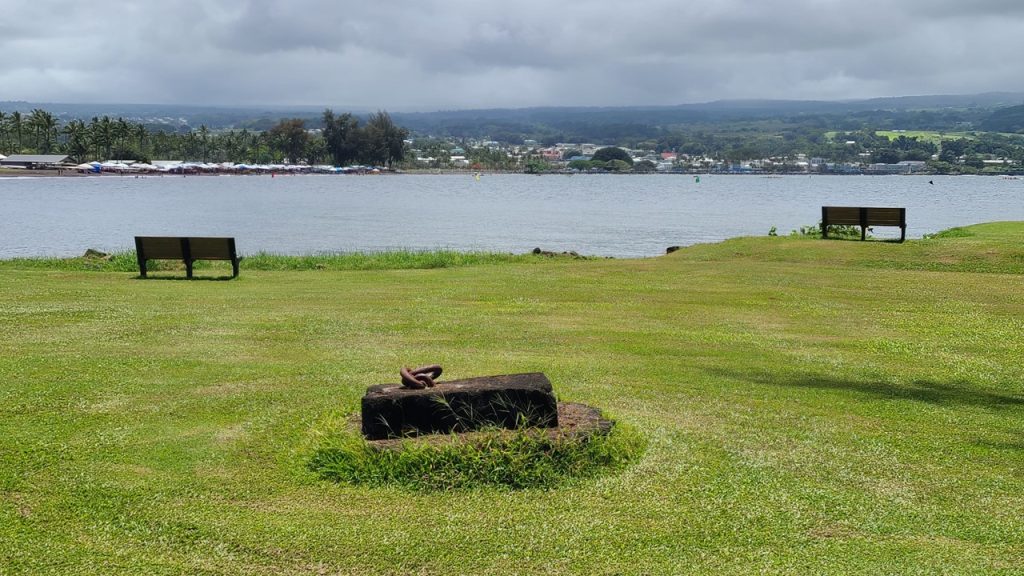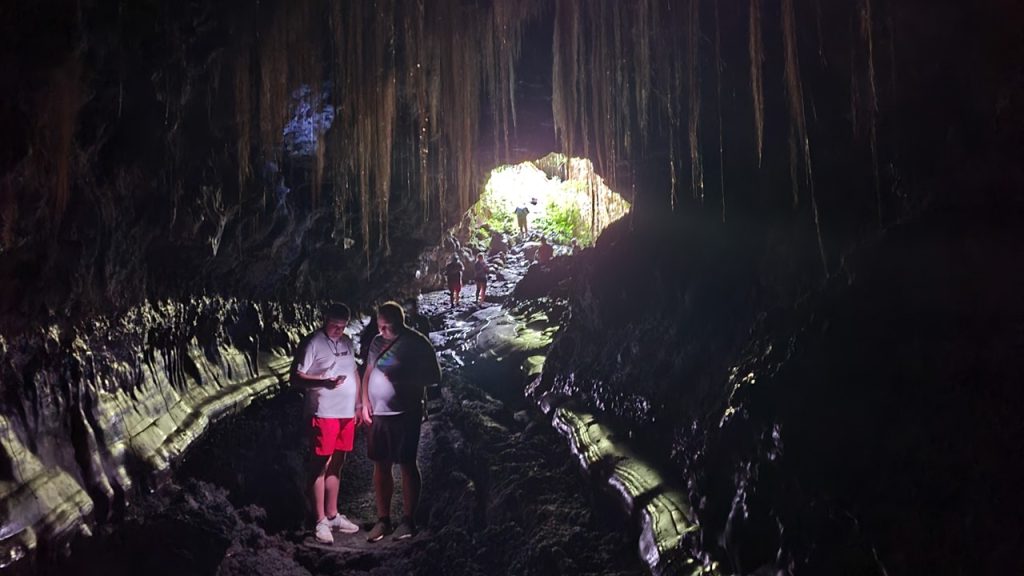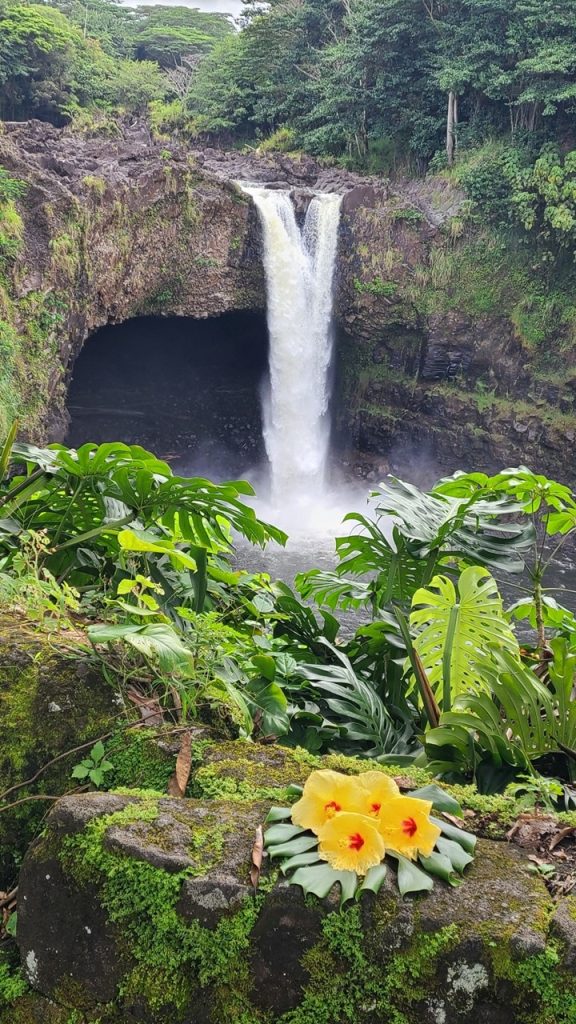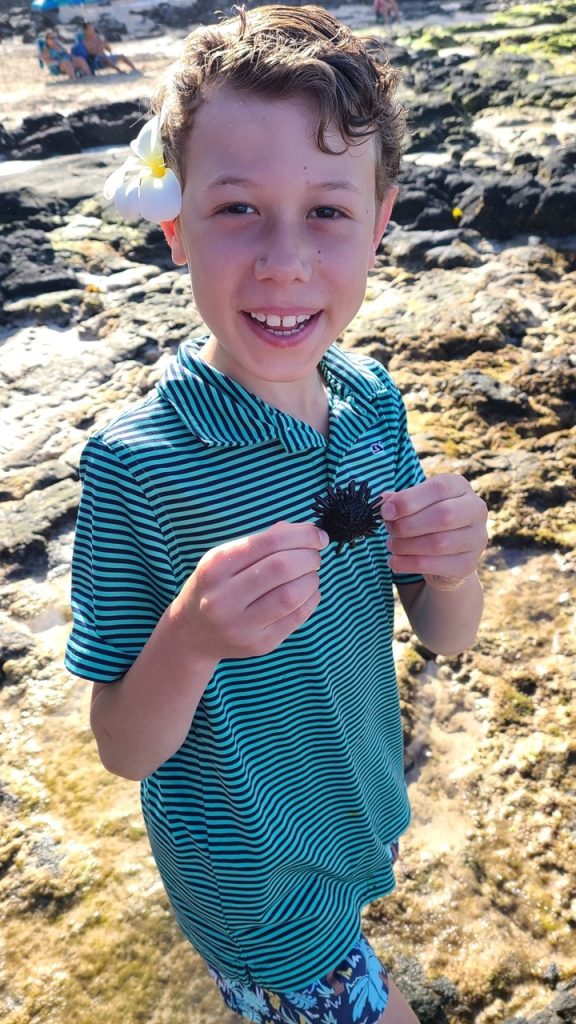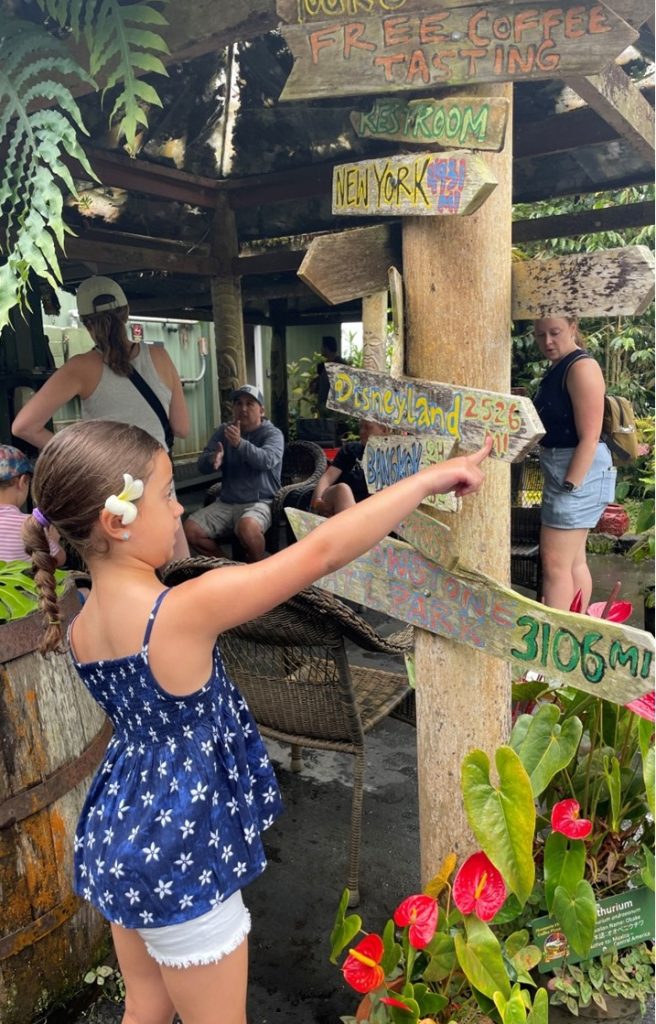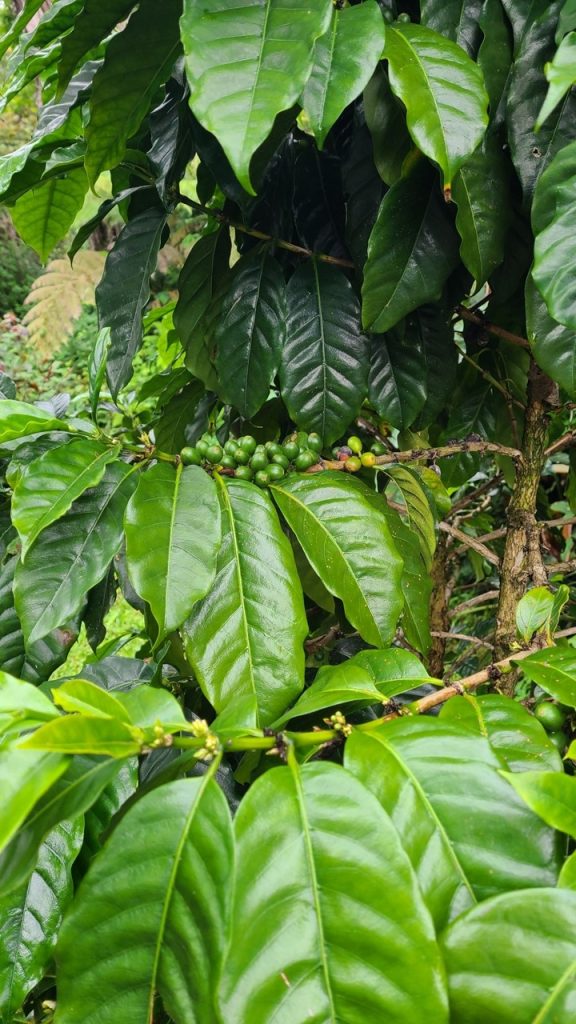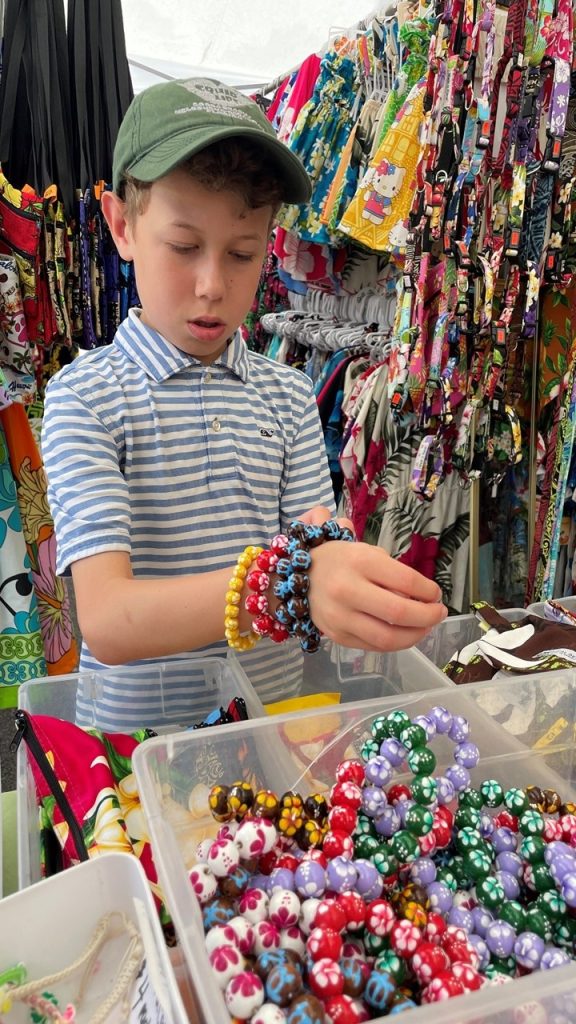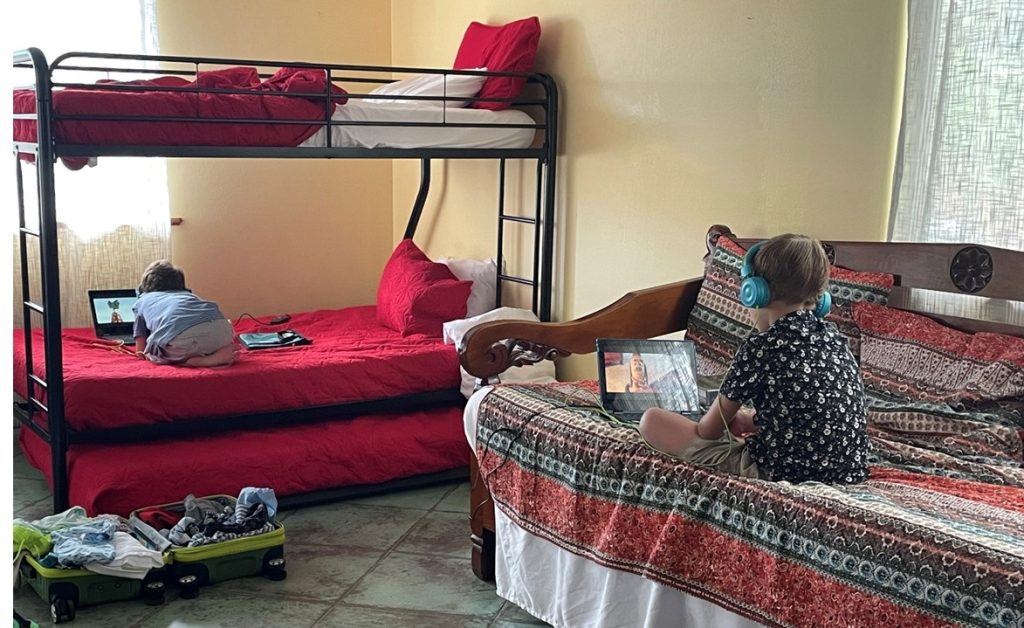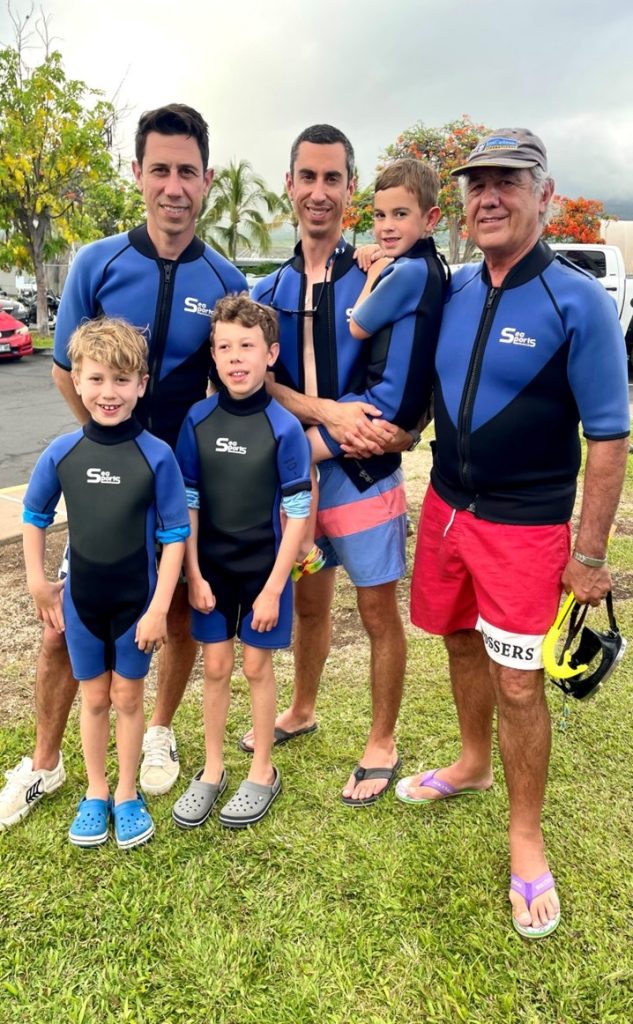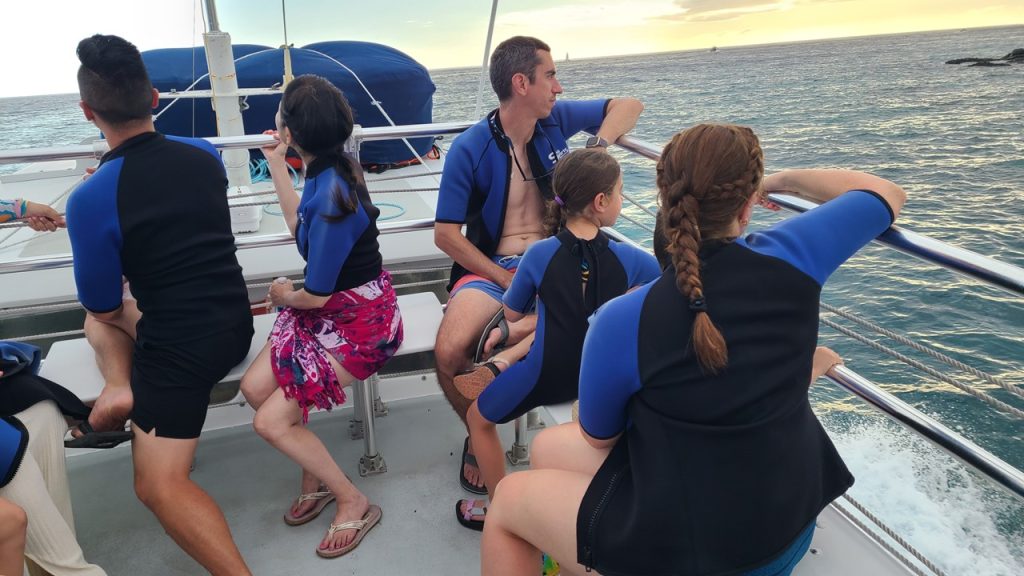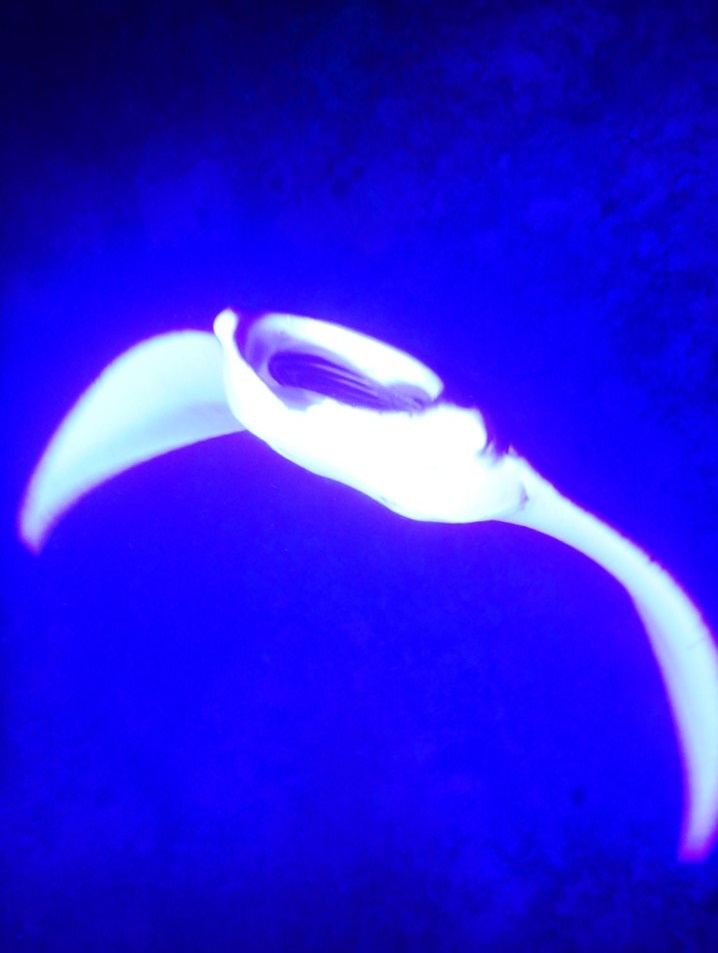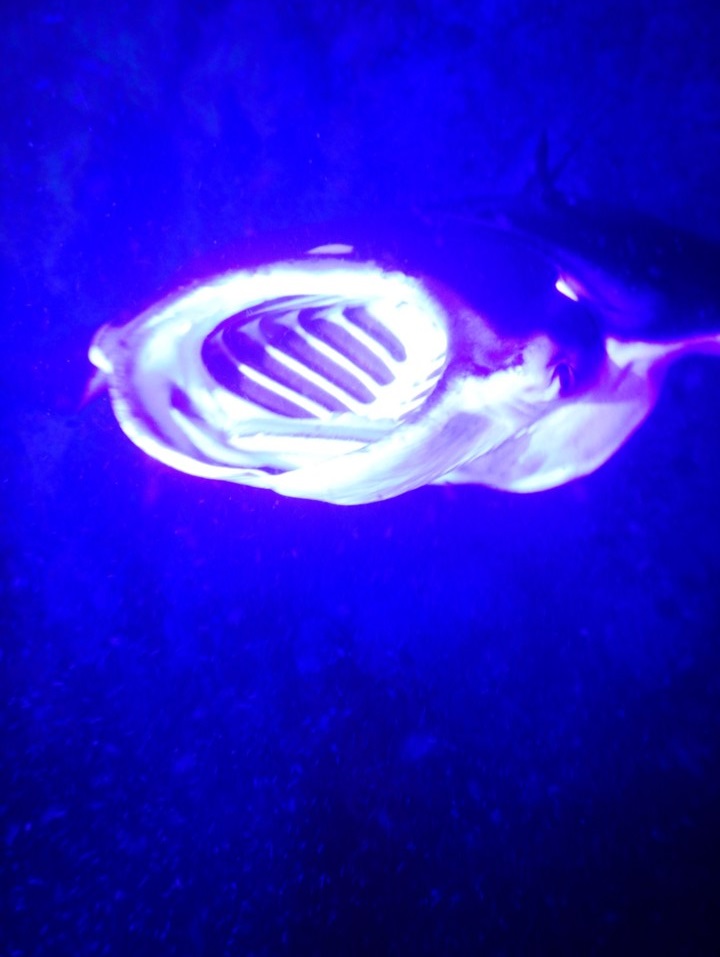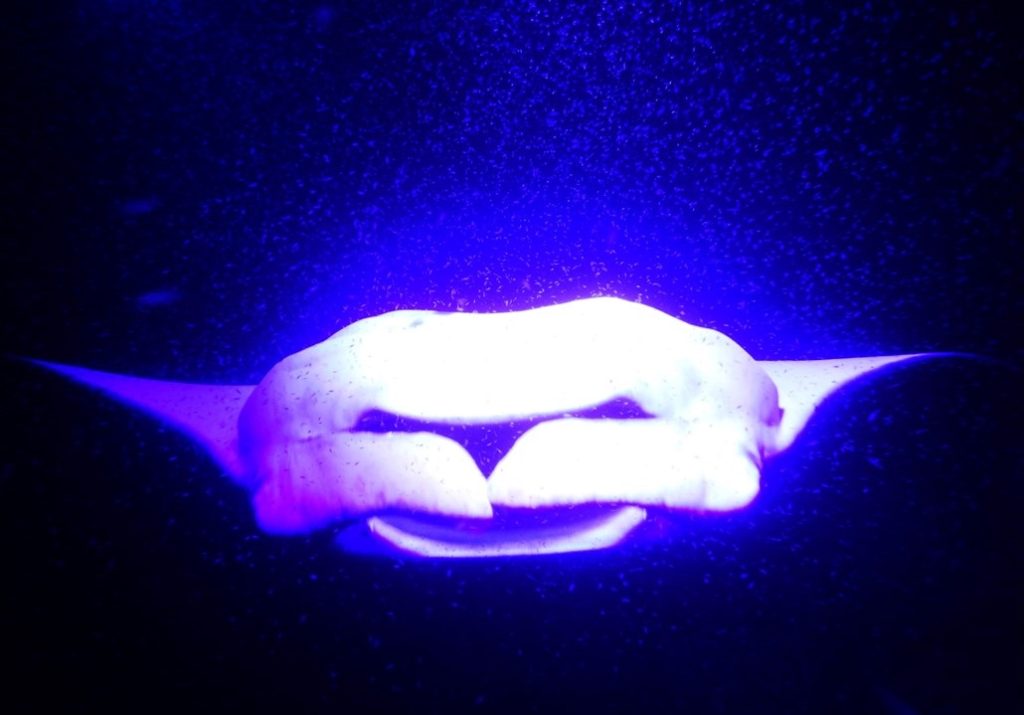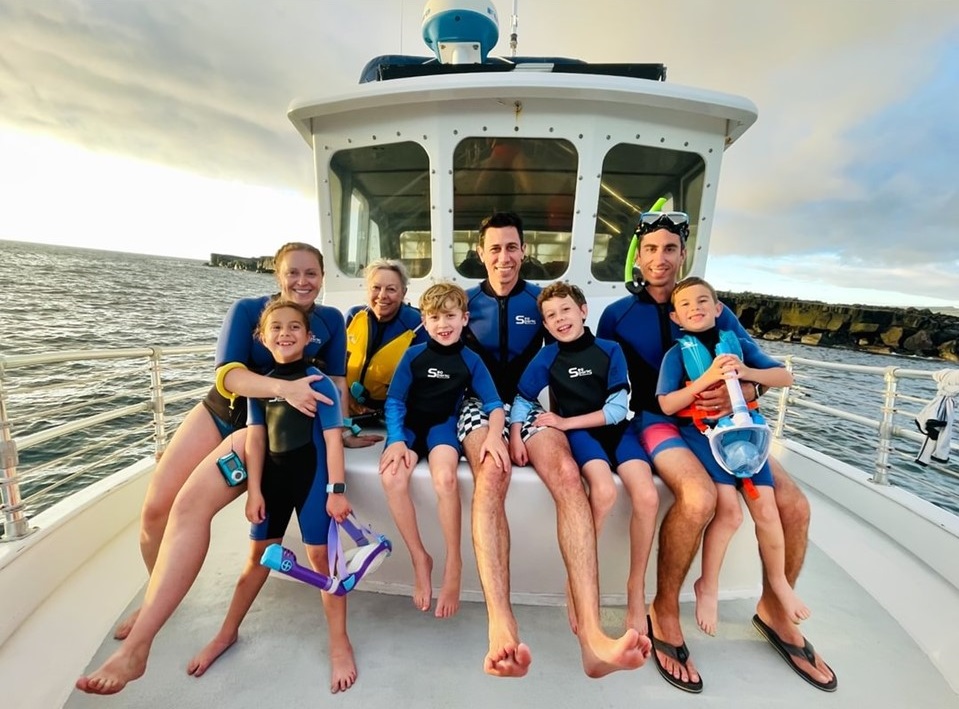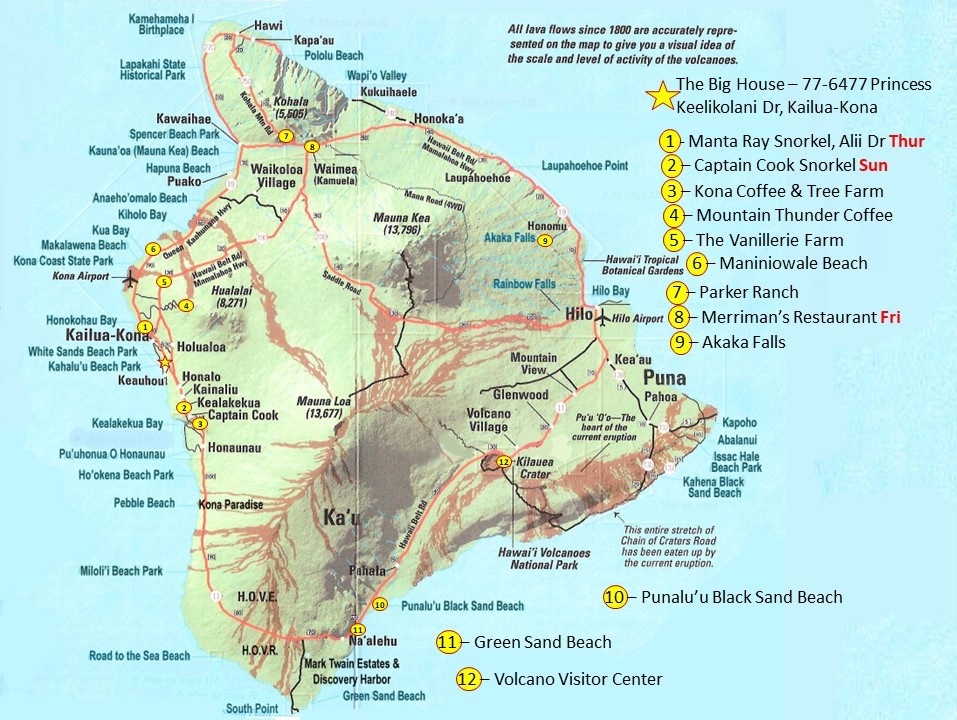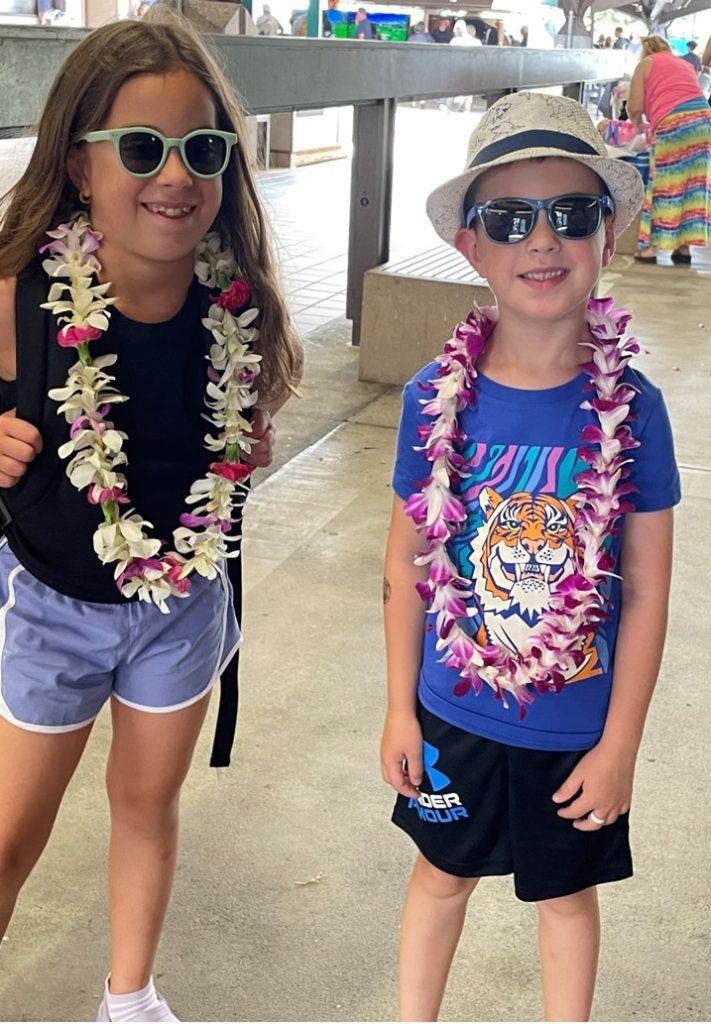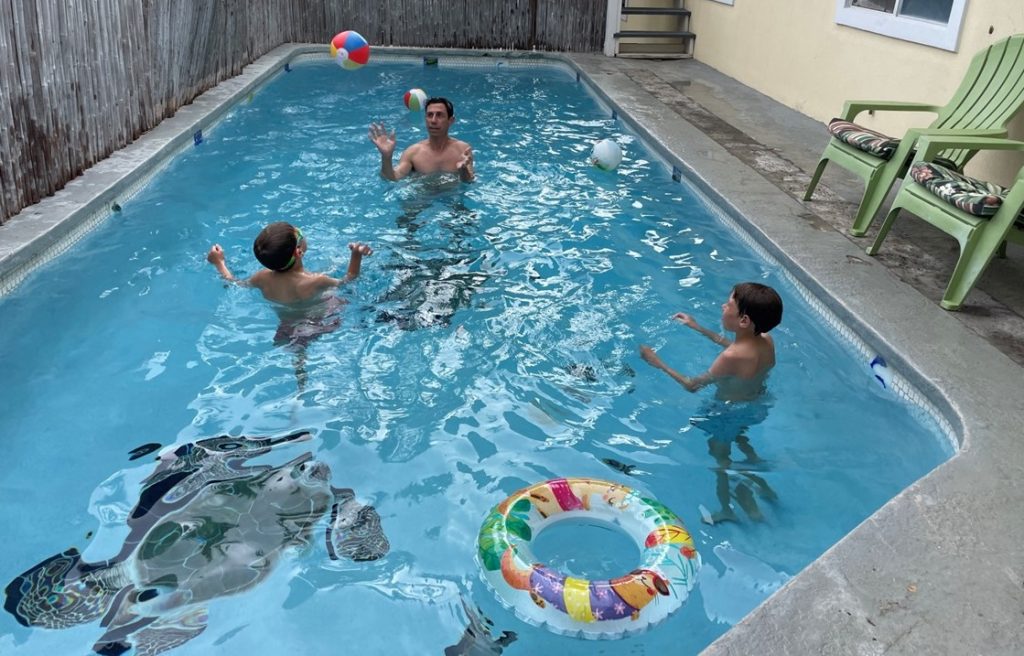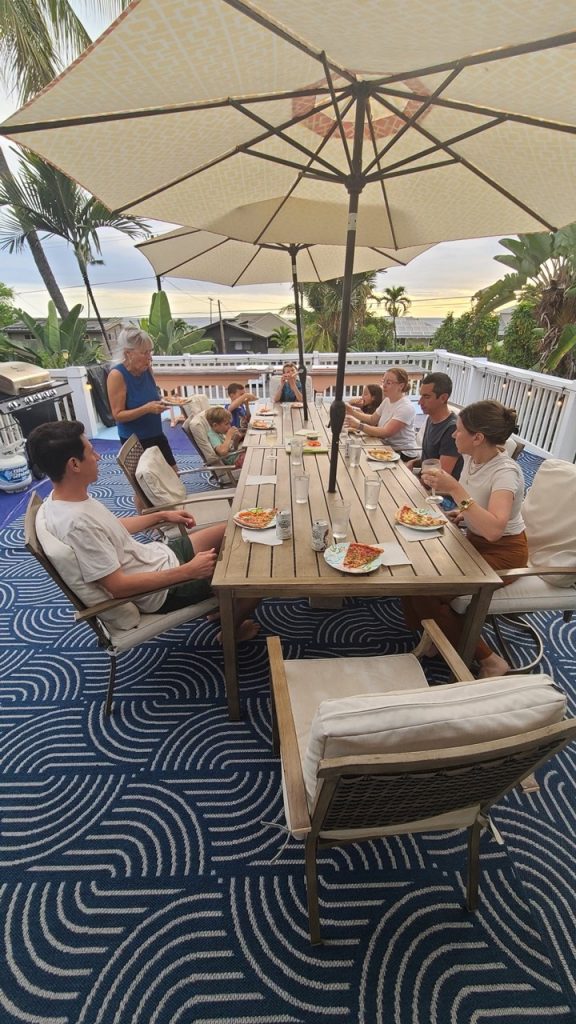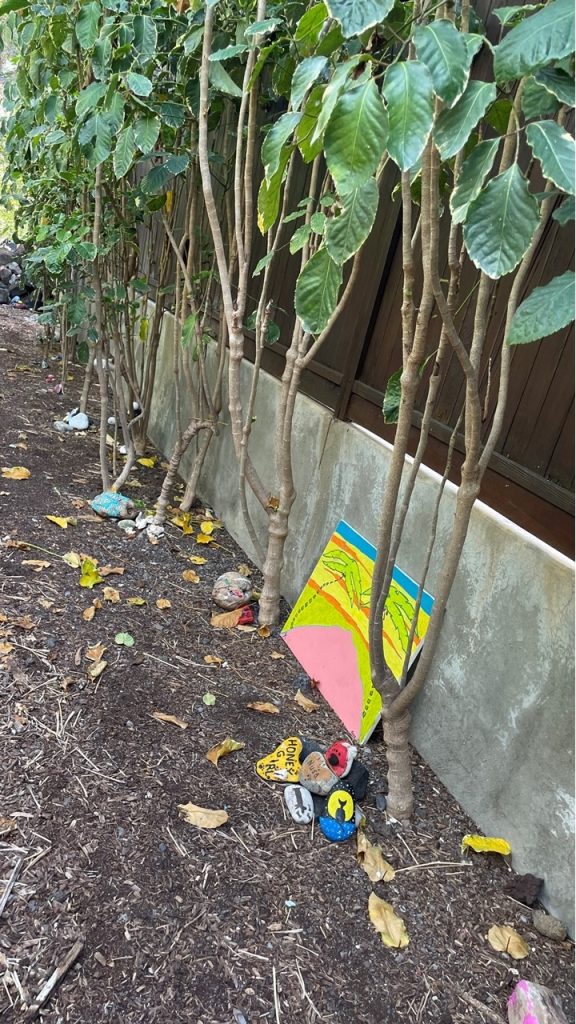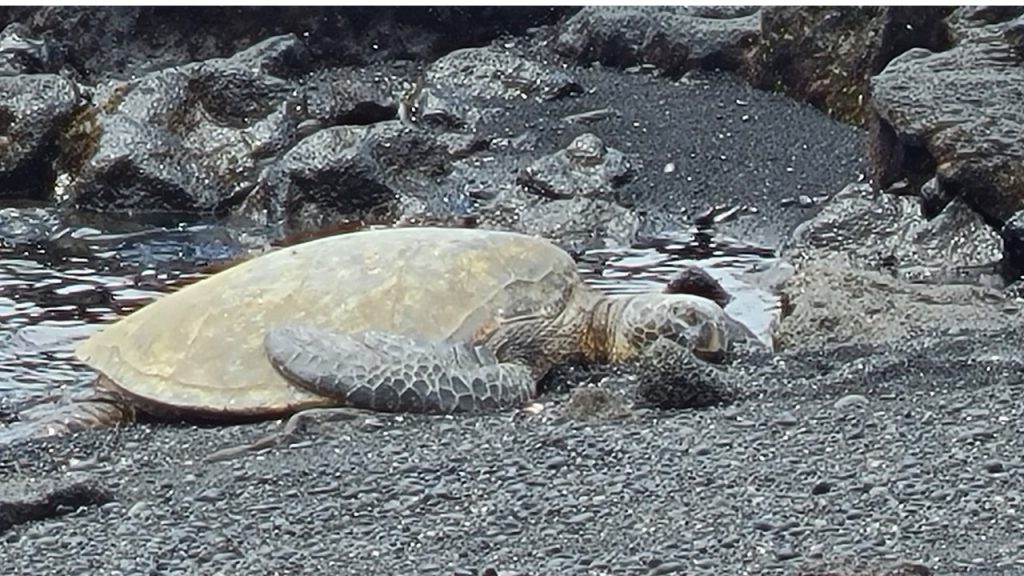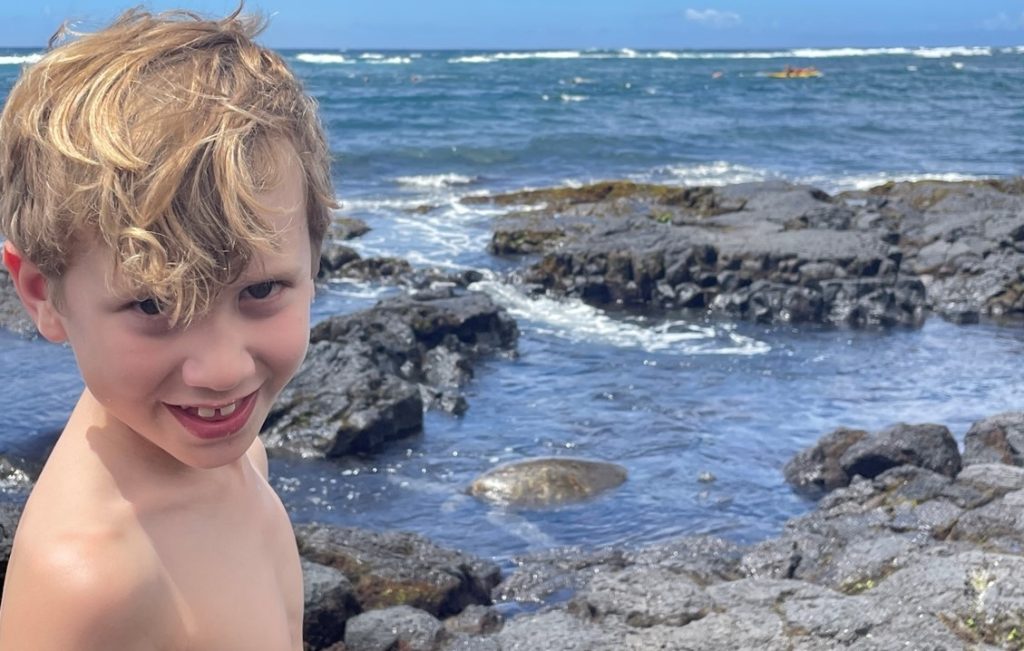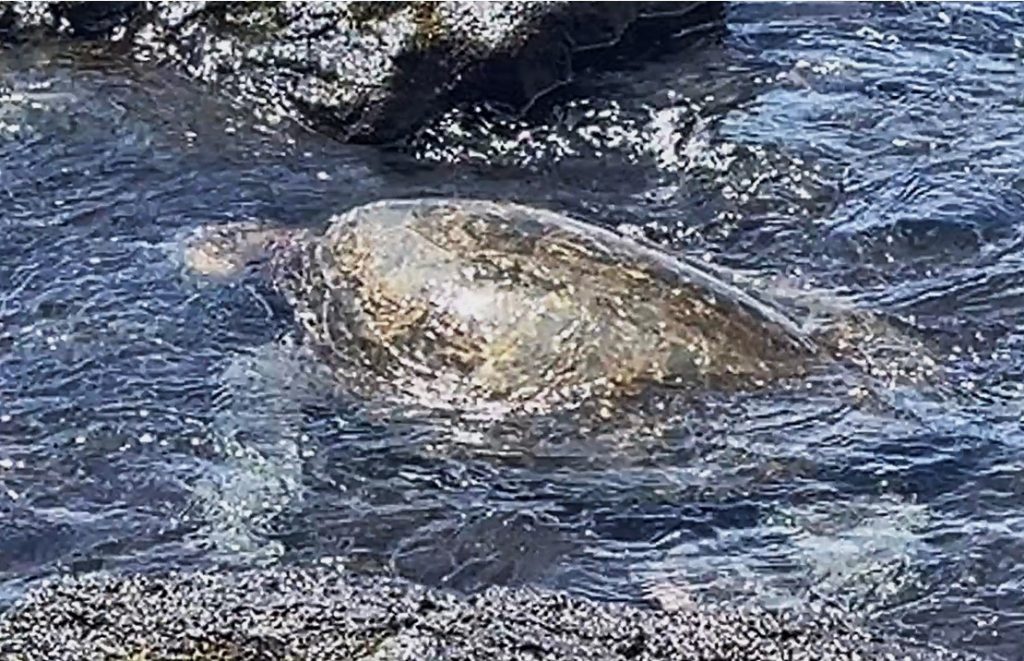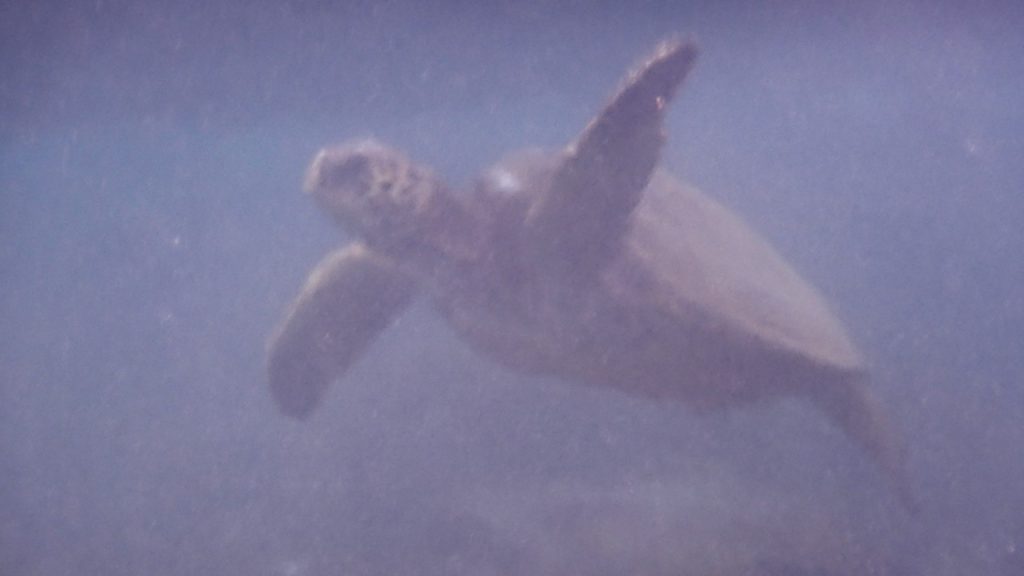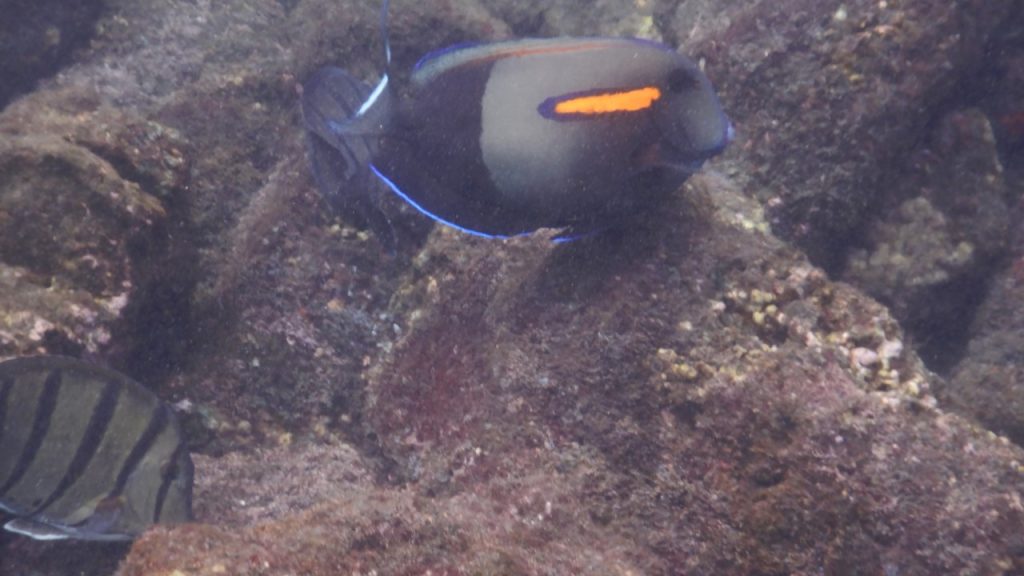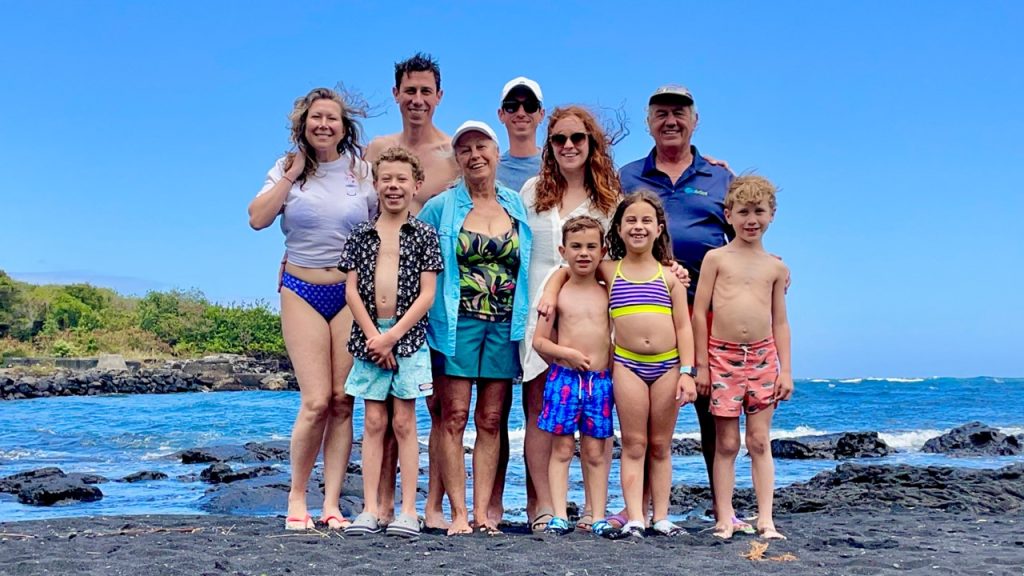Part 4: Tasmania – from West to East & Hobart
The next morning we had an early breakfast so that we could begin our long van ride back to the east coast of Tasmania. The morning was characterized by raining buckets, and all of the luggage had to be moved from our rooms on the pier to the vans via covered golf carts. We departed Pumphouse Point and drove 1-hour before stopping at a fuel station for a bathroom break. Then, 2-hours later we stopped again – this time in the town of Campbell – the cross roads of Tasmanian highways, and a place where the convicts were originally sent to work in the Australian penal colony. Those that were interred and that died here are memorialized by bricks with their names, crimes and sentences etched in the sidewalks located around the town. After a quick local coffee, we are back in the vans until we stop at the Craigie Knowe Vineyard in Cranbrook for a delicious lunch and a wine tasting. Craigie Knowe is the oldest vineyard ion the East Coast of Tasmania, and was started in 1979 by John Austwick, a dentist. In 2013, father and son Glenn & Alex Travers were in the area and decided to bring new life to this now broken-down vineyard. It took 3 years to produce the first grapes – 12 tons but they were on their way and, in 2016, they produced 22 tons of grapes and 25 tons the year after. Next they bought the vineyard next door and today they operate the restaurant, Flora’s, which was where we were having lunch and tasting wine. For lunch, we ate scallops and calamari followed by duck and flat iron steak, all while tasting 6 different wines and then taking a walking tour of the 12-acre vineyard.
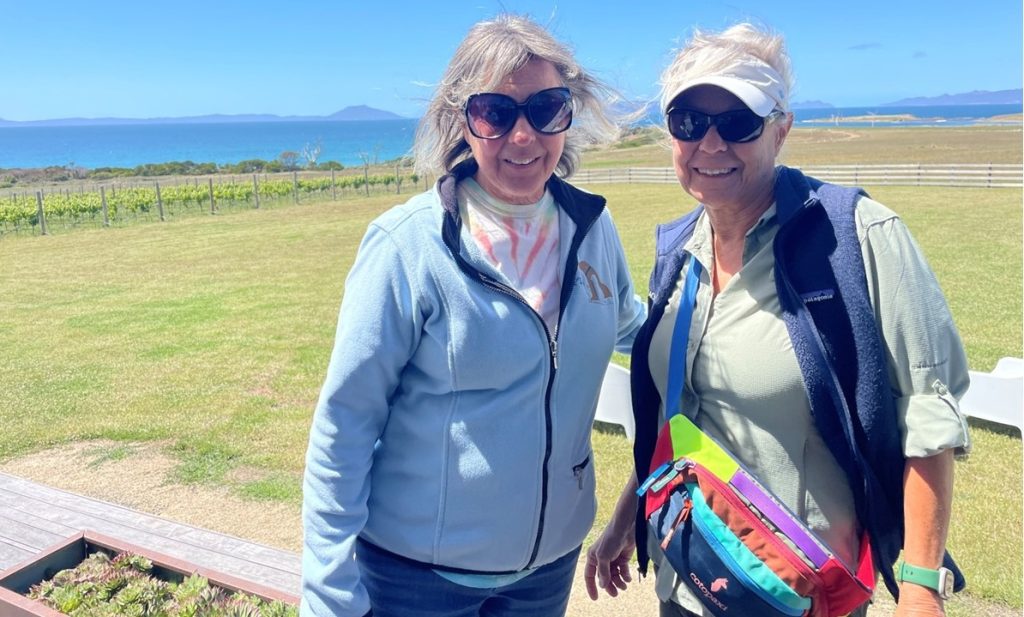

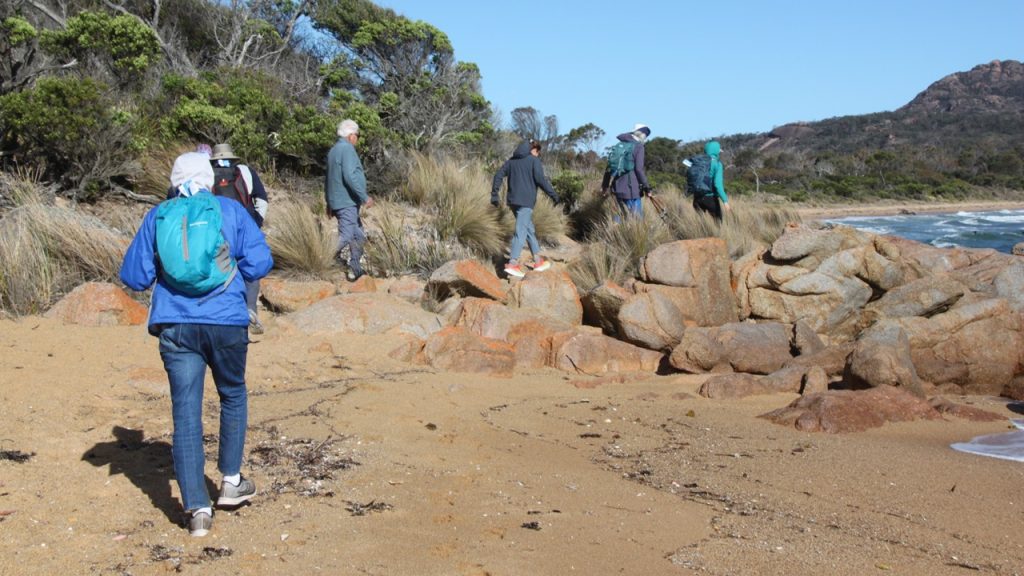
After lunch, we boarded the vans for a 45-minute drive Cole’s Bay at Freycinet National Park. After arriving at the Bay, we hiked a mile on the beach to the spectacular Freycinet Lodge overlooking the bay where we would stay for the next 2 days. After showering we headed to The Bay Restaurant for a family style meal of pork and fish. Tomorrow will be a hiking day.
We began Saturday morning with a leisurely breakfast before receiving a talk about the day’s activities and options, and each receiving a box lunch. The day’s plan is to hike to Coles Bay Lookout and the on to the Wine Glass Bay Lookout in the very popular Freycinet National Park. The hike begins at the hotel where we leave on the trail at 8:30am. The 4 of us leave before the rest of the group to beat the heat of the day, leaving our boxed lunches in our room as we should be back before noon.
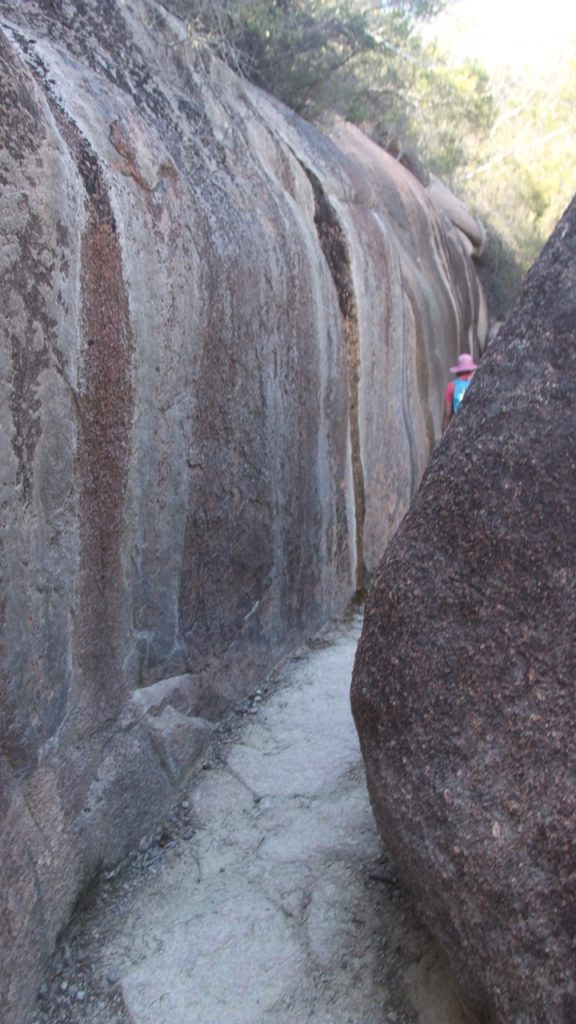
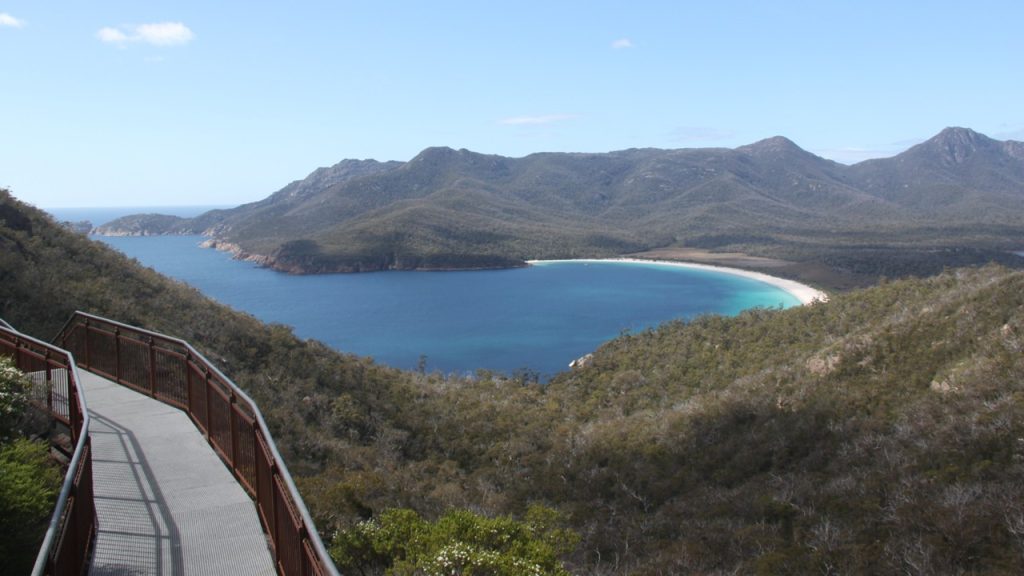
The hike is a five-mile round-trip walk along trails and boardwalks to and from the lookouts. Along the way, we saw a wallaby and a few geckos. It was a sunny and breezy morning, and the hike was uneventful, although there were a lot of steps to climb, (700 ft climb in altitude). The scenic overlooks were fantastic with views of beautiful blue water harbors and extensive beaches. After returning and eating our lunches, we played a few rounds of the card game “Euchre”, before heading back down to Coles Bay Beach to look for sea glass and shells. Rocky jumped in the water and found it was not as cold as it looked. Then we returned to the hotel for snacks, wine, and cards. Dinner that night was at Richardson’s Bistro and consisted of oysters and grilled mushroom appetizers with salmon and pumpkin ravioli.
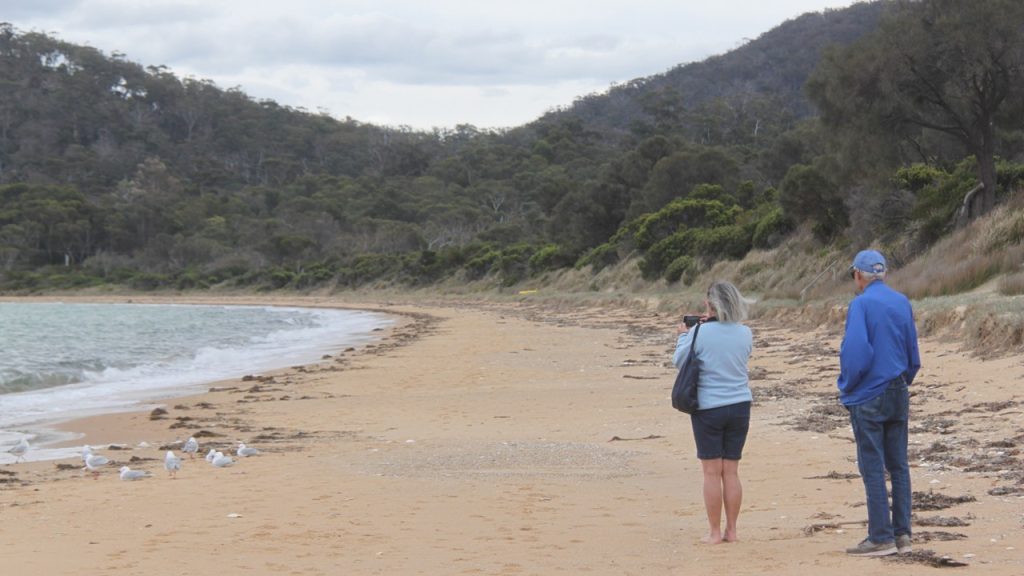

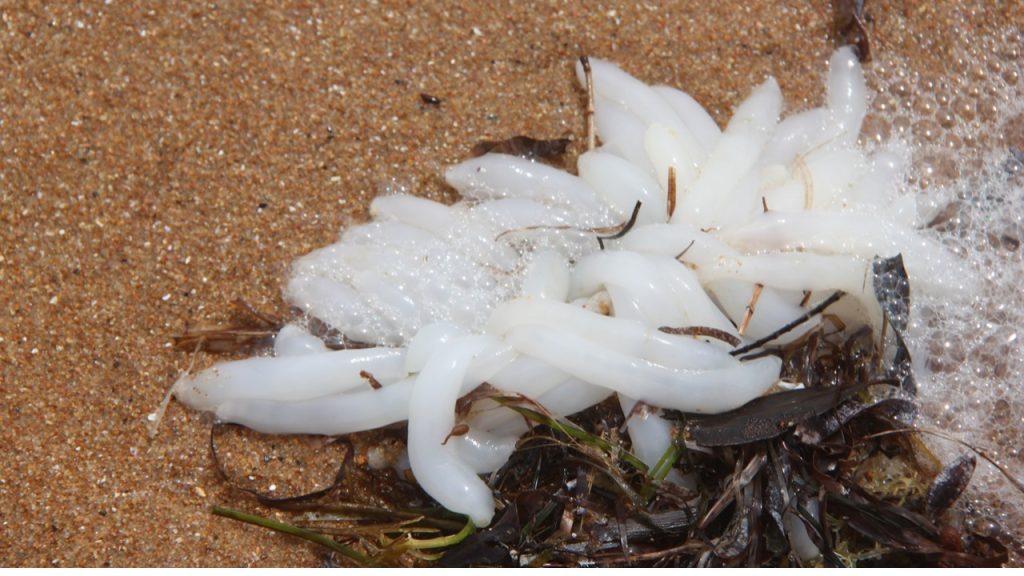
Sunday morning was met with a leisurely breakfast and packing. Today, we dressed in swimsuits under our clothes with a change of dry clothes carried in our backpacks. After a short 10-minute drive to Swan River, we were instructed in how to put on our fleece and foul-weather tops and our kayak skirts, before we moved our 2-person kayaks into the water and set off up-river. The tide was out so we had to avoid running aground in the shallows. Once on the water, we observed manta rays, eagle rays, egrets, pelicans, and numerous other birds in the river channel. Further up the river was a large oyster farm from which the oysters we ate yesterday had sourced from. After paddling up-river near the right bank, we turned the kayaks and paddled across the channel’s rising tide towards the opposite bank. Once we were again in the shallows, we took a break to enjoy the view and munch on some chocolate chip cookies. We then made a large circle around and returned to the dock with no mishaps. When we had dried off we were treated to hot tea and hot chocolate.
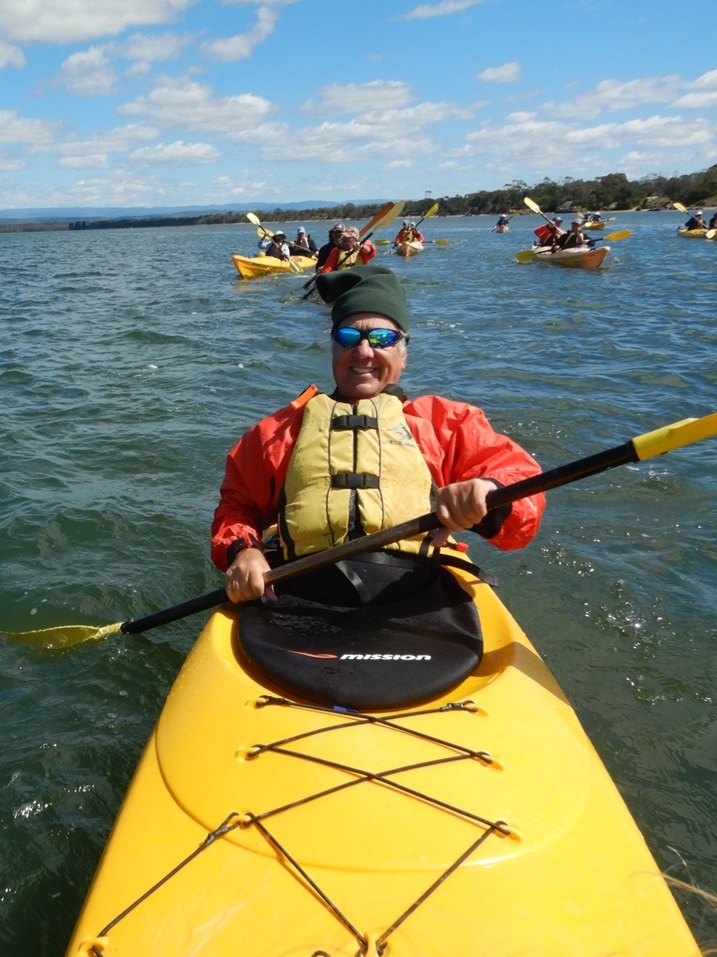
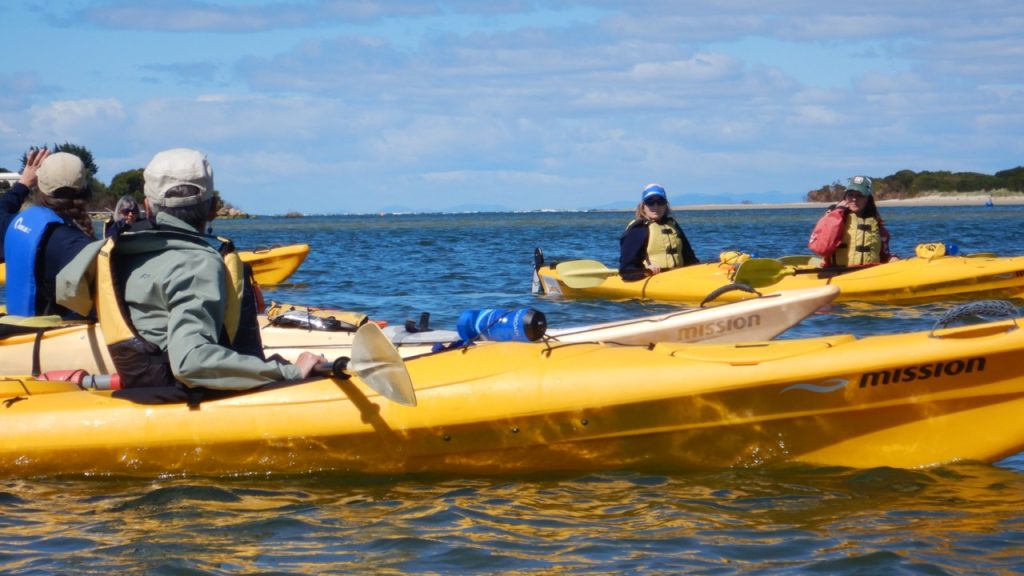
After reboarding the van, we traveled a short distance before stopping at the community garden for a bathroom break and to dress in our street clothes for the 1-hour trip to Mayfield Estate Wine Cellar and Tasman Sea Salt producers for lunch. Two brothers there farmed sheep until a drought came and nearly decimated the estate from 10,000 sheep to only 2,000 sheep. In response, the brothers set about growing grapes in 2010. Now they send the grapes to local wineries and their brands of wine are returned to their restaurant/estate, which is located on a wonderful hilltop venue overlooking the scenery around it. All of their grapes are hand-picked. While we each ordered a pizza from their stone oven, we enjoyed a wine tasting consisting of a sparkling wine, a Chardonnay, a Pinot Gris, a Rose, and a Pinot Noir. The brothers have also continued to raise sheep for their Merino wool, of which 80% is exported to China.
We then shuttled 1.5-hours to Hobart to famous “MACq 01 Hotel” located on the Harbor Waterfront. Our room has a beautiful view overlooking the harbor with a brand new tug boat parked just outside of our balcony. The MACq 01 is a “Story Hotel” with every room and lounge dedicated to the personal story of a Tasmanian individual: see the link: https://www.macq01.com.au/our-story/ . Cocktails that evening were in the “Story Bar” with a selection of hors d’oeuvres, and followed by a 3-course meal in the Old Wharf Restaurant. This was the last dinner we had as a group.
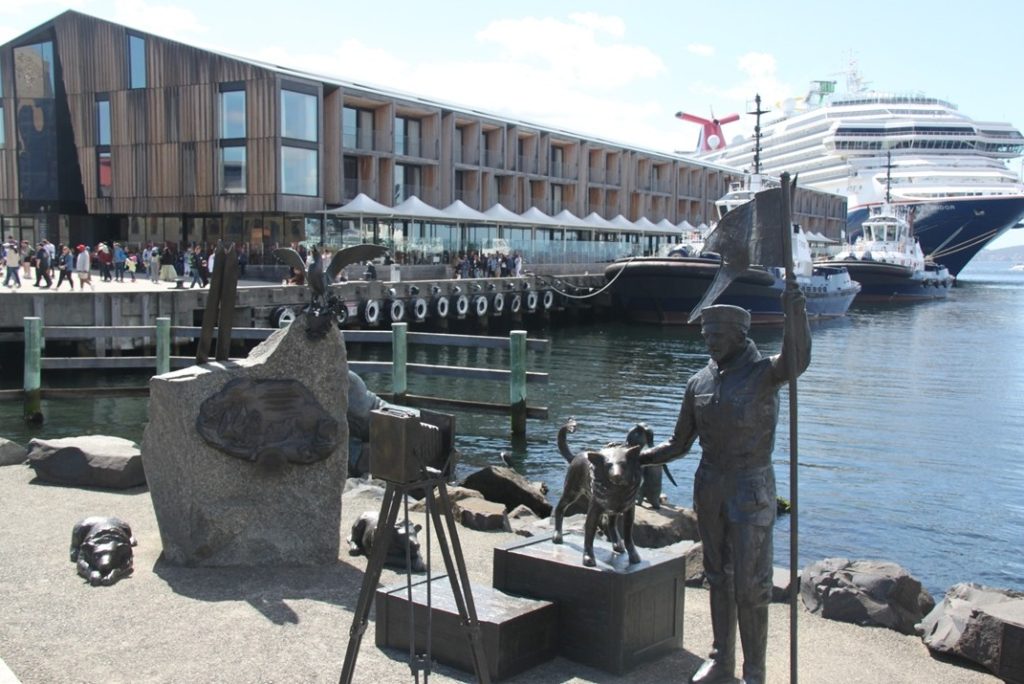
Monday morning we were up for breakfast with Julie’s sister and brother-in-law, as they were departing early to return to the U.S. After breakfast, we met with the remainder of our group for a “story telling” walking tour of the area beginning in the “Evolve Bar.” The “Evolve Bar” is decorated with a unique and valuable collection of fossils that is the private collection of the hotel owner. Once the introduction ended, we took an initial walk around the square surrounding the hotel, learning the history of various buildings and parks and how they became part of Tasmania’ history.
In 1642, the first white man who came to Tasmania was Abel Tasmania, the captain of a Dutch ship working under the sponsorship of Anthony van Diemen, the Governor-General of the Dutch East Indies. Later, 150 visitors and scientists came from France to study the strange and previously unknown animals and flora. When the British established a settlement there in 1803, they retained the name, “van Diemen’s Land”. Then, in 1825 it became a separate penal colony when John Bowman brought 50 convicts there. It soon became notorious for its harsh treatment of prisoners and for its reputation for being inescapable. Then, in 1856, the name was changed from Van Damien’s Land to Tasmania to distance it from its brutal reputation.
Today, Hobart is the second deepest port in the world and has traditionally been a breeding ground for Southern Right Whales, (so called because during the whaling industry times, they were the “right” whales to hunt!) It was said that at one time, there were so many whales in Hobart’s harbor that you could walk on their backs across the water. Today, there are few whales left that visit the harbor as most are up closer to Melbourne. We walked to Battery point – the oldest residential neighborhood in Tasmania where today over 60% of its citizens have convict heritage. Much of the port today is surrounded by reclaimed land that once held valuable warehouses and factories. We walked by the Henry James IXL Building – a company established in 1891 as a manufacturer of jams, conserves. However, by the 1970-1980’s the port area had become an area of slums and poverty. Then, in 1990, the area was restored and is a bustling shopping area today. The population of Hobart is only ~250,000 people – nearly half the population of Tasmania.
We then visited Franklin Square named for British explorer Sir John Franklin; a British Royal Navy officer, explorer and colonial administrator who was knighted in 1829 and who served as governor of Van Diemen’s Land from 1836 to 1843. He later took 128 men in 1845 to search for the North West passage. However, his ships got stuck in the ice and their fate was never discovered for 12 more years when a written account in a diary was discovered detailing their journey, starvation, and deaths. Their ships were never found until 2014 & 2016.
We then toured St. David’s Park – the largest park in Hobart and one that was once a cemetery. After the cemetery fell into disrepair, it was redesigned in 1925 as a classic Victorian garden, with lawns, flower beds, and a variety of native and exotic trees. The gravestones and burials of the cemetery’s inhabitants are still there.
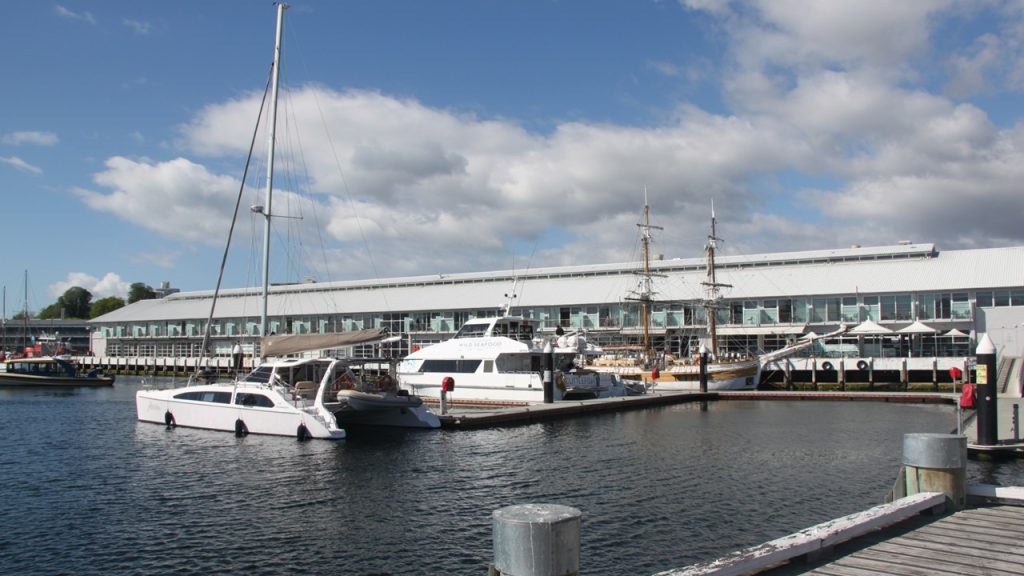
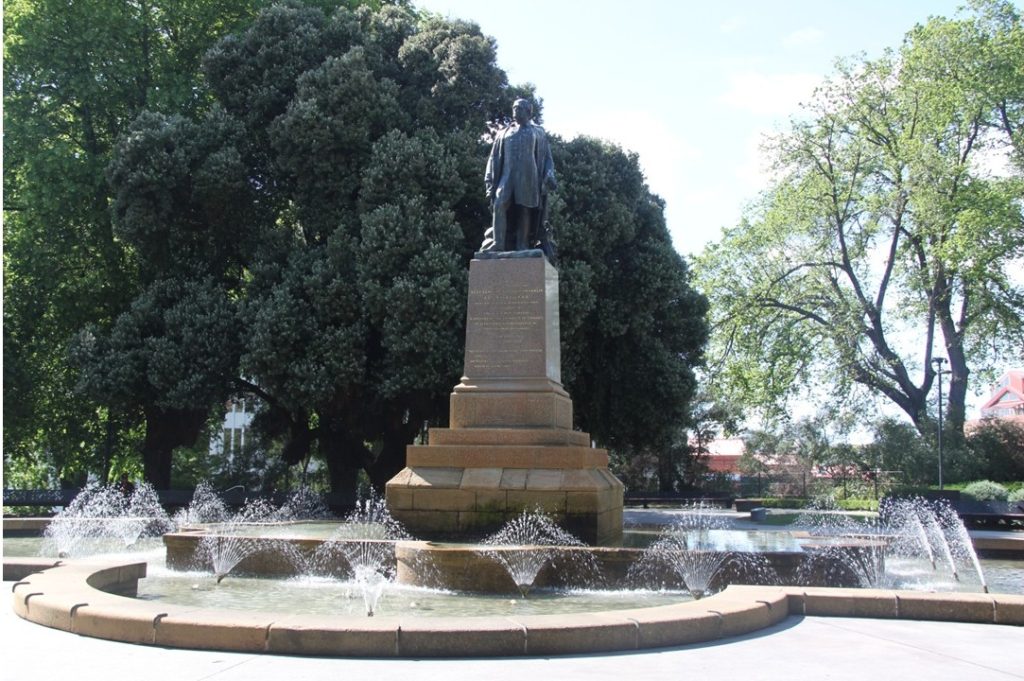
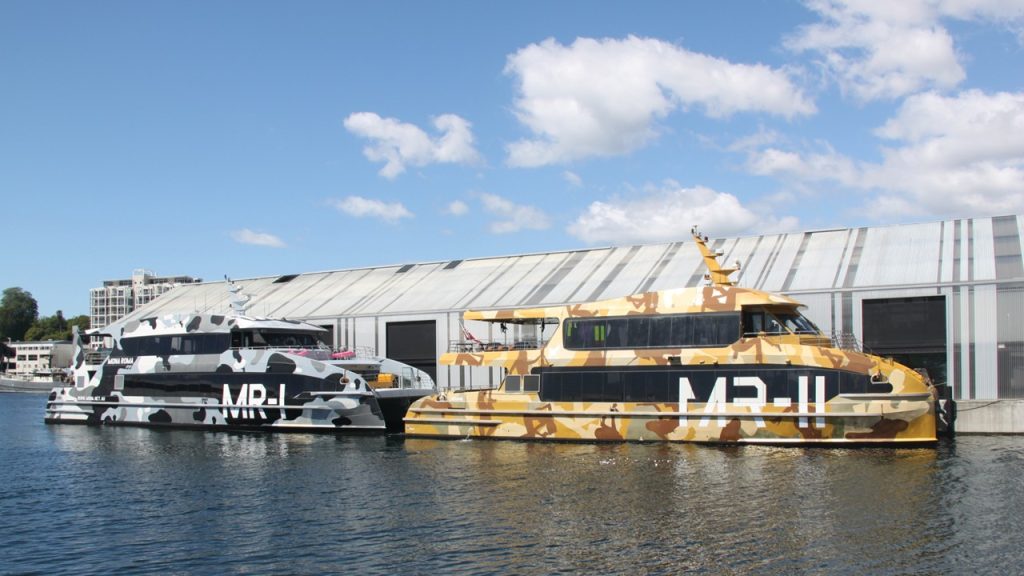
After the tour and back at the hotel we checked out and left our bags in storage there while we did some shopping. We bought souvenirs and stopped at Mures for a lunch or fish and chips with a beer. Then, it was time to leave Tasmania and we returned to our hotel, picked up our luggage, and took an Uber to the airport for our 2-hour flight to Sydney, Australia where we stayed overnight in the airport hotel. The next morning we boarded a 16-hour flight back to Houston and connected to a 2.5 hour flight back home to Florida. A wonderfully adventurous trip, indeed.
